SEB
CLARION CONGRESS HOTEL
2 - 5 JULY 2024
SEBIOLOGY.ORG
#SEBCONFERENCE


































SEB
CLARION CONGRESS HOTEL
2 - 5 JULY 2024
SEBIOLOGY.ORG
#SEBCONFERENCE







































































We are delighted to welcome you to the amazing city of Prague for our SEB Annual Conference 2024. This year, we have an exciting scientific programme with a diverse range of sessions across our three main sections: Animal, Cell, and Plant Biology. These sessions cover broad topics including Genomics, Ecology, Physiology and Behaviour, Biomechanics, and Cellular Biology. In addition, we have a number of sessions dedicated to Outreach, Education, and Diversity (OED), featuring discussions on advancing your teaching career, creating diverse curricula, and collaborating with industry.
We are also excited that this year, SEB journals will host interactive workshops on science communication and academic peer review, providing practical opportunities and valuable advice.
We look forward to an inspiring and enriching week, filled with opportunities to share knowledge, foster collaborations, and explore the latest advancements in experimental biology.
Welcome to Prague, and enjoy the conference!


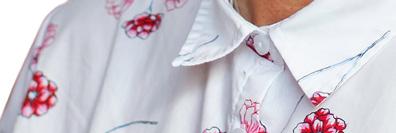


LAWSON, PRESIDENT OF THE SOCIETY FOR EXPERIMENTAL BIOLOGY.
AS WE STRIDE INTO 2024, WE ARE PRESENTED WITH AN EXCITING OPPORTUNITY TO DEVELOP THE NEW FUTURE 5- YEAR STRATEGY FOR THE SOCIETY,
I am greatly looking forward to the SEB traditional distinguished Plenary Award and lectures with internationally renowned winners of research awards. Professor Ijeoma Florence Uchegbu from University College London will give the Cell Plenary lecture on “Controlling in Vivo Drug Transport Using Nanotechnology”. The Bidder lecture will be presented by Professor Tobias Wang, Aarhus University on “The Glutenous Python: Integrative Physiology in Feast and Famine”, and Professor Seung Yon Rhee from Michigan State University, will deliver the Woolhouse lecture covering “Cell Biology Meets Metabolism: Knowledge Gaps and Opportunities in Metabolic Cell Biology”. We are also excited to award President’s Medals and hear from the following outstanding young scientists: Dr Mootaz Salman, University of Oxford (Cell); Dr Pallavi Singh, University of Essex (Plant) and Dr Tommy Norin, DTU Aqua (Animal). Additionally, we have a number of social events. We kick-off with our ECR networking evening which provides an informal evening event to bring together ECRs across our sections. On Thursday evening we will
hold our awards dinner, held at the historic National House Vinohrady; and on Friday we will end with the SEB Diversity Lunch to allow us to celebrate diversity in the scientific community. This annual event and programme would not be possible without the hard work, dedication and support from the SEB staff who do all the work behind the scenes to make these events so memorable and I would like to take this opportunity to say a huge thank you to the entire team on behalf of the trustees.
As part of this letter I would like to take the opportunity to emphasize the invaluable financial support provided for this meeting by our society journals, and to stress the importance and significance of backing the SEB journals. The financial sustenance of our annual meeting is only made possible through the contributions of our affiliated journals, namely the Plant Journal, Plant Direct, Plant Biotechnology, and Conservation Biology, which are partly owned by the SEB, along with our wholly owned Journal of Experimental Botany (JXB). Each year, the annual meeting operates at a financial defi cit, which is bridged by the royalties and profits from our journals. I am prompted to raise this topic because next year in 2025, JXB will mark its 75th anniversary, and we eagerly anticipate commemorating this milestone and recognizing their steadfast support. As we chart our course ahead, we have initiated discussions this year regarding possible mechanisms to transition JXB to a fully open-access model. Currently, JXB operates as a hybrid journal, offering two publishing pathways: 1) papers are accessible for free under subscription control for 12 months, after which they become freely accessible; 2) an openaccess license, with articles published under a Creative Commons license, accompanied by an article processing charge (APC). Both the SEB and JXB are enthusiastic
about moving towards full open access, however as the transition to OA is likely to bring a significant reduction in income, we need to ensure that the timing is right, and we are actively exploring mechanisms to ensure financial viability for both SEB and JXB.
We will keep members updated, however in the meantime I would like to remind our members of the importance of supporting our society journals by publishing in them. This also provides me with the opportunity to extend an enormous thanks to Professor Martin Parry who has been our Publications officer and trustee for the SEB since 2012. He has done a fantastic job of bringing the society and journals together and has been an invaluable member of council. Martin (unfortunately) stepped down at the end of April, and in the interim period his role has be covered by Dr Diana Santellia, who we hope will be elected into the position in June.
As we stride into 2024, we are presented with an exciting opportunity to develop the new future 5- year strategy for the society, laying the groundwork for the paths and endeavours that will shape our future. At the heart of our mission lies a commitment to provide resources, unwavering support, and opportunities to our members across our three scientific sections: Animal, Cell, and Plant. As part of this we recognize the pivotal role of nurturing the next generation of scientific leaders and pioneers. Central to this endeavour is our OED (outreach, education and diversity) section spearheaded by our OED trustee Dr Sheila Amici-Dargan alongside Dr Rebecca Ellerington our SEB OED manager.
This section plays a pivotal role in nurturing talents and aspirations, providing essential resources, guidance, and opportunities for personal and professional development.
Moreover, I would like to take this opportunity to remind our members of the wealth of resources available on our website, particularly within the Careers and Outreach section. Here, you will find an array of invaluable tools, including Career Development Resources, workshops, talks, and job listings, as well as a comprehensive guide to transferable skills, tailored for both undergraduate and school students. The Outreach section also offers a range of publications and teaching materials, including biology practicals designed for higher education. I am delighted to underscore that our platform serves as a collaborative space, where members are encouraged to share and submit practical resources that can offer support to their peers. I urge each of you to seize this opportunity to disseminate this invaluable information to others who may benefi t from it, which helps us to develop our supportive community of scholars and researchers within our society. I would also like to thank our dedicated team at the SEB for their collective commitment to developing these resources.
I hope you enjoy this entire week and the meeting. It offers an incredible opportunity to reconnect with old friends and colleagues while fostering new connections and expanding our networks. These gatherings create a scientific family that accompanies us throughout our careers. I eagerly anticipate our conversations this week.
Professor Tracy Lawson President, Society for Experimental Biology

Clarion Congress Hotel Prague, Freyova 945/33, 190 00 Praha 9-Vysočany, Czechia
Free Wi-Fi is available at the Clarion Congress.
Login to wifi network “Congress”
Login details:
Email: SEBCONFERENCE24@clarion.cz
Password: SEBCONFERENCE24
Name badges for the Annual Conference will contain a barcode which will be scanned on entry each day to record attendance at the conference and each session. This will be used for SEB administrative purposes only. Each badge contains the following information which has been supplied during the registration process: name and institution. Badges must be worn for the duration of the conference, both for security purposes and for entry into the scientific sessions and networking events.
Certificates of attendance will be sent out to all presenters in the weeks following the conference. If you do not receive one, they can be requested by email from events@sebiology.org
The exhibition area is the place to meet with our many scientific exhibitors – whether you are looking for a publisher for your next paper or an essential piece of scientific equipment. As well as housing the exhibitors, we will be using the exhibition area for refreshment breaks.
If you are giving a talk at the Annual Conference, you will need to upload your presentation in the speaker preview room (Stella room). The room will be clearly signposted during the conference.
At this year's Annual Conference, poster presenters are able to hang their posters for the duration of the conference. Presenters will be able to hang their posters from 08:00 on Tuesday 2nd July. Posters must be removed by 14:00 on Friday 5th July. Posters entered into the Irene Manton Poster Prize will be judged during the poster session.
Photographs will be taken throughout the conference for SEB promotional purposes including use on our website and marketing materials and in the press. If you have any concerns or queries regarding this, please visit the SEB registration desk.
Neither the Society for Experimental Biology nor the Clarion Congress will accept responsibility for damage or injury to persons or property during the conference. Participants are advised to arrange their own personal health and travel insurance.
#SEBCONFERENCE @SEBiology www.facebook.com/SEBiology
• Childcare - Zodiac room
• Prayer Room - Available on request, please speak to the registration desk
• Breast Feeding Room - Available on request, please speak to the registration desk
• Printing - Registration desk
• Speaker Preview Room - Stella Room

The work of American Physiological Society (APS) members focuses on a wide variety of disciplines devoted to human and animal health and function—including systems biology, genomics, translational research and all other areas of life sciences.

Join APS today and gain access to lifelong benefits, meaningful connections and essential resources for your journey to success. physiology.org/join




Karla Haack, PhD Associate Medical Writer Merck, Atlanta






07:30 - 08:55 Registration & opening of exhibition
08:55 - 09:00 Presidents Welcome - pre- recorded from SEB President Tracy Lawson streamed across all sessions and screens
09:00 - 10:30 A21
10:30 - 11:00
11:00 -
11:30 -
12:00 - 12:30 Plant President Medallist Talk - Meridian room
12:30 - 13:30 Lunch / Exhibition
12:30 - 13:10 JEB Meet the Editors – Craig Franklin
13:30 - 15:00
15:00 - 15:30
10:30 - 11:00 Refreshment Break / Exhibition
11:00 - 12:30
12:30 - 14:00
14:00 - 15:00
16:30 - 17:00
17:00 - 18:00 YSAS Talks - 20 mins each - Meridian, Zenit and Nadir rooms
18:00 - 20:00 Poster session - 1hr each odd/even numbers
10:30 - 11:00
KEY
A2 FROM THE LAB TO THE FIELD: INCORPORATING ENVIRONMENTAL RELEVANCE INTO EXPERIMENTAL BIOLOGY
A3 GENOME ARCHITECTURE AND POLYPLOIDY IN ANIMALS AND ITS ROLE IN THE EVOLUTION OF PHYSIOLOGICAL PLASTICITY.
A4 INNOVATIVE METHODS AND TECHNIQUES IN BIOMECHANICS
A5 INTERDISCIPLINARY APPROACHES IN BIOACOUSTICS: CELLS, BEHAVIOR, AND MECHANICS
A6 INVISIBLE FRIENDS: MICROBIOME IN ECOEVOLUTIONARY RESEARCH
A7 EMBRACING VARIABILITY - WHY IT MATTERS AND WHAT TO DO WITH IT
A8 LINKS BETWEEN PHYSIOLOGY AND BEHAVIOUR IN A CHANGING WORLD
A9 MECHANICS OF MECHANORECEPTION ACROSS SCALES AND KINGDOMS
A10 MEMBRANE AND EPITHELIAL TRANSPORT PHYSIOLOGY ACROSS TAXA
A11 NOT ALL STRESS IS BAD: UNDERSTANDING PROTECTIVE STRESSOR INTERACTIONS IN CHANGING ENVIRONMENTS
A12 OMICS IN COMPARATIVE ANIMAL PHYSIOLOGY
A13 POWERING THROUGH: MITOCHONDRIAL PLASTICITY AND HOMEOSTASIS UNDER PHYSIOLOGICAL CHALLENGES.
A16 TIPPING THE SCALES: BALANCING ENERGY ACQUISITION, EXPENDITURE, AND ALLOCATION IN AN EVER-CHANGING WORLD
A17 EXPLORING THE MECHANISMS, PROCESSES, AND EVOLUTIONARY IMPACTS OF TRANSGENERATIONAL PLASTICITY
A18 PHENOTYPIC PLASTICITY AND ACCLIMATION MECHANISMS IN A CHANGING WORLD
A19 VERTEBRATE CARDIORESPIRATORY PHYSIOLOGY
KEY
A21 BIOMECHANICS
A22 OPEN ANIMAL
P1 ADVANCING PLANT NUTRITION IN THE AGE OF SYSTEMS AND SYNTHETIC GENETICS
P2 FROM SENSING TO REMEMBERING: PLANTS' RESPONSES TO TEMPERATURE FLUCTUATIONS
P3 GENOMIC AND EPIGENETIC PLASTICITY IN PLANTS
P4 NANOMATERIAL-BASED BIOSENSING IN PLANT AND ENVIRONMENT
P5 NOVEL MECHANISMS OF RECEPTOR KINASE ACTIVATION IN PLANTS
P6 PEPG: INTEGRATING GENOMICS AND PHENOMICS FOR CROP IMPROVEMENT
P7 TRANLATIONAL PLANT BIODIVERSITY
C3 THE CYTOSKELETON ACROSS KINGDOMS
C4 CHROMOSOME INSTABILITY AND DNA REPAIR
OED1 COLLABORATING WITH INDUSTRY: MEETING LIFE SCIENCES SECTOR SKILLS NEEDS
OED2 ENHANCING ASSESSMENT AND FEEDBACK IN HE BIOLOGY PROGRAMMES
OED3 FROM CLASSROOM TO COMMUNITY: APPLIED FRAMEWORKS IN ACTION
OED4 MAKING YOUR SCHOLARSHIP COUNT
OED5 ESTABLISHING, EVIDENCING AND EXCELLING IN YOUR TEACHING CAREER
OED6 USING DATA TO ADDRESS EQUALITY GAPS IN STUDENT OUTCOMES
OED7 EMBEDDING EQUALITY, DIVERSITY AND INCLUSION INTO THE BIOSCIENCE CURRICULA
SAB2 PLANT EPIGENETICS: FROM MODELS TO CROPS
SAB3 REPRODUCTIVE SENESCENCE: HOW, WHAT, WHEN, AND WHY?


The ‘seb Journals’ stand will be staffed by the society’s editorial team. If you have any questions about the journals, please come and see us.




The seb’s editorial office is running a workshop on peer review (9.00–10.30am, Tuesday 2nd July). In this interactive session, participants will learn how to write high-quality peer reviews in line with best scientific practice and ethical norms. We shall also discuss different peer review models and future challenges that the peer review system has to master.



•Impactful applied plant science
•Open access, online publishing
•High Altmetric scores
•Expert editorial board
• Owned by the SEB & the AAB
•Considers short research papers

•Diverse and supportive editorial board
•Fast time to first decision
•OA Research Highlights every issue
•Annual special issue
•TPJ Fellowships to support new group leaders
•Annual Outstanding Paper Prizes
•Serving the plant science community since 1950
•Editorial Internship programme

•Diverse & experienced editorial board
• Society-run editorial office
• 100% of profits reinvested in the community
•Accessible eXtra Botany section
•Ten special issues every year, helping to fund scientific meetings



•Progressive on open data
•Discounted publishing fees for SEB members
•Constructive peer review
•Format-free submission
•Supportive of ECRs
•Committed to a high standard of ethics
•Open access, online publishing
•Considers White Papers
•Rapid and transparent publication
•Owned by the SEB and the ASPB
•Considers Registered Reports
•Transfer relationship with many plant journals
•Discounts for pre-printed manuscripts



Come and talk to the journal editors at an informal session at lunchtime in the lunch room on Wednesday 3rd July. The society’s editorial staff will also be there to answer your questions.




•Field-defining editorial board
•Open access, online publishing
•Dedicated editorial staff
•Community-led special issues
•Considers replication studies





The SEB is:
•a signatory of the Declaration on Research Assessment (DORA)
•committed to open access and open data
•dedicated to achieving the highest standards of ethics in publishing
All of the SEB’s income from its journals is used to support the society’s work and charitable activities, including:
•running scientific meetings (SEB Conference, SEB Symposia, supporting smaller meetings)
•training, outreach and engagement work in the community
•the provision of grants for small meetings

MONDAY 1 JULY
REGISTRATION DESK OPEN
Time: 13:00 – 17:00
Location: Entrance Foyer, Clarion Congress Hotel Prague, Freyova 945/33, 190 00 Praha 9-Vysočany, Czechia
Price: Free with conference registration
JOURNAL OF EXPERIMENTAL BIOLOGY: SCIENCE COMMUNICATION WORKSHOP FOR EARLY CAREER RESEARCHERS
Time: 14:30 - 17:30
Location: Aquarius room, Clarion Congress Hotel Prague
Price: Free with conference registration (limited spaces)
ECR NETWORKING EVENING
Time: 18:00 – 20:00
Location: American Bar, Municipal House, Vyšehrad 2000, a.s., Náměstí Republiky 5, 111 21 Staré Město, Czechia
Price: £15 per person as a ticket add-on at registration (subject to availability)
ANIMAL PRESIDENT MEDALLIST TALK
Time: 11:00 – 11:30
Location: Meridian Room
Speaker: Tommy Norin
Price: Free with your conference registration
CELL PRESIDENT MEDALLIST TALK
Time: 11:30 – 12:00
Location: Meridian Room
Speaker: Mootaz Salman
Price: Free with your conference registration
PLANT PRESIDENT MEDALLIST TALK
Time: 12:00 – 12:30
Location: Meridian Room
Speaker: Pallavi Singh
Price: Free with your conference registration
JOURNAL OF EXPERIMENTAL BIOLOGY – MEET THE EDITORS
Time: 12:30 – 13:10
Location: Taurus Room
Speaker: Ijeoma Florence Uchegbu
Price: Free with your conference registration
CELL PLENARY LECTURE
Time: 17:00 – 18:00
Location: Meridian Room
Speaker: Ijeoma Florence Uchegbu
Price: Free with your conference registration
WELCOME EVENING RECEPTION
Time: 18:00 - 19:30
Location: Clarion Congress Foyer (around the exhibitors and poster boards)
Price: Free with your conference registration
MEET THE EDITORS LUNCH
Time: 12:30 - 14:00
Location: Veduta Lounge (inside Restaurant Veduta)
Price: Free with your conference registration
WOOLHOUSE LECTURE
Time: 14:00 – 15:00
Location: Meridian Room
Speaker: Seung Yon Rhee
Price: Free with your conference registration
YSAS ANIMAL TALKS
Time: 17:00 - 18:00
Location: Meridian Room
Price: Free with your conference registration
YSAS PLANT TALKS
Time: 17:00 - 18:00
Location: Zenit room
Price: Free with your conference registration
YSAS CELL TALKS
Time: 17:00 - 18:00
Location: Nadir room
Price: Free with your conference registration
POSTER SESSION
Time: 18:00 – 20:00
Location: Clarion Congress Foyer (around the exhibitors and poster boards)
Price: Free with your conference registration
THURSDAY
MEET THE SPECIAL INTEREST GROUPS
Location: Veduta Lounge (inside Restaurant Veduta)
Time: 12:30-13:30
Price: Free with conference registration
BIDDER LECTURE
Time: 13:30 – 14:30
Location: Meridian Room
Speaker: Tobias Wang
Price: Free with conference registration
AWARDS DINNER
Time: 19:00
Location: National House Vinohrady, Náměstí Míru 820/9, 120 00 Praha 2-Vinohrady, Czechia
Price: £50-£90 per person as a ticket add-on at registration (subject to availability)
FRIDAY
DIVERSITY LUNCH AND SURVIVORS RAFFLE
Location: Meridian Room
Time: 13:00 - 14:30
Price: Free as a ticket add-on at registration (subject to availability)
Monday 1st July 18:00 – 20:00
American Bar, Municipal House, Vyšehrad 2000, a.s., Náměstí Republiky 1090/5, 110 00 Praha 1
£15 per person as a ticket add-on at registration (subject to availability). The ticket price includes two drinks per person and nibbles.
We are delighted to invite ECRs to join us for an informal evening event where we will bring together early career researchers from across the animal, plant, and cell biology sections.
Arranged the evening before the official start of the Annual Conference, the event presents an opportunity to meet with people at a similar career stage, offering a platform to network and form new connections, whether you are attending with your lab group or are coming alone.
*This event is sponsored by JXB*
Tuesday 2nd July 12:30-13:10
Taurus Room
Free with your conference registration
We invite you to come and meet the Editors of Journal of Experimental Biology – the leading journal in animal comparative physiology and biomechanics - to talk about your research, find out more about the journal and learn how we support researchers, including our travelling fellowship scheme and our new grants for junior faculty staff. There will also be lots of free JEB goodies to take away, including the first chance to pick up our limited-edition JEB 2024 T shirt.
Attending Editors:
• Craig Franklin (Editor-in-Chief)
• Pat Wright (Deputy Editor-in-Chief)
• Katie Gilmour (Monitoring Editor)
• Sanjay Sane (Monitoring Editor)
• Jarren Kay (Features & Reviews Editor)
• Kathryn Knight (News & Views Editor)
• Charlotte Rutledge (Reviews Editor)
Wednesday 3rd July 12:30 – 14:00
Veduta Lounge (inside Restaurant Veduta)
Free with your conference registration
The SEB is hosting an informal Meet the Editors session at lunchtime on Wednesday. If you have any questions about publishing in the SEB’s journals, or more generally, then please come along with your lunch and meet the society’s Editors-in-Chief and editorial staff.
Tuesday 2nd July 18:00 - 19:30
Clarion Congress Foyer (around the exhibitors and poster boards)
Free with your conference registration
This is an opportunity to network, mingle and get to know our exhibitors with a glass of wine.
Two glasses of wine will be served per person.
Thursday 4th July 12:30 – 13:30
Veduta Lounge (inside Restaurant Veduta)
Free with conference registration
This networking lunch offers attendees the chance to meet the conveners of the SEB Special Interest Groups. These groups cover various areas of animal, plant, and cell biology and help to organise sessions at the Annual Conference and Symposia. The conveners make up the Scientific Section Committees, and this lunch provides a great opportunity to learn about their work and find a group to join. There will be designated tables for each present special interest group.
Thursday 4th July 19:00
National House Vinohrady, Náměstí Míru 820/9, 120 00 Praha 2-Vinohrady, Czechia
£50-£90 per person as a ticket add-on at registration (subject to availability)
Join us at National House Vinohrady, a historic and beautiful venue situated in the Vinohrady district of Prague. The imposing four-storey building of the National House Vinohrady has been a characteristic reflection of the culture of the late nineteenth century since 1894.
The winners of the President Medallist Award, Young Scientist Award, Irene Manton Prize, Woolhouse Lecture, Plenary Lecture, and Bidder Lecture will receive their awards from the SEB President, Tracy Lawson, during the Awards Dinner. The dinner includes a drinks reception upon arrival, a three-course meal with wine accompaniment, followed by music and dancing.
Meridian Room
Free as a ticket add-on at registration (subject to availability)
Join us as we formally conclude the SEB Annual Conference (Prague) with the Diversity Lunch, a celebration of equality, diversity, and inclusion initiatives in bioscience.
This year, we are honoured to welcome Hania, the UK Programme Lead at Native Scientists, as our keynote speaker. Native Scientists, a new SEB partner, is dedicated to connecting children from migrant communities with scientists from the same background. The aim is to promote scientific literacy, and reduce inequalities through science outreach educational programmes, and provide vital role models. Don't miss Hania's insights into using science communication to bridge cultural divides and foster meaningful connections between science and society. She’ll also be sharing how SEB members can get involved.
Additionally, we are delighted to announce the return of our survivors’ raffle, offering a chance to win prizes from SEB and our sponsors, including tickets to next year's conference. Places are free but limited, so book in advance to secure a place.
Hania is the UK Programme Lead at Native Scientists, leading the work on connecting migrant children and scientists through science outreach activities in their shared heritage languages, with a focus on Arabic and engaging refugee and asylum-seeking communities. Hania is passionate about using science communication to bring people together and creating meaningful connections between science and culture.
Hania has a BSc degree in chemistry from Imperial College London and an MSc degree in Science, Technology and Society (STS) from UCL. Her areas of expertise are science communication for social justice, decolonising science, science and migration, bordering practices, and inclusive practice in public engagement with science.

Founded in 2013, Native Scientists is a pan-European non-profit organisation connecting underserved children and scientists. It exists to broaden children's horizons, promoting scientific literacy and reducing inequalities through science outreach educational programmes.
Wednesday 3rd July 17:00 - 18:00
Meridian Room
Pasha A. van Bijlert1,2 A.J. “Knoek” van Soest3, Anne S. Schulpa2, Karl T. Bates 4. (1Department of Earth Sciences, Utrecht University, The Netherlands. 2Naturalis Biodiversity Center, The Netherlands. 3Department of Human Movement Sciences, Vrije Universiteit Amsterdam, The Netherlands. 4Department of Musculoskeletal & Ageing Science, University of Liverpool, United Kingdom)
pasha.vanbijlert@naturalis.nl
Birds and (adult) humans utilise very different running styles1. Unlike humans, birds adopt “grounded running” at intermediate speeds –a transitional running gait where at least one foot always maintains ground contact (duty factor > 0.5). This is a paradox: animals tend to minimize locomotor energy expenditure, but grounded running is energetically costlier than aerial running1. Birds appear to select a wasteful running style.
Walking is a vaulting gait, the centre of mass (COM) is at its highest point during midstance. In contrast, running is a bouncing gait, the COM is at its lowest during midstance. Grounded running combines running mechanics with kinematic features related to walking. Current explanatory hypotheses for avian grounded running focus on two aspects of bird anatomy: very long hindlimb tendons that store elastic energy, and muscle-length tunings that (combined with forward COM placement) result in crouched leg postures. Their relative contributions to grounded running are untested, because they cannot be isolated in real birds.
Our objective was to investigate the grounded running paradox: why do birds prefer grounded running at intermediate speeds, even though it is an energetically costly running style? We hypothesised that grounded running is an attractive running style for birds, because their muscles are tuned for crouched postures, and extended (human-like) running postures are impossible due to anatomical constraints. To test this, we constructed a musculoskeletal model of the emu (Dromaius novaehollandiae), and used this for predictive gait simulations. We simulated walk-to-run and run-to-walk transitions in model variants tuned for columnar, intermediate, and crouched postures, with separate trials using elastic and rigid tendons (six model variants in our main analysis). This experimental design enabled us to decouple the effects of tendon elasticity and postural tuning on the optimality of grounded running.
Our simulations showed good agreement with empirical ground reaction forces, stride lengths and duty factors from emus. As intended, we also found systematic differences due to model variant tunings.
All model variants were capable of grounded running, but the speed range over which it occurred was progressively wider for more crouched tunings (Fig. 1). Elastic tendons widened this speed range at any given postural tuning. Fig. 1 shows optimisation results that minimised both energy cost and muscle fatigue (muscle activations cubed). Extensive sensitivity analyses did not affect our interpretations, despite exploring different cost functions, initial guesses, and model variants.

Energy cost was an optimisation goal. Thus, our results demonstrate that grounded running actually represents an energetic optimum for birds, resolving the paradox. The avian body plan prevents (near) vertical leg postures, making the running style used by humans impossible. Under this anatomical constraint, grounded running is optimal over the widest speed range if the muscles produce the highest forces in crouched postures. This applies to most birds. Birds do not adopt grounded running despite the higher energy costs – it is actually the most economical available gait. Anatomical similarities between birds and non-avian dinosaurs suggest that avian grounded running, as a behaviour, first evolved within non-avian theropods.
1SM Gatesy, AA Biewener. Bipedal locomotion: effects of speed, size and limb posture in birds and humans. J. Zool. 1991.
Patrice Pottier1, Michael R. Kearney2, Nicholas C. Wu3, Alex. R. Gunderson4, Julie E. Rej4, A. Nayelli Rivera-Villanueva5, Pietro Pollo1, Samantha Burke1, Szymon M. Drobniak1, and Shinichi Nakagawa1 (1Evolution and Ecology Research Centre, School of Biological, Earth and Environmental Sciences, University of New South Wales, Sydney, New South Wales, Australia. 2 School of BioSciences, The University of Melbourne, Melbourne, Victoria, Australia. 3 Hawkesbury Institute for the Environment, Western Sydney University, Richmond, New South Wales, Australia. 4 Department of Ecology & Evolutionary Biology, Tulane University, New Orleans, Louisiana, USA. 5 Laboratorio de Biología de la Conservación y Desarrollo Sostenible de la Facultad de Ciencias Biológicas, Universidad Autónoma de Nuevo León, Monterrey, México)
p.pottier@unsw.edu.au
Climate change is one of the greatest challenges of our era, and identifying the most vulnerable populations is urgently needed to guide conservation efforts. Although over 40% of amphibian species are currently listed as threatened, our understanding of their resilience to rising temperatures remains limited. This is primarily because knowledge of thermal tolerance is taxonomically and geographically biased. Data on amphibian heat tolerance limits only covers 7.5% of known species and is geographically biased towards temperate regions1. This discrepancy is problematic, considering the high species richness in the tropics and the mounting evidence that tropical ectotherms are most susceptible to rising temperatures2,3. In this study, we aimed to resolve existing biases in physiological data to assess the vulnerability of amphibians to global warming at truly global scales. We first employed a novel data imputation approach to predict the heat tolerance of 60% of amphibian species with high accuracy (within 0.26°C on average). We then assessed their vulnerability to daily temperature variation in different thermal refugia (terrestrial, aquatic, arboreal) using biophysical models. We found that 198 out of 5203 species are already exposed to overheating events in shaded terrestrial conditions. Despite accounting for heat tolerance plasticity, a 4°C global temperature increase would create a step-change in impact severity, pushing 9.4% of species beyond their physiological limits. `In the Southern Hemisphere, tropical species encounter disproportionally more overheating events, while in the Northern Hemisphere, non-tropical species are more susceptible. Our findings challenge common evidence for latitudinal gradients in overheating risk and underscore the importance of considering climatic variability in vulnerability assessments. Importantly, our predictions lead to clear directives for research and management - pointing to specific populations and species with increased risk, predominantly in understudied regions of the Global South. Our microclimate-explicit analyses also demonstrate the crucial role vegetation and water bodies play in mitigating the impacts of heat waves on amphibians. Immediate action is needed to preserve and manage these vital microhabitat features.

Figure 1: Graphical representation of our project. a.) Geographical coverage of the experimental heat tolerance data (points). b.) Geographical coverage of the heat tolerance data predicted using data imputation (grey). We compared the proximity of heat tolerance to body temperatures experienced in shaded microhabitats, and communities predicted to experience overheating events are depicted in black. White areas depict areas with no data.
1. Pottier, P., Lin, H.Y., Oh, R.R., Pollo, P., Rivera-Villanueva, A.N., Valdebenito, J.O., Yang, Y., Amano, T., Burke, S., Drobniak, S.M., & Nakagawa, S. (2022). A comprehensive database of amphibian heat tolerance. Scientific Data, 9, 600.
2. Deutsch, C.A., Tewksbury, J.J., Huey, R.B., Sheldon, K.S., Ghalambor, C.K., Haak, D.C., & Martin, P.R. (2008). Impacts of climate warming on terrestrial ectotherms across latitude. Proceedings of the National Academy of Sciences, 105, 6668-6672.
3. P insky, M.L., Eikeset, A.M., McCauley, D.J., Payne, J.L. & Sunday, J.M. (2019). Greater vulnerability to warming of marine versus terrestrial ectotherms. Nature, 569, 108–111.
Wednesday 3rd July 17:00 - 18:00
Meridian Room
Victoria Becker1,2 and John Fleng Steffensen3 (1 Institute for Experimental Medical Research, University of Oslo and Oslo University Hospital, Ullevål, Oslo, Norway, 2 K.G Jebsen Center for Cardiac Research, University of Oslo, Oslo, Norway, 3 Marine Biological Section, University of Copenhagen, Helsingør, Denmark)
Victoria.becker@medisin.uio.no
Introduction: Oxygen-depleted zones worldwide affect marine life on all trophic levels and provoke behavioural and physiological responses in organisms such as fish. The severity in response ranges from mass mortality to regulation of physiological mechanisms. Beyond regulating cardiorespiratory mechanisms, some fish species reabsorb oxygen from the swim bladder, and hence reduce swim bladder oxygen levels during hypoxic conditions. Although primarily linked to sound perception and buoyancy, the swim bladder has therefore been suggested to also serve as an accessory respiratory organ. The decrease in swim bladder oxygen, during hypoxia exposure, is well known, though only shown through highly disruptive and stressful methods, along with percentage decreases estimated from independent control group means, i.e., not exact reductions. Swim bladder oxygen content is highly variable and individual-specific even at normoxia, and previous studies have most likely over- or under-estimated the reduction. No real-time continuous measurements of swim bladder oxygen have been conducted, and therefore, it remains unknown at what precise oxygen level the decrease occurs and whether the oxygen release is gradual or acute. Additionally, the timing and extent of oxygen resorption by the swim bladder post-hypoxia remain unclear.
Aim: The aim of this study was to determine the individual-specific oxygen content of the swim bladder of the Atlantic cod, Gadus morhua, during exposure to step-wise hypoxia and show how the oxygen content of the swim bladder changed pre-, during, and post-hypoxia.
Method: Continuous oxygen measurements of the swim bladder of seven Atlantic cod (1047.43 ± 98.31 g), in combination with intermittent flow-through respirometry, were conducted to determine changes in oxygen content of the swim bladder during stepwise hypoxia (normoxia to 80, 60, 45, 40, 35, 30, 25, and 20 % oxygen saturation). The change in oxygen partial pressure (pO2) of the swim bladder was directly measured by inserting two polyethylene tubes, connected in an extracorporeal loop with a fibre optic oxygen sensor attached. The measurements of swim bladder pO2 were continuously gathered over a period of 48 hours, which included a pre-hypoxic period, stepwise hypoxia, and a post-hypoxic period.
Results: The mean standard metabolic rate of the included Atlantic cod was 69.9 ± 3.4 mgO2 kg-1 h-1, with a mean (±SEM) critical oxygen tension (Pcrit) of 6.8 ± 0.4 kPa. The pO2 of the swim bladder was found to be in an approximate steady state during hypoxia until reaching the critical oxygen tension of the swim bladder (PcritSB), 9.0 ± 0.7 kPa (mean ± SEM). Here a gradual decrease occurred as a response to the ambient hypoxia. The PcritSB was higher than the Pcrit in all fish except for one, though the difference between these two was not significant (p = 0.08). This still indicates that Atlantic cod most likely utilizes the oxygen within the swim bladder prior to switching from aerobic to anaerobic metabolism. All fish exposed to hypoxia showed a significant decrease in swim bladder oxygen content prior to and post hypoxia (p = 0.007), with a mean (±SEM) of 22.7 ± 6.3 % fall of the available oxygen. The percentage fall of oxygen spans a large range, with the lowest being 4.7 % and the highest being 42.3 % of available oxygen in the swim bladder. All fish showed an increasing trend of swim bladder oxygen post-hypoxia, though the pO2 of only four fish out of seven reached the level of pO2 prior to hypoxia. The time to initial increase and thereby refilling of the swim bladder occurred on average one hour after hypoxia.
Conclusion: All results in the current study show that the Atlantic cod can utilize the swim bladder as an oxygen storage and use the available oxygen during critical events such as exposure hypoxia. There are indications that oxygen is secreted to the bloodstream from the swim bladder prior to the fish switching to anaerobic metabolism. In the post-hypoxic phase, oxygen was resorbed into the swim bladder of all fish, though the amount of oxygen recovery was variable.
YSAS CELL - INTEGRATION OF REPROGRAMMING TRANSGENES INTO AML-M5-IPSC CAUSED DIFFERENTIATED
Wednesday 3rd July 17:00 - 18:00
Amy Yi Hsan SAIK1, Kit Li KIM2, Pooi Pooi LEONG3, Soon Keng CHEONG4. (1,2,3,4Centre for Stem Cell Research, Universiti Tunku Abdul Rahman, Kajang, Selangor, Malaysia. 1,3Department of Pre-clinical Sciences, M. Kandiah Faculty of Medicine and Health Sciences, Universiti Tunku Abdul Rahman, Kajang, Selangor, Malaysia)
saikyh@utar.edu.my
Acute monocytic leukaemia (AML-M5) is a bone marrow disease that affects young children. Astonishingly, the discovery of disease-specific induced pluripotent stem cells (iPSCs) capable of recapitulating human
pathogenesis allows us to model this disease in vitro. We had previously generated AML-M5-specific-iPSC (AML-M5-iPSCs) from THP-1 cells obtained from a patient1. These AML-M5-iPSCs were then induced with growth supplements to enter haematopoietic differentiation to generate monocytic cells. We noticed that reprogramming transgenes Oct3/4, Sox2 and c-Myc were unintentionally integrated into the genome of AML-M5-iPSC during reprogramming. Out of scientific interest, the effects of transgene integration on drug responses were investigated. Firstly, the monocytic cells were characterised to determine their morphological and phagocytotic properties, and compared with their parental cell line THP-1 across 5-, 10-, 15-, 20- and 25-day post-differentiation. Subsequently, cytotoxic effect of Doxorubicin at 0.5, 1, 2 and 4μM on both cells were investigated with CCK-SK viability assay, and apoptotic effect investigated with cell cycle analysis.
Our results revealed that in terms of size and morphology, both THP-1 and differentiated monocytic cells remained comparable up to 25 days post-differentiation. Within the same duration, their phagocytotic rates also exhibited no significant differences (p>0.05) when investigated with carboxylate-modified red fluorescent latex beads. However, after 24h Doxorubicin treatment, the IC50 value determined for THP-1 cells was 0.59µM, but the IC50 value for differentiated monocytic cells could not be determined; suggesting that they were significantly (p<0.05) less responsive to Doxorubicin. Upon similar treatment conditions, 92.5±3.9% of THP-1 cells entered late apoptosis stage. However, for differentiated monocytic cells, only 0.3±0.2% entered late apoptosis stage, 37.2±1.5% entered necrosis stage and 62.5±1.6% remained in viable stage. Our results showed that transgenes integration was causing monocytic cells to be resistant to Doxorubicin despite the fact the they should only affect haematopoietic differentiation. In addition, the apoptotic effect of Doxorubicin had also been switched to necrotic effect. More interesting, transgene integration did not seem to alter the morphology and phagocytosis of monocytic cells. We postulate that transgenes Oct3/4, Sox2 and c-Myc interfered with the intercalation of Doxorubicin into the DNA, subsequently altering downstream pathways thereby disrupting cell death via apoptosis. In conclusion, further investigations are warranted to determine the mechanism of reprogramming transgene-induced drug resistance in monocytic cells derived from AML-M5-iPSC.

Cytotoxicity of Doxorubicin towards THP-1 and differentiated monocytic cells 24 hours after treatment. Data presented are means±SEM (n=3). Asterisks denote significant differences compared to the control at 0 µM (p<0.05).
1. Chiew MY, Boo NY, Voon K, Cheong SK and Leong PP (2017) Generation of a MLL-AF9-specific stem cell model of acute monocytic leukemia. Leuk. Lymphoma 58(1) 162–170.
Wednesday 3rd July 17:00 - 18:00
Nadir room
Anne-Pia Marty1,2, Clemens Kaminski1, Melody Clark2, Lloyd Peck2 (1 University of Cambridge, Department of Chemical Engineering and Biotechnology Philippa Fawcett drive, Cambridge CB3 0AS. 2 British Antarctic Survey, High Cross, Madingley Road, Cambridge, CB3 0ET)
apmm3@cam.ac.uk
Figure 1. a) and b) Fluorescent staining of cell organelles (mitochondria and lysosomes) in H. antarcticus live cells. c) Preliminary results of mitochondrial movement of Antarctic cells at 20°C and 2°C compared to that of control (mammalian) cells at similar temperatures.
1. J. Schram, K. Schoenrock et al., Ocean warming and acidification alter Antarctic macroalgal biochemical composition but not amphipod grazer feeding preferences. Mar. Ecol. Prog. Ser., vol. 581, p. 45-56, oct. 2017, doi: 10.3354/meps12308.
2. A . E. Todgham, E. A. Hoaglund, et al. Is cold the new hot? Elevated ubiquitinconjugated protein levels in tissues of Antarctic fish as evidence for colddenaturation of proteins in vivo, J. Comp. Physiol. B, vol. 177, no 8, p. 857-866, nov. 2007, doi: 10.1007/s00360-007-0183-2.
3. K. P. P. Fraser et A. D. Rogers, Protein Metabolism in Marine Animals: The Underlying Mechanism of Growth , in Advances in Marine Biology, vol. 52, Academic Press, 2007, p. 267-362. doi: 10.1016/S0065-2881(06)52003-6.
4. S. P. Place, M. L. Zippay, et al, Constitutive roles for inducible genes: evidence for the alteration in expression of the inducible hsp70 gene in Antarctic notothenioid fishes, Am. J. Physiol.-Regul. Integr. Comp. Physiol., vol. 287, no 2, p. R429-R436, août 2004, doi: 10.1152/ajpregu.00223.2004.
The Southern Ocean is one of the only places on earth where all biological processes routinely happen below 0°C.1 At these temperatures, our models for life fall apart. Diffusion, protein folding, energy and metabolism are all processes that are poorly understood in the cold, where dynamics are slow and energy is scarce. These cells seem to also have issues related to proteostasis2, as hinted by the very high RNA:protein ratio3 and high constant expression of Heat Shock Proteins4 Since a lot of the cells energy seem to be focused on ‘holding on to life’, one could expect all the other processes to be slowed down as a result. Our team has recently developed a method to perform high resolution imaging of live samples (primary cell lines of Antarctic fish) at 0°C, therefore shedding a new light to observe these systems in physiological conditions. Observing molecular processes at low temperatures is challenging when using traditional optical equipment. The low working distances required by high and super-resolution microscopy meet issues of condensation and very fast heat transfer occurring between the microscope and the sample. The development of this new method offers perspectives for studying the rate of molecular, cellular and sub-cellular processes. The cells for this study come from the model organism Harpagifer antarcticus, which our team also is pioneering the cell culture of. Observing cells from Antarctic animals in vivo reveals some surprising dynamics, in particular when comparing the speed of organelle movement in the cold. Preliminary results seem to indicate that Antarctic fish cells move at comparable speed in physiological conditions and at room temperature (where we would expect all processes to be faster) to temperate (mammalian) cells. This technology opens avenues to investigate how the energy budget of cold-adapted cells is spent, and what survival strategies have evolved from such a constrained environment.
YSAS
CELL - NEW KID ON THE BLOCK: DISCOVERY OF PLANT RAD60 AND ITS ROLE IN DNA-PROTEIN
Wednesday 3rd July 17:00 - 18:00
Nadir room
Jovanka Vladejić1, Fen Yang1, Jitka Vaculíková2, Jaroslav Filo1, Eva Dvořák Tomaštíková1, Jan Paleček2, Ales Pecinka1 (1 Centre of Plant Structural and Functional Genomics, Institute of Experimental Botany, Šlechtitelů 31, 779 00 Olomouc, Czechia. 2 Masaryk University, Faculty of Science, National Centre for Biomolecular Research, Kamenice 5, 62500 Brno, Czechia)
vladejic@ueb.cas.cz

Preserving DNA integrity is essential for the organisms’ survival and the creation of healthy progeny. DNA-protein crosslinks (DPCs) are a diverse and highly toxic type of DNA lesions, resulting from proteins covalently binding to the DNA and obstructing the molecular processes. The removal of DPCs involves specialized enzymes like WSS1, MUS81, or SMC5/6 complex1, to break the bond between DNA and bound protein, followed by various types of DNA repair. Our study aimed to identify and analyze proteins involved in DPC repair and integrate them into wider networks of DNA damage response (DDR).
In an ongoing genetic screen using the cytidine-analogue zebularine to induce DPCs with METHYLTRANSFERASE1 (MET1)2, we identified a new candidate protein DPCR7. Two lines with mutations mapped to
this gene, dpcr7-1 and dpcr7-2, exhibited severe zebularine sensitivity. In a medium with 20 μM zebularine, dpcr7-1 roots were reduced to 27.6%±1.5% and dpcr7-2 to 10.5%±0.5% of their mock length, significantly different from wild-type (ANOVA with Tukey). Confirmatory tests with T-DNA insertion mutants yielded similar results. Further sensitivity tests to various chemicals showed these mutants had exclusive sensitivity to zebularine-induced DPCs, suggesting DPCR7 has a highly specialized role in DDR.
Our interest in DPCR7 intensified due to literature indicating DPCR7 might be a plant equivalent of yeast Rad60/human NIP453. Rad60 is a SUMO-like protein that interacts with the SUMO E2 conjugating enzyme Ubc9 in DPC repair. We conducted multiple sequence alignments with proteins from various animal models within the same family, confirming the homology was confined to a single functional SUMO-like domain (SD) at the C-terminus. In contrast, comparing DPCR7 to plant homologs along various species, revealed significant conservation of the protein.
We evaluated the possible interaction between DPCR7 and the known plant UBC9 protein using yeast-two hybrid, protein pull-down, and BiFC assay, all of which confirmed their interaction. Furthermore, we demonstrated that this interaction occurs through the SD domain, and mutations in the N-terminus do not disrupt it. As the dpcr7-1 mutant possesses a mutation in the N-terminus, this indicated that DPCR7 perhaps has a role in DPC repair separate from the SUMOylation pathways.
To understand the role of DPCR7 within established DPC repair pathways, we generated double mutants combining dpcr7 with critical players in each pathway, including wss1, mus81, and components of the SMC5/6 complex, and assessed their zebularine sensitivity. The only double mutant showing no cumulative phenotype was dpcr7 wss1, suggesting they belong to the same pathway. Further investigations, including yeast two-hybrid (Y2H) assays and protein pull-downs, led us to conclude that DPCR7 likely interacts with WSS1 indirectly via UBC9.
In summary, we identified DPCR7 as plant RAD60, a key player in plant DPC repair, primarily functioning within the WSS1 pathway through an indirect interaction with WSS1 via UBC9. Future research will aim to explore additional roles of DPCR7 in DPC repair, particularly by investigating the function of its N terminus.
1. Dvořák Tomaštíková, E. et al. SMC5/6 complex-mediated SUMOylation stimulates DNA-protein crosslink repair in Arabidopsis. Plant Cell 35(5), 1532-1547 (2023).
2. Prochazkova, K. et al. Zebularine induces enzymatic DNA–protein crosslinks in 45S rDNA heterochromatin of Arabidopsis nuclei. Nucleic Acids Research 50, 244–258 (2022).
3. Novatchkova, M. et al. Proteins with two SUMO-like domains in chromatinassociated complexes: The RENi (Rad60-Esc2-NIP45) family. BMC Bioinformatics 6, 1-9 (2005).
Wednesday 3rd July 17:00 - 18:00
Zenit room
Alexandra L Milliken1, Professor Philip Mullineaux1, Professor Tracy Lawson1. (1School of Life Sciences, University of Essex, UK)
am17191@essex.ac.uk
Current yields in peas are plateauing due to water restrictions and reduced soil quality; however, demand is increasing as a result of the high protein content (80% protein extract) and the potential of peas for supplementary nutrition for alternative diets. Thus, identification of higher yielding pea varieties that are able to withstand stressful conditions are greatly needed. Stomatal responses can be slower than photosynthetic responses to external conditions (i.e., changes in light intensity), generating disconnections in stomatal conductance and photosynthesis, causing negative impacts on intrinsic water use efficiency (i WUE), with slower stomatal closure causing detrimental water loss and limited CO2 uptake for photosynthesis. However, there has been limited exploration into the natural variation in photosynthesis and iWUE in the current pea germplasm and how this can translate to greater crop productivity for breeders without the use of genetic manipulation. The majority of studies that have investigated natural variation have considered only leaf tissues; however, nonfoliar tissues such as the pods are also thought to contribute significantly to yield and provide a source of alternative carbohydrates when foliar tissues are compromised during stress conditions (e.g., drought). Landrace, elite, semi-leafless and leafless pea lines were subjected to droughted (50% relative soil water content) or well-watered (80% relative soil water content) growth conditions. Physiological measurements, including foliar infra-red gas exchange analysis (IRGA), chlorophyll fluorescence, thermal imaging, and a bespoke Lawson Lab nonfoliar IRGA chamber, were used to determine the extent of natural variation in photosynthesis and iWUE in pea populations in both foliar and nonfoliar tissues and the impact of drought on these processes.
Here we show that natural variation existed in physiological parameters across the pea lines measured, under both watered and droughted conditions and between foliar and nonfoliar tissue types. Key findings highlighted that elite line KW had the greatest photosynthetic potential in both foliar and nonfoliar tissues, with a significant difference identified in the maximum carboxylation capacity of Rubisco (Vcmax) and the maximum rate of electron transport (Jmax) in foliar tissues in comparison to the remaining lines under both watered and droughted conditions (P < 0.05). KW also exhibited the greatest and significant assimilation in the pods under droughted conditions (P < 0.05). Following a step in light intensity from low to high light; to examine
the kinetics of photosynthetic and stomatal inductions, semi-leafless lines (Ni11 and Pacco) depicted the greatest iWUE in foliar tissues under droughted conditions, compared with the majority of other lines (P < 0.05), while leafless line (Filby) had the highest i WUE in the pods under both watered and droughted conditions (P < 0.05), underscoring specific beneficial stomatal characteristics for survival under drought conditions. The considerable photosynthesis measured within the pods could provide novel targets for crop production under future climates, whilst future breeding programmes could exploit the natural variation in the measured lines presented here, for successful pea production under future drought conditions in order to meet demand.
Wednesday 3rd July 17:00 - 18:00
Zenit room
Jian You Wang1, Guan-Ting Erica Chen1, Cristina Votta2, Justine Braguy1, Shinsaku Ito3, Muhammad Jamil1, Teresa Mazzarella2, Valentina Fiorilli2, Takahito Nomura4, Luisa Lanfranco2, Tadao Asami3, Salim Al-Babili1
(1The BioActives Lab, Center for Desert Agriculture, Biological and Environmental Science and Engineering Division, King Abdullah University of Science and Technology, Thuwal 23955-6900, Kingdom of Saudi . 2Department of Life Sciences and Systems Biology, University of Torino, Torino 10125, Italy. 3Graduate School of Agricultural and Life Sciences, The University of Tokyo, 1-1-1 Yayoi, Bunkyo-ku, Tokyo 113-8657, Japan. 4Department of Biological Production Science, United Graduate School of Agricultural Science, Tokyo University of Agriculture and Technology, 3-5-8 Saiwai-cho, Fuchu, Tokyo 183-8509, Japan)
Salim.Babili@kaust.edu.sa
Strigolactones (SLs) inhibit branching/tillering and are released by plant roots to attract symbiotic mycorrhizal fungi and trigger seed germination of the noxious root parasitic plant Striga in the rhizosphere1,2,3. In addition, SLs regulate secondary stem growth, plant height, and leaf shape1, and determine root architecture. Natural SLs are divided, based on their structures, into canonical and noncanonical SLs4. Whether SLs originate as rhizospheric signals mediating intraspecific communication or hormones regulating plant architecture and adaptation is one of the most intriguing questions in SL biology1,3 Although both SL classes are assumed to exert hormonal functions as shoot branching/tillering inhibitors, an intriguing question in SL biology is whether all SLs fulfil the same hormonal functions in planta and act
as rhizospheric signals3. SLs originate from β-carotene through a core pathway that leads to the central intermediate carlactone. Depending on the plant species, CYP450 enzymes involved in SL biosynthesis downstream of carlactone belong to different clades, including CYP711A, which is represented by Arabidopsis MORE AXILLARY GROWTH 1 (MAX1) and its homologs. Rice contains five MAX1 enzymes, namely Os01g0700900 (OsMAX1-900), Os01g0701400 (OsMAX1-1400), Os02g0221900 (OsMAX1-1900), Os06g0565100 (OsMAX1-5100), and Os01g0701500 (OsMAX1-1500) 1,4. To understand the biological function(s) of specific SLs, we generated the CRISPR/ Cas9-mediated OsMAX1-900 rice mutants lacking canonical SLs; however, Osmax1-900 mutants do not show the shoot phenotypes -high tillering and dwarf- characteristic of SL-deficient plants but release exudates with a significantly reduced Striga seed-germinating activity, indicating a particular function of canonical SLs as rhizospheric signals5. However, these findings bring up the intriguing question whether canonical SLs act as hormones in rice. To further address this question, we generated Osmax1-1400 single and Osmax1-900/1400 double mutants and revealed a hormonal role of the canonical SL, 4-deoxyorobanchol, as a negative regulator of shoot and panicle growth and a positive regulator of root growth6. Taken together, our work provides a partial but important answer to the question about the biological role of SL structural diversity, identifies particular functions of different SL classes, opening up the possibility of targeted design of plant architecture, modulating rhizospheric communications, and deciphering specific hormonal functions of canonical SLs7
1. S. Al-Babili, H. J. Bouwmeester, Strigolactones, a novel carotenoid-derived plant hormone. Annu. Rev. Plant Biol. 66, 161–186 (2015).
2. V. Fiorilli, J. Y. Wang, P. Bonfante, L. Lanfranco, S. Al-Babili, Apocarotenoids: Old and new mediators of the arbuscular mycorrhizal symbiosis. Front. Plant Sci. 10, 1186 (2019).
3. J. Y. Wang, J. Braguy, G.-T. E. Chen et al., Perspectives on the metabolism of strigolactone rhizospheric signals. Front. Plant Sci. 13, 1062107 (2022).
4. J. Y. Wang, P.-Y. Lin, S. Al-Babili, On the biosynthesis and evolution of apocarotenoid plant growth regulators. Semin. Cell Dev. Biol. 109, 3–11 (2021).
5. S. Ito, J. Braguy, J. Y. Wang et al., Canonical strigolactones are not the tilleringinhibitory hormone but rhizospheric signals in rice. Sci. Adv. 8, eadd1278 (2022).
6. G.-T. E. Chen, J. Y. Wang, C. Votta et al., Disruption of the rice 4-DEOXYOROBANCHOL HYDROXYLASE unravels specific functions of canonical strigolactones. Proc. Natl. Acad. Sci. U S A. 120(42):e2306263120 (2023).
7. J. Y. Wang, G.-T. E. Chen, J. Braguy, S. Al-Babili, Distinguishing the Functions of Canonical Strigolactones as Rhizospheric Signals. Trends Plant Sci. (Accepted; 2024).
Wednesday 3rd July 17:00 - 18:00
Zenit room
Sau-Shan Cheng, Jacky Chi-Ki Ngo, Yee-Shan Ku, Zhixia Xiao, Ming-Yan Cheung, Hon-Ming Lam. (School of Life Sciences, The Chinese University of Hong Kong, Hong Kong SAR, China)
Ming-Yan Cheung (cheungmy@cuhk.edu. hk); Hon-Ming Lam (honming@cuhk.edu.hk)
Introduction: A group of unconventional conserved GTPase, YchF, resembles those nucleotide-hydrolyzing proteins from the translation factor (TRAFAC) family that possibly regulate translation1. Mammalian and bacterial YchF homologs modulate stress responses by interacting with the translation machinery2-3. Despite the high sequence homology and functional similarities observed among YchF members, detailed mechanisms of how plant YchFs regulate stress responses remain elusive. It is hypothesized that plant YchF homologs might influence the translation profile of a specific group of mRNA by ribosomal protein RPS7 interaction, as its bacteria, yeast, and human homologs do.

Figure 1. AtYchF1 and AtY34 specifically recognize and directly bind to the enriched CUCU motifs. (A) Enriched consensus CUCU-motif and (B) electrophoretic mobility shift assay showing both AtYchF1 and AtY34 could specifically bind to the native RNA motif at the 3’UTR of a representative ROS scavenger (AT2G47730).
Conclusion: In this study, we identified the functional importance of AtYchF1 in interacting with the ribosomal protein AtRPS7 for conferring salt sensitivity. Our results demonstrated that AtYchF1 regulates stress responses by influencing the translation of ROS scavengers that carry the CUCU motif at the 3’UTR of their encoding mRNA. Our study shed light on the functional significance of plant YchF homologs on stress regulation, and this conserved protein could be one of the candidates for climate-smart crop breeding and improvements.
1. Verstraeten, N., Fauvart, M., Versées, W., and Michiels, J. (2011). The universally conserved prokaryotic GTPases. Microbiol. Mol. Biol. Rev. 75, 507–542.
2. Moll, I., and Engelberg-Kulka, H. (2012). Selective translation during stress in Escherichia coli. Trends Biochem. Sci. 37,493–498.
3. Chen, H., Song, R., Wang, G., Ding, Z., Yang, C., Zhang, J., et al. (2015). OLA1 regulates protein synthesis and integrated stress response by inhibiting eIF2 ternary complex formation. Sci. Rep. 5:13241.

Methodology: To decipher the role of YchF and the significance of its RPS7-binding property in translation in plants, we constructed transgenic Arabidopsis lines overexpressing AtYchF1 encodes respectively the native and a mutant form of AtYchF1 incapable of binding AtRPS7. These lines were subjected to salt treatment to study the effect of AtRPS7-binding on stress regulation by AtYchF1. Tandem mass tags labelled quantitative proteomics analysis and polysome sequencing were conducted to reveal the possible role of AtYchF1 in translation by interacting with AtRPS7.





















Findings: Our unpublished data showed that AtYchF1 interacts with AtRPS7 while promoting salt sensitivity. Hinted by the proteomic analysis, even in unstressed conditions, reactive oxygen species (ROS) scavengers were particularly down-regulated in the unstressed AtYchF1-overexpressor, but not the sequencing suggested that AtYchF1 reduces the loading of ribosomes onto ROS scavengers-encoding mRNAs, which lowered the translation efficiency of the transcripts. A consensus CUCU motif found in the 3’ untranslated regions (UTRs) of the ROS scavenger-encoding mRNAs was identified as the specific binding target of AtYchF1, regardless of its AtRPS7 binding capability. With the use of transient expression assay in tobacco protoplast, it is suggested that the AtRPS7 binding of AtYchF1 is crucial for influencing the translation efficiency via CUCU motif recognition and leading to the observed altered protein profile.







Why choose Journal of Experimental Biology?
• Submissions handled by expert academic Editors
• Competitive decision speeds and rapid publication
• Preprint-friendly policies and format-free submission
• Active promotion of published papers through social media and press releases
• Free to publish or Open Access option available
• Easy one-click transfer option to Biology Open
• Not-for-profit publisher
Our journals journals.biologists.com/jeb










Each year at the SEB Annual Conference, the work of George Parker Bidder (Animal) and Harold Woolhouse (Plant) is honoured with two plenary lectures. These lectures, along with the Cell Biology Plenary Lecture, are given by scientists prominent in their field and are nominated by the committees of their respective sections. These prestigious lectures will be taking place:

CELL WINNER 2024
Tuesday 2nd July 17:00 - 18:00
Meridian Room
















UCHEGBU’S POPULAR SCIENCE BOOK– CHAIN REACTION – WILL BE PUBLISHED BY HODDER AND STOUGHTON.









Ijeoma Uchegbu FMedSci is UCL’s Professor of Pharmaceutical Nanoscience, a fellow of the Academy of Medical Sciences, an honorary fellow of the Royal Society of Chemistry, a governor on the Wellcome board (one of the largest biomedical sciences research charities in the world), a member of the Academy of Medical Sciences Council and Chief Scientific Officer of Nanomerics Ltd. In 2024, Uchegbu will take up the position of President of Wolfson College, University of Cambridge having been elected to the position in November 2023. Uchegbu has served as Chair of the Academy of Pharmaceutical Sciences, Scientific Secretary of the Controlled Release Society and she is the immediate past UCL Provost’s Envoy for Race Equality, a role in which she led on race equality work at UCL. Her work led to the removal of the names of prominent eugenicists from all of UCL’s buildings in 2020. Uchegbu has also presented to the UK House of Commons on the educational racial disparities that lead to a lack of ethnic minority representation in scientific research.










Uchegbu is an inventor and she has out licensed medicines developed in her laboratory to Virpax Pharmaceuticals (NASDAQ:VRPX). Her company, Nanomerics Ltd. is also developing medicines that address sight threatening illnesses. Technologies developed in Uchegbu’s laboratory have won prizes from the Royal Society of Chemistry and the Royal Pharmaceutical Society.



Uchegbu’s popular science book– Chain Reaction – will be published by Hodder and Stoughton.



Uchegbu is listed in Bloomsbury Publishing’s Who’s Who 2024.


Wednesday 3rd July 14:00- 15:00
Meridian Room

Thursday 4th July 13:30 - 14:30
Meridian Room
DR. RHEE HAS EXTENSIVE LEADERSHIP, MENTORING, AND RESEARCH EXPERIENCE AND HAS TRAINED OVER 160 SCIENTISTS, MANY OF WHOM HAVE ACHIEVED LEADERSHIP POSITIONS IN ACADEMIA, GOVERNMENT, AND INDUSTRY.
Seung Yon (Sue) Rhee is a Michigan State University Foundation Professor in the departments of Biochemistry and Molecular Biology, Plant Biology, and Plant, Soil, and Microbes and Director of MSU’s Plant Resilience Institute. Dr. Rhee’s group strives to understand how plants adapt and acclimate to changes in temperature, water availability, or nutrient limitation. They are also interested in decoding biological traits from molecular to organism scales. In addition, they are developing translational research programs involving engineering resilience and metabolic traits in bioenergy and cover crops.
Dr. Rhee has extensive leadership, mentoring, and research experience and has trained over 160 scientists, many of whom have achieved leadership positions in academia, government, and industry.
Dr. Rhee is interested in training future leaders who come from historically excluded groups and who are interested in working on neglected research and societal problems. She emphasizes training scientists to explore the unknown and become independent in the pursuit of knowledge. While providing individualized training and mentoring programs suited for each member, she strives to transition each trainee on creating and fostering agency to own their work and projects. Dr. Rhee is committed to creating a rigorous, collaborative, and innovative training environment. Dr. Rhee emphasizes responsible conduct of research, leadership, and communications in her training. Leadership based on service to fellow lab members, mentees, and the larger community in the department is highly valued, encouraged, recognized, and acknowledged.
I
AM INTERESTED IN THE MECHANISMS THAT DICTATE HOW ANIMALS (INCLUDING HUMANS) FUNCTION.
Professor Tobias Wang (Aarhus University, Denmark) is genuinely interested in the mechanisms that dictate how animals (including humans) function, with particular focus on the physiological adaptations that enable animals to thrive under extreme conditions. This fascination has spurred studies on acid-base balance and cardiovascular function in anoxic turtles, the desire to understand how giraffes tolerate the enormous blood pressure required to secure cerebral perfusion, how air-breathing fishes avoid the problems of oxygen-deprived tropical waters, the quest to understand the functional implications of the undivided cardiac ventricle in amphibians and reptiles, and integrative studies on the metabolic, gastrointestinal and cardiorespiratory responses in digesting snakes.
CELL WINNER 2024
IJEOMA F. UCHEGBU CONTROLLING IN VIVO DRUG TRANSPORT USING NANOTECHNOLOGY
Tuesday 2nd July 17:00-18:00
UCL School of Pharmacy, London WC1N 1AX, Nanomerics Ltd, London EC2Y 5AU.
ijeoma.uchegbu@ucl.ac.uk
Insights into in vivo drug transport mechanisms and their control, using pharmaceutical nanotechnology, allow for the development of efficacious and safer medicines. We have designed self-assembling polymers and peptides and used these new molecules to produce nano-enabled candidate medicines aimed at unmet clinical needs. In summary, we have designed a pain medicine based on the endogenous and metabolically labile peptide, enkephalin (Envelta™). Envelta™ is being developed to alleviate the opioid crisis in the US. We have also designed a targeting oncology platform. Furthermore we have achieved gene delivery to the cerebral cortex on nasal administration of genes and the delivery of actives to the retina using eye drops.
Wednesday 3rd July 14:00-15:00
Michigan State University
rheeseu6@msu.edu
Advances in our understanding of plant metabolism have underpinned many traits that improve plant productivity. To quantify, model, predict, and engineer desirable metabolic traits such as to maximize biomass production under suboptimal conditions or reallocate biomass from carbohydrates to lipids or from shoots to reproductive tissues, we must decode the complex metabolic networks. We developed an integrated pipeline that combines computational prediction, metabolic network modeling, and high-throughput experimental testing using state of the art technologies in live confocal imaging, plant transformation, and metabolic network construction to create a high-quality subcellular map of small molecule metabolism in plants. Using this pipeline, we have identified subcellular locations of hundreds of enzymes and metabolic pathways in Sorghum bicolor, an important and versatile crop for food, feedstock, and bioenergy globally. We also discovered a novel metabolon (physically connected metabolic pathway enzymes) for rhamnose biosynthesis, which we call the rhamnosome, in Arabidopsis thaliana.
Rhamnosome formation is required for UDP-rhamnose synthesis and organ development. Overall, our study demonstrates a novel role for biomolecular condensation in metabolism and organismal development, and provides further support for how organisms have harnessed this biophysical process to regulate small molecule metabolism. In this talk, I will describe our pipeline, initial exciting and surprising results, future directions, and potential impact of our work in plant biology, engineering, and biotechnology.


BIDDER WINNER 2024
PROF. TOBIAS WANG THE GLUTENOUS PYTHON: INTEGRATIVE PHYSIOLOGY IN FEAST AND FAMINE
Thursday 4th July 13:30-14:30
Aarhus University (Denmark)

tobias.wang@bio.au.dk


A fundamental, but also frustratingly difficult goal of zoophysiology is to understand the regulated orchestration of organ functions during normal behavior. I have devoted much of my scientific career to study how snakes can digest their enormous meals and talk about how we now believe that increased protein synthesis and growth can explain the large rise in metabolism during digestion and nutrient and oxygen transport is provided by a novel stimulation of heart rate. I believe the studies on the pythons highlight the values of identifying general patterns through studies of exotic animal with extreme adaptations.
Independent Research Fund Denmark, The Carlsberg Foundation and The Novo Nordisk Foundation
Wang, T. and E. Rindom (2021). The physiological response to digestion in snakes: a feast for the integrative physiologist. Comparative Biochemistry and Physiology 253, 110891.
Jensen, B. and T. Wang (2024). The elusive hypertrophy of the python heart. PHYSIOLOGY 39, 88-97.
Goodrich, H.R., C.M. Wood, R.W. Wilson, T.D. Clark, K.B. Last and T. Wang (2024). Specifi c dynamic action: the energy cost of digestion or growth? Journal of Experimental Biology 227, jeb246722
The SEB President's Medals are awarded annually to young scientists of outstanding merit. There is one award per section of the SEB (Animal, Cell, Plant) and the medallists are invited to give a talk during the SEB Conference.
The President's Medal was instituted in 1985 to acknowledge and encourage the contributions of the next generation of experimental biologist researchers. In more recent years, the criteria have been broadened to encompass researchers in the early to mid stages of their careers, irrespective of age. This inclusive approach recognises diverse career trajectories, accommodating individuals who have navigated career transitions and breaks. The President's Medal is now an annual accolade for those within the first ten years post-graduation from their highest degree level.
Many congratulations to our very worthy winners of the 2024 SEB President’s Medals.

TOMMY IS AN EXPERIMENTAL ANIMAL ECOLOGICAL PHYSIOLOGIST WORKING WITH AQUATIC ECTOTHERMS, PRIMARILY FISH.
PRESIDENT MEDALLIST ANIMAL 2024
DR. TOMMY NORIN (SENIOR RESEARCHER, DTU AQUA)
Tuesday 2nd July 11:00 - 11:30
Meridian Room
Tommy is an experimental animal ecological physiologist working with aquatic ectotherms, primarily fish. His research is focused on understanding the functional and ecological consequences of variation in whole-animal metabolic rate, especially variation among individuals within species, and how this variation interacts with the environment to determine responses to environmental and climate change. Among other things, his work has shown how variation in metabolic rate – both on its own and through its scaling relationship with body mass – can shape the performance of individuals through interactions and trade-offs with food intake and growth, behaviour, and differential sensitivity to environmental temperature, salinity, and oxygen availability.
Tommy received his PhD in 2014 from the Section for Zoophysiology at Aarhus University in Denmark, after which he did three postdocs at Memorial University of Newfoundland in Canada, the University of Glasgow in Scotland, and at the National Institute of Aquatic Resources (DTU Aqua) in Denmark. Tommy is now a Senior Researcher at DTU Aqua.


Tuesday 2nd July 12:00 - 12:30
Meridian Room
IN 2021, I WAS AWARDED THE LEVERHULME RESEARCH FELLOWSHIP THAT ENABLED ME TO START MY INDEPENDENT WORK AND I BECAME A DEPARTMENTAL RESEARCH LECTURER.
I am a Group Leader in Cellular Neuroscience and MRC Career Development Fellow. I am interested in investigating mechanisms of blood-brain barrier (dys)function in neurodegenerative diseases using patientderived stem cells, gene editing (CRISPR-Cas 9) and organ-on-a-chip technologies.
After graduating with a Bachelor of Pharmacy with Honours (BPharm(Hons)) from the University of Mosul, I studied for Masters and Doctoral degrees at Sheffield Hallam University, investigating the mechanisms of brain water transport where I discovered a novel pharmacological framework for developing drugs to treat traumatic brain injuries and stroke.
I held my postdoctoral fellowship at Harvard Medical School and Boston Children’s Hospital where I spent 3 years. During this time, I developed 3D in vitro models to investigate mechanisms involved in improving the effectiveness of therapeutic antibodies for Alzheimer’s disease in collaboration with Biogen.
I moved to Oxford and joined DPAG in late 2020, working on CRISPR/Cas9 genome engineering of human iPSC-derived neurons from Parkinson’s patients to investigate molecular disease mechanisms in collaboration with GSK. In 2021, I was awarded the Leverhulme Research Fellowship that enabled me to start my independent work and I became a Departmental Research Lecturer.
In 2023, I launched my research group at DPAG and Kavli Institute for Nanoscience Discovery, which is funded through my MRC Career Development Fellowship.
Our group aims to investigate mechanisms of blood-brain barrier (dys)function in neurodegenerative diseases and brain injuries using patient-derived stem cells. We design and build innovative dynamic 3D multicellular in vitro model to accurately recapitulate the brain and BBB function under neuroinflammation and other neurodegenerative-relevant conditions.
PALLAVI GREW UP IN INDIA SURROUNDED BY RICE FIELDS AND HER GRANDFATHER’S MANGO ORCHARDS, SPARKING HER INTEREST IN PLANTS AT AN EARLY AGE.
Pallavi grew up in India surrounded by rice fields, sparking her interest in plants at an early age. She obtained her BSc (Botany, Chemistry) and MSc (Biochemistry) at University of Lucknow. She was awarded the CSIR-JRF (2011) to pursue a PhD at National Institute of Plant Genome Research, India, where she worked on defining MAPK signal transduction networks and submergence tolerance in rice. Pallavi’s PhD work has been recognised by INSA- and NASI- Young Scientist Awards (2019, 2017) from the Academy of Sciences in India. In October 2015, she joined Cornell University, USA, where her work on rice-xanthomonas interactions revealed a novel role of pathogenic TAL-effectors in bidirectional transcription in rice, contributing to the understanding of disease susceptibility. In 2017, Pallavi moved to University of Cambridge, UK and was appointed the John Henry Coates Research Fellow at Emmanuel College in 2018. At Cambridge, her research focussed on transcriptional regulation of C4 photosynthesis. Her work demonstrated that C4 plants utilise C3 ancestral gene regulatory networks to rewire C4 photosynthesis, marking a crucial conceptual advancement in comprehending the evolution of C4 photosynthesis. Moreover, her pioneering work on monocot graft ing overturned the consensus dating back thousands of years that cereal and related species do not graft. These findings have provided a valuable research tool to explore plant physiology, genetics and inter-organ signalling in various cereal crop systems.
Pallavi is currently a Lecturer/Group Leader at the University of Essex, UK. Her research focusses on enhancing photosynthetic productivity by concentrating on the complementary requirement to balance plant water supply with carbon gain, maximising water use efficiency in cereal crops. The overarching research goal is to develop more water-efficient crops and promote climatesmart agriculture.
ANIMAL PRESIDENT MEDALLIST
WINNER - DR. TOMMY NORIN VARIATION IN METABOLIC RATE AND ITS SCALING RELATIONSHIP WITH BODY SIZE
Tuesday 2nd July 11:00-11:30
Dr. Tommy Norin, Senior Researcher, DTU Aqua, Denmark
tnor@aqua.dtu.dk
Metabolic rate represents an organism’s cost of living, as it sets its demands for food and oxygen from the environment. Yet, within species, an approximately 2-fold variation in metabolic rate exists among comparable individuals, so that one individual can have twice the metabolic rate of another of the same age, size, and sex. In addition to this variation in metabolic rate at a given size, variation also exists among individuals in how steeply metabolic rate changes (scales) with body size, but the causes and consequences of individual variation in metabolic rate and its scaling relationship with body size are poorly understood. Using examples from my work on fish, I will here discuss how and why there is variation in metabolic rate and its
CELL PRESIDENT MEDALLIST
WINNER - DR. MOOTAZ SALMAN DEFINING MECHANISMS OF BLOODBRAIN BARRIER DYSFUNCTION IN NEURODEGENERATIVE DISEASES USING ADVANCED ORGAN-ON-A-CHIP
Tuesday 2nd July
11:30-12:00
Dr. Mootaz Salman, University of Oxford mootaz.salman@dpag.ox.ac.uk
Neurodegenerative diseases are multifactorial and heterogeneous conditions and leading cause of morbidity and mortality. Our work aims to answer the question: how does inflammation-mediated blood-brain barrier (BBB) dysfunction lead to the development of neurodegeneration and whether we can stop it?

scaling, and what it means for our understanding of the physiology,


Increasing evidence supports the involvement of BBB dysfunction in neurodegenerative disorders including Parkinson’s and Alzheimer's; it is evident that this dysfunction happens even before the onset of dementia. In-depth understanding of the cell-cell interactions and signalling pathways between the core elements of the BBB will help in defining therapeutic targets for the prevention of dementia.
In our work, we developed advanced microfluidic 3D BBB-on-achip models using patient-derived iPSCs and human primary cells, and identified a number of molecular targets that contribute to barrier integrity function in astrocytes and pericytes. Our work provides new tools to understand lifelong brain health, describe the basis of BBB dysfunction in the occurrence and development of neurodegeneration, and provides a platform to develop new treatments for dementia.





WINNER - DR. PALLAVI SINGH HARD GRAFT: ENHANCING WATER USE EFFICIENCY IN
Tuesday 2nd July 12:00-12:30
Dr. Pallavi Singh, Pallavi Singh, School of Life Sciences, University of Essex, Colchester CO4 4SQ, UK pallavi.singh@essex.ac.uk
Rice is the global crop staple and primary nutrient source for more than 3.5 billion people, but rice is an extremely water intense crop and water is at the centre of global climate crisis. Hence, development of rice varieties with improved water use efficiency stands at the core of ensuring agricultural sustainability and global food security. Water use efficiency is a multifactorial trait that represents the ability of crop to utilise water efficiently while maintaining optimal growth and productivity. The overarching research aim of our group is to enhance photosynthetic productivity by concentrating on the complementary requirement to balance plant water supply with carbon gain, maximising water use efficiency. In this presentation, I will particularly highlight our lab’s approach, which employs grafting to improve yield resilience. Grafting, the joining of tissues from different plants, is widespread in horticulture and research, and has been used since antiquity for plant improvement. Our efforts have expanded this technique to include major cereal crops for trait enhancement. Additionally, I will discuss our efforts to draw lessons from the hemi-parasitic plant, mistletoe, and how it can overcome recognition barriers and fuse tissues to form vascular connections with unrelated plants. This knowledge could further inform our strategies for enhancing water use efficiency in crop staples.
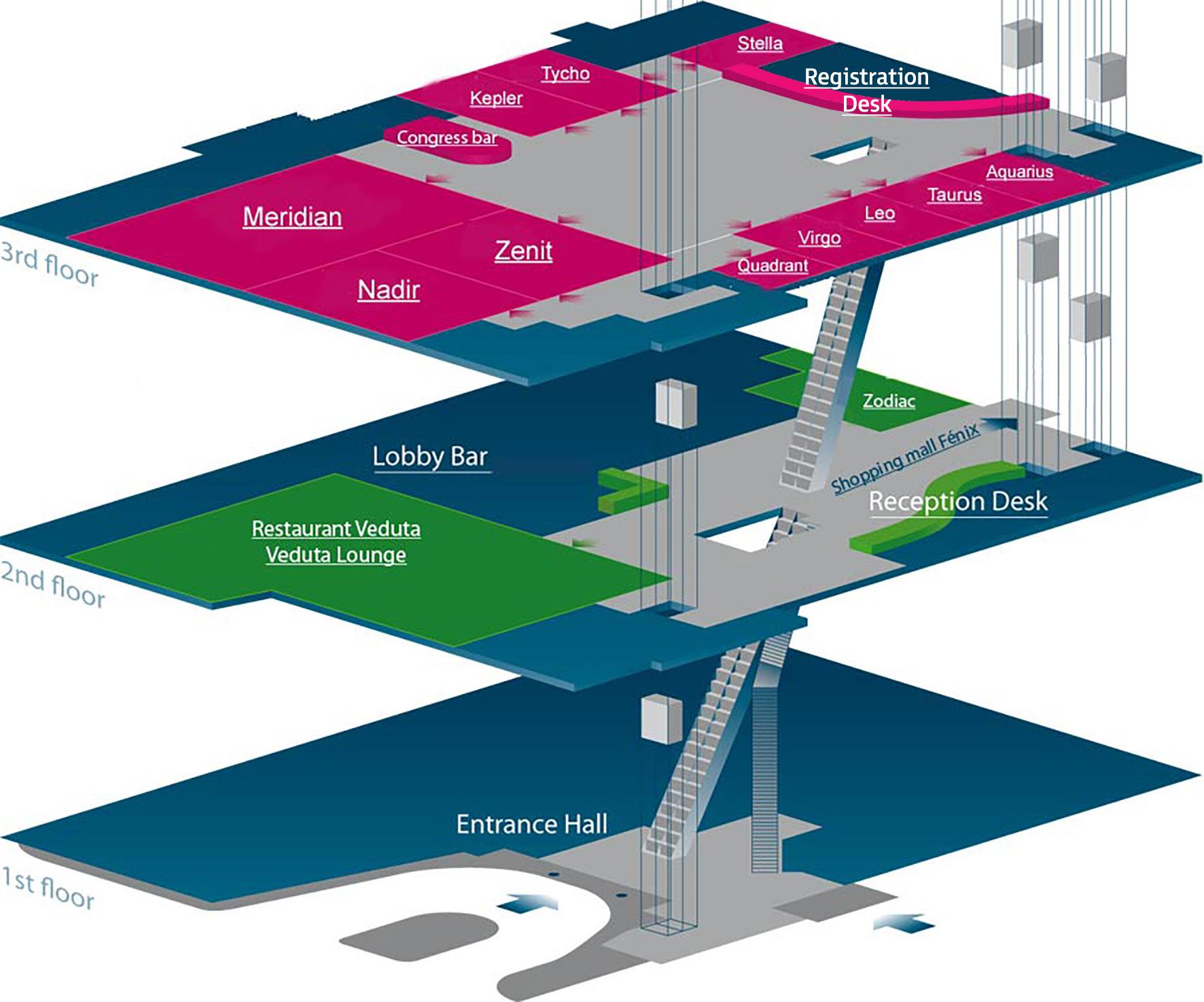

A2 From the lab to the field: incorporating environmental relevance into experimental biology
A2 From the lab to the field: incorporating environmental relevance into experimental biology
A2 From the lab to the field: incorporating environmental relevance into experimental biology
A8 Links between physiology and behaviour in a changing world
A8 Links between physiology and behaviour in a changing world
A11 Not all stress is bad: Understanding protective stressor interactions in changing environments
A11 Not all stress is bad: Understanding protective stressor interactions in changing environments
A13 Powering through: Mitochondrial plasticity and homeostasis under physiological challenges
A13 Powering through: Mitochondrial plasticity and homeostasis under physiological challenges
A16 Tipping the scales: Balancing energy acquisition, expenditure, and allocation in an ever-changing world
A18 Phenotypic plasticity and acclimation mechanisms in a changing world
A18 Phenotypic plasticity and acclimation mechanisms in a changing world
P1 Advancing Plant Nutrition in the Age of Systems and Synthetic Genetics
P6 PEPG: Integrating genomics and phenomics for crop improvement
P6 PEPG: Integrating genomics and phenomics for crop improvement
P6 PEPG: Integrating genomics and phenomics for crop improvement
P7 Translational Plant Biodiversity
PyroScience GmbH
Canadian Society of Zoologists
Conservation Physiology
The Company of Biologists
Conservation Physiology
Conservation Physiology
Frontiers Media Limited
Lucid Scientific
Journal of Experimental Biology
Conservation Physiology
PyroScience GmbH
American Physiological Society (APS)
Plant Journal
IGA Technology Services
Plant Biotechnology Journal
Phenom UK
IPK Gatersleben
P7 Translational Plant Biodiversity CEPLAS
P7 Translational Plant Biodiversity
Journal of Experimental Botany
The Society for Experimental Biology would like to thank the following sponsors for their generous support of this year’s Conference.

Founded in 1887, the American Physiological Society is a global leader in expanding knowledge related to biological function. We connect a multidisciplinary community of nearly 10,000 scientists and educators from around the world, driving collaboration and spotlighting scientific discoveries in physiology and related disciplines. Our members are advancing treatments and cures for everything from cancer and heart disease, to obesity and addiction. They are also deepening our insight into living organisms generally, helping us to better understand how things like climate change are affecting the world around us.
The Society serves this dynamic community in many ways, including:
• Publishing 16 globally recognized scholarly journals and a highly-regarded book monograph series;
• Sponsoring scientific meetings and symposia that explore the frontiers of biomedical science;
• Advocating for science-smart public policy that benefits both our members and the public;
• Bestowing hundreds of awards, grants, and fellowships that recognize scientific excellence and promise;
• Championing physiology education and educators, to support bigger discoveries and better clinical outcomes;
• And providing career resources and other career services, ensuring that all our members have a pathway to success.
www.physiology.org

Established in the mid 1970’s, New England Biolabs, Inc. (NEB) is the industry leader in the discovery and production of enzymes for molecular biology applications and now offers the largest selection of recombinant and native enzymes for genomic research. NEB continues to expand its product offerings into areas related to PCR, gene expression, sample preparation for next generation sequencing, synthetic biology, glycobiology, epigenetics and RNA analysis. Additionally, NEB is focused on strengthening alliances that enable new technologies to reach key market sectors, including the development of molecular diagnostics, as well as nucleic acid vaccines. New England Biolabs is a privately held company, headquartered in Ipswich, MA, and has extensive worldwide distribution through a network of exclusive distributors, agents and subsidiaries located in Australia, Canada, China, France, Germany, Japan, New Zealand, Singapore, South Korea and the UK. For more information about New England Biolabs visit
www.neb.com
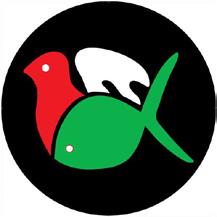
Established in the mid 1970’s, New England
The Canadian Society of Zoologists is a professional organization dedicated to the enhancement of education and research in zoology at the provincial, federal, and international level.
The Canadian Society of Zoologists is a diverse and inclusive not-for-profit scientific society that welcomes members of any gender, race, ethnicity, religion and sexual orientation.
The society aims to reflect this diversity at all levels, ranging from participation at meetings, to representation on council and committees, to the recipients of its awards.
The Canadian Society of Zoologists is proud to promote and support equality for all members interested in zoology.
www.csz-scz.ca

CEPLAS
Cluster of Excellence on Plant Sciences
SMART Plants for Tomorrow’s Needs
Plants enable life on Earth through the conversion of solar energy into chemical energy. Beginning with the Neolithic Revolution, the domestication of plants provided the basis for human population growth and, subsequently, the evolution of highly developed civilizations. However, the growing food demands imposed by an increasing population and the effects of anthropogenic climate change pose huge challenges for sustainable food production and ecosystem maintenance.
The Cluster of Excellence on Plant Sciences
CEPLAS addresses these grand challenges through world-class fundamental research on complex plant traits of agronomic relevance that impact on yield and adaptation to limited resources. Hence this knowledge is essential for designing and breeding plants that react in a predictable way to future challenges (SMART plants).
CEPLAS integrates the resources of the Universities of Cologne and Düsseldorf, the Max Planck Institute for Plant Breeding Research, and the Forschungszentrum Jülich into an internationally leading plant science center that attracts world-class faculty and junior researchers.
Beyond its research mission, we aim for the Cologne/Düsseldorf area to become the location of choice for talented young
researchers wishing to develop their careers. To support this aim, CEPLAS provides novel forms of training for undergraduate and graduate researchers and postdoctoral scientists at the interface of plant and microbial biology, systems and synthetic biology, and theoretical biology.
www.ceplas.eu

Advancing Global Research in Natural Sciences, Explore Cutting-Edge Research with Frontiers
Frontiers in Fish Science | Frontiers in Marine Science | Frontiers in Plant Science | Frontiers in Amphibian and Reptile Science | Frontiers in Bird Science | Frontiers in Ethology
Join the scientific community dedicated to breakthrough discoveries in Natural Sciences. As a leading Open Access publisher, Frontiers is committed to accelerating the progress of research by making high-quality scientific knowledge accessible to everyone.
Why Publish with Frontiers?
• Rigorous Peer Review: Thorough evaluation by leading experts
• Broad Reach: Over 700 million article views and downloads
• High Impact: Indexed in top citation databases
• Fast Publishing: Efficient processes, openaccess format
• Collaborative Community: Engage with a global network of researchers
Highlight your research with us and contribute to the future of scientific discovery!
Join us on the forefront of cutting-edge research. Submit your manuscript today!
www.frontiersin.org

IGA Technology Services (IGATech), based in Udine, Italy, is a leading biotechnology company specializing in providing advanced DNA and RNA sequencing services for the scientific and industrial research sectors. IGATech's mission is to support the scientific and industrial communities by offering cutting-edge solutions in genetics and genomics using the latest sequencing technologies and sophisticated bioinformatics analysis
The company boasts a broad portfolio of services, including genotyping through sequencing, whole genome sequencing, single-cell transcriptomics, nanopore sequencing, genome assembly, and studies on microbiomes and metabarcoding. These services are applied across various sectors, including academic research, hospitals, research institutes, as well as biotech, biopharma, and the agri-food sector
IGATech prides itself on its state-of-theart internal infrastructure, which includes molecular biology laboratories, sequencing equipment, and a high-performance computing (HPC) cluster, enabling it to handle the entire workflow of sequencing and data analysis in-house. The company is committed to research and development to continuously improve its methodologies and provide innovative and customized solutions to its clients.
IGATech's philosophy is based on scientific excellence, reliability, and transparency, with the goal of advancing scientific progress and contributing to the improvement of human health, environmental protection, and agricultural sustainability through genetic and genomic research.
www.igatechnology.com

The Leibniz Institute of Plant Genetics and Crop Plant Research (IPK) is a member of the Leibniz Association. The scientific focus is on the development of new insights into the structure, function, and evolution of genetic material, as well as the conservation, research, and development of the hereditary diversity of important cultivated plants, their ancestors, and wild relatives. The IPK is one of the leading international scientific institutions in these fields and holds important research infrastructures, such as the Federal Ex situ Gene Bank or the IPK PhenoSphere.
www.leibniz-ipk.de

TRANSCEND represents a groundbreaking alliance in plant research to address the urgent need to transform agricultural production systems. Recognizing the strategic importance of plant research, TRANSCEND focuses on fostering innovations to develop crops and plant production systems that enhance agrobiodiversity, sustainability, resilience, and yield performance. These goals align with international frameworks like the United Nations Sustainable Development Goals and the EU's Green Deal. The "Cluster of Excellence in Plant Sciences" (CEPLAS) and the "Leibniz Institute of Plant Genetics and Crop Plant Research" (IPK) are the core of the "Centre for Translational Plant Biodiversity Research" (TRANSCEND) in its initial phase.
The apparent aim is to expand the alliance to include further expertise and interested research institutions in Germany and beyond. Transcend also aims to foster extensive cooperation with experts across various fi elds and enhance dialogue with society to translate basic research into socio-economic benefi ts. More information can be found here:
www pfl anzenforschung.de/de/ pflanzenwissen/journal/ allianz-fuer-innovativepflanzenwissenschaft en-transcend

Lucid Scientific, Inc. Atlanta GA, USA.
Lucid Scientifi c, a pioneer in life science instrumentation, introduces Resipher, a groundbreaking solution empowering researchers to precisely measure oxygen consumption directly in standard microplates. Resipher features patented dynamic optical oxygen sensors, offering unparalleled sensitivity while ensuring minimal cell disturbance. Its supercompact profile seamlessly integrates into any incubator or workstation, enhancing workflow efficiency.
With Resipher, scientists gain access to Lucid Lab, a cutting-edge web-based soft ware for real-time logging and analysis. This intuitive platform facilitates fast and comprehensive data visualization for each of the monitored wells. Researchers can now observe their cellular experiments in real-time from any computer or remotely via smartphone or tablet, revolutionizing the way biological research is conducted. Lucid Scientifi c's innovative approach is driving forward the frontier of drug discovery and fundamental biological research, empowering scientists worldwide to unlock new insights and accelerate breakthroughs. www.lucidsci.com

The PhenomUK Infrastructure Scoping project will produce a business plan and proposal for an eff ective and sustainable nationwide plant and crop phenotyping infrastructure, for submission to UKRI.
Plant phenotyping requires a rich mix of both human expertise and technology. Sensors must be selected or created and positioned around the plant(s) by bioscientists and engineers. Data storage must be designed and maintained by computer scientists and IT professionals who must also, in collaboration with scientifi c and/ or industrial users, identify techniques turning raw sensor data into domain-specifi c measurements (phenes). Further statistical analysis and data integration is required to generate the biological knowledge that is the true goal. All research infrastructure rely on contributions from colleagues in a range of roles and at diff erent career stages. Research Technical Professionals are critical, and many early adopters are likely to be Early Career Researchers.The PhenomUK scoping activity will consider and strive to meet the needs of all sections of the diverse, multidisciplinary UK phenomics community.
www.phenomuk.org

PyroScience offers cutting-edge optochemical sensor solutions based on compact stand-alone (FireSting-GO2), PC-operated lab (FireSting-O2/-PRO) or underwater fiber-optic devices (AquapHOx loggers & transmitters). They work with a great variety
of optical oxygen, pH and temperature sensors for application in gas, water and aqueous & semi-solid samples. The great variety of optical sensor heads include microsensors, miniprobes, and diverse smart contactless sensors for diffe rent oxygen and pH ranges. Pre-sterilised and pre-calibrated sensors are ideal for measurements in cultivation approaches, whereas fastresponding fi ber-based probes, as well as fl ow cells and sensor spots with contactless read-out are well approved for respiration and photosynthesis rates determination. Now we also offer a 96-channel reader FirePlate-O2, e.g. for 96-well plates with integrated oxygen sensors, for application in small-scale cell cultivation and respiration rate measurements. Find the best sensor solution for your application in experimental biology.
www.pyroscience.com/en

Journal of Experimental Biology is the leading journal in comparative animal physiology and biomechanics. It covers a broad range of integrative, comparative, ecological and evolutionary physiology and biomechanics research in animals at all levels of biological organisation, from the molecular to the integrated whole animal. JEB has a >100-year history of publishing
infl uential papers. The journal is proud to support biologists at all career stages and is a long-term sponsor of SEB.
www.journals.biologists.com/jeb
JXB has been publishing at the forefront of the plant sciences since 1950 and is the SEB’s longest running journal. JXB combines this prestigious history and experience with progressive policies to ensure the journal remains at the forefront of scientific publishing and meets the high expectations of our community. JXB considers high quality papers that advance understanding of plant biology across a range of manuscript types and publishes ten special issues on focus topics every year. The journal has a dedicated editorial offi ce based in Lancaster in the north-west of England, which provides an excellent level of customer service to our community. JXB’s diverse and experienced editors strive to provide a constructive peer-review process to authors, and we go the extra mile to help promote your work once it is published. JXB is helping early career researchers to train as journal editors through Editorial Internships.








CP is an open access journal published by Oxford University Press on behalf of the SEB. Biodiversity across the globe faces a growing number of threats associated with human activities. CP publishes research on all taxa (microbes, plants and animals) focused on understanding and predicting how organisms, populations, ecosystems and natural resources respond to environmental change and stressors. The journal particularly welcomes research with potential applications in biodiversity restoration, resource management and conservation policy. Dedicated editorial staff provide excellent support and customer service to the CP community.

TPJ publishes exciting, high-quality science that addresses fundamental and important questions in plant biology. The journal aims to publish work that constitutes a significant contribution to our understanding of plants and is of general interest to the wider plant science community. Typically, TPJ papers provide insight into an as yet unknown mechanism or poorly understood process. The journal also publishes Technical Advances and Resource articles, the latter providing a unique home for large datasets, including genome sequences, and other resources that will be of significant value to the community. All areas of plant biology are welcome and research into any plant or algal species and their interactions with the environment and other organisms will be considered. The journal also commissions high profi le review articles as part of an annual special issue. TPJ supports early career researchers through its Fellowship Scheme and hosts an active Features website.









Plant Direct is an open access, sound science journal for the plant sciences that strives to be a leader in supporting evolving community needs. Plant Direct is a collaboration between the American Society of Plant Biologists, the Society for Experimental Biology, and Wiley. In addition to direct submissions, the journal accepts transfers from our society-journal partners The Plant Journal, The Plant Cell, Plant Physiology, and Journal of Experimental Botany. Topics include but are not limited to genetics, biochemistry, development, cell biology, biotic stress, abiotic stress, genomics, phenomics, bioinformatics, physiology, molecular biology, and evolution. Plant Direct publishes White Papers and Registered Reports, and provides discounts for society members and preprints.





PBJ is an open access journal publishing important and high-impact original research and incisive reviews by leading researchers in applied plant science, with an emphasis on modern molecular biology and its application in plant biotechnology. PBJ provides a forum for the most significant advances in this field, with a strong emphasis on strategic research in plant biotechnology, but also including curiosity-driven studies with the potential for application, and scientific analysis of the performance of the products of plant biotechnology in practice.



























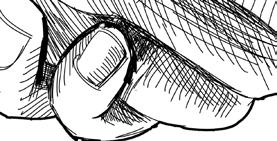














The Society for Experimental Biology would like to thank the following exhibitors for joining us at this year's conference in Prague.

Bringing together members across the world to advance ecological science. We publish 7 world-renowned journals, organise diverse and innovative events, support our members in promoting ecological science and evidence informed solutions to policymakers and provide career support to ecologists at all stages of their lives with mentoring, training, online resources and advice. In addition we provide over £400,000 in grants, including four new grants to bolster innovative research in underfunded areas. britishecologicalsociety.org

Hansatech Instruments is a British company that has been developing high quality scientific instrumentation for over 40 years. Our systems are used widely for teaching & research in cellular respiration & photosynthesis programs in more than 100 countries throughout the world. We have gained an enviable reputation for quality, reliability & excellent price/performance. hansatech-instruments.com






DIANA Biotechnologies, a.s. was established in 2018 as a biotech company at the Institute of Organic Chemistry and Biochemistry (IOCB), Academy of Sciences in Prague, aiming to build on its global reputation and a strong track record in drug discovery. We have raised a substantial amount of venture capital funding and were awarded an exclusive global rights for the DIANA technology.
dianabiotech.com
Stand 17
Loligo ® Systems develops research equipment for aquatic biology. Our products allow scientists all over the world to excel in the fi elds of swimming performance, respirometry, blood physiology and behavior analysis in a diversity of marine and freshwater organisms. We offer customized solutions as well as free scientific advice and support.
loligosystems.com

Lucid Scientific, Inc. Atlanta GA, USA. Lucid Scientifi c, a pioneer in life science instrumentation, introduces Resipher,
a groundbreaking solution empowering researchers to precisely measure oxygen consumption directly in standard microplates. Resipher features patented dynamic optical oxygen sensors, offering unparalleled sensitivity while ensuring minimal cell disturbance. Its supercompact profile seamlessly integrates into any incubator or workstation, enhancing workflow efficiency.
With Resipher, scientists gain access to Lucid Lab, a cutting-edge web-based soft ware for real-time logging and analysis. This intuitive platform facilitates fast and comprehensive data visualization for each of the monitored wells. Researchers can now observe their cellular experiments in real-time from any computer or remotely via smartphone or tablet, revolutionizing the way biological research is conducted. Lucid Scientifi c's innovative approach is driving forward the frontier of drug discovery and fundamental biological research, empowering scientists worldwide to unlock new insights and accelerate breakthroughs. lucidsci.com

At Oxford University Press, we’re part of one of the greatest universities in the world, and everything we do furthers the University of Oxford’s objective of excellence in research, scholarship, and education by publishing worldwide. It’s why we invest back into education and research, and champion a love of learning. We are the world's largest university press with the widest global presence. Our products and services are used in over 200 countries and regions, in more than 85 languages, and we publish over 2,500 titles per year. corp.oup.com
Stand 6

Photon Systems Instruments (PSI): Advancing Plant Science with Cutting-Edge Technology
Photon Systems Instruments (PSI) is a pioneering company based in the Czech Republic, specializing in the development and manufacturing of high-end instrumentation for research in the biological sciences. With a rich history spanning almost three decades, PSI has established itself as a global leader in the field, providing innovative solutions for imaging and monitoring biological signals in plants and algae.
PSI's product portfolio encompasses a wide range of sophisticated instrumentation tailored for plant science research, including PlantScreen high throughput PhenotypingTM systems, devices for chlorophyll fluorescence measuring and advanced imaging, high-tech photobioreactors, intelligent growth chambers, and compact, hand-held instrumentation. PSI's products are designed by plant scientists for plant scientists, with environmentally friendly production techniques and unrivaled postpurchase support.
Backed by a team of plant scientists and engineers with extensive expertise in optics, electronics, soft ware development, and automation, PSI continues to push the boundaries of innovation in plant science instrumentation. In conclusion, PSI stands as a beacon of innovation in the field of plant science instrumentation, driving scientific progress and empowering researchers worldwide. For more information about PSI and its products, visit www.psi.cz, and feel free to reach out with any inquiries. We look forward to welcoming you into the world of PSI.
psi.cz
Stand 2
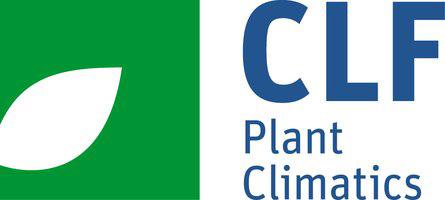
Specialised in providing a wide choice of controlled-climate equipment for plant biology and entomology research we offer application-focussed solutions based on more than 25 years’ experience with over 2000 Percival Scientific chambers installed in: Europe, Scandinavia, the Middle East and Africa. Come and discuss with us or pick up information on the huge range of standard chambers, you’ll be most welcome!
plantclimatics.de
Stand 5

Plant-DiTech is revolutionizing the agricultural research sector by offering our ground-breaking PlantArray platform. The system empowers researchers to rapidly screen plant responses to various stressors, and assess their yield potential within days. While controlling changes in irrigation and nutrients conditions, the system captures real-time, dynamic physiological measurements. It allows researchers to identify and quantify plant stomatal activity and growth before visual detection.
Trusted by industry leaders, including Wageningen University, the University of Florida, Mars Wrigley, and many more. With a solid track record of over 40 scientifi c articles, Plant-DiTech is setting new plant phenotyping research standards. Discover more at: plant-ditech.com

PyroScience offers cutting-edge optochemical sensor solutions based on compact stand-alone (FireSting-GO2), PC-operated lab (FireSting-O2/-PRO) or underwater fiber-optic devices (AquapHOx loggers & transmitters). They work with a great variety of optical oxygen, pH and temperature sensors for application in gas, water and aqueous & semi-solid samples. The great variety of optical sensor heads include microsensors, miniprobes, and diverse smart contactless sensors for different oxygen and pH ranges. Pre-sterilised and pre-calibrated sensors are ideal for measurements in cultivation approaches, whereas fastresponding fiber-based probes, as well as flow cells and sensor spots with contactless read-out are well approved for respiration and photosynthesis rates determination. Now we also offer a 96-channel reader FirePlate-O2, e.g. for 96-well plates with integrated oxygen sensors, for application in small-scale cell cultivation and respiration rate measurements. Find the best sensor solution for your application in experimental biology.
pyroscience.com/en
Stand 20


Providing high quality gas exchange systems for respirometry, photosynthesis, N2 fixation and environmental monitoring. Instruments for aquatic biology, including the unique diver-deployed CISME system for monitoring coral metabolism in situ.
Instruments for human cardiovascular fitness and electrophysiology. Chlorophyll fluorescence and hyperspectral analyzers and imagers. Tower- and gantry-mounted instruments for Solar-Induced Chlorophyll Fluorescence (SIF) and Plant Reflective Indices. LED-based growth chambers. Algal bioreactors. We provide customised plant phenomics platforms for the growth chamber, greenhouse and field. Contact us to discuss your requirements - our scientists will enjoy working with you.
Phone: (+1)-613-384-1977 Info@qubitsystems.com quibitsystems.com


The Society for Experimental Biology has a portfolio of fi ve journals. By publishing in an SEB journal, you can be assured of a supportive and ethical publishing experience. The SEB’s income from these journals is reinvested into the research community through the Society’s diverse activities. The Society is a signatory of DORA, supports open access and open data, and provides benefits when its members publish in SEB journals. The SEB journals also run a range of initiatives to support early career researchers including fellowships, editorial internships, and paper prizes. SEB journal staff will be available throughout the Conference to answer any questions you may have about publishing in the Society’s journals. They will also be running a workshop titled ‘Peer Review: first steps, best practices & future challenges’ so please come along and get involved.

The Company of Biologists is a not-forprofi t publishing organisation dedicated to supporting and inspiring the biological community. We are run by distinguished practicing scientists. We exist to profit science, not shareholders. We inspire new thinking and support the worldwide community of biologists.
We publish Journal of Experimental Biology, as well as four other specialist peer-reviewed journals: Development, Journal of Cell Science, Disease Models & Mechanisms and Biology Open.
Furthermore, we facilitate scientific meetings, provide travel grants for researchers and support research societies. We ensure the profits from the hard work of scientists inspire future scientific discovery and develop the next generation.
Our three community sites, the Node, preLights and FocalPlane, offer important networking opportunities and resources.
We are committed to Open Access. Two of our journals are fully OA and our three hybrid journals offer OA options. Through our Read & Publish agreements, researchers have access to new and archive content in our journals, and corresponding authors at participating institutions can publish their research articles OA without having to pay the article processing fee.
Through our biopositive publishing initiative The Forest of Biologists, we plant a tree for each Research or Review article published in our journals and protect ancient woodland for each completed peer review.
Visit our stand for more information about publishing with us, our charitable activities or the Forest and check to see if you are eligible for fee-free publication of your next research paper.
biologists.com
The Society for Experimental Biology (SEB) is a learned scientifi c society dedicated to promoting and supporting the field of experimental biology. Established in 1923 at Birkbeck College in London, we now represent an international community of experimental biologists spread across over 60 different countries. Our aims include facilitating connections between cell, animal, and plant biologists while demonstrating the importance and impact of experimental biology research to the wider public and within the scientific community.
Whether you are a researcher, teacher, or student, we can support you across all levels of your career. Our members enjoy a number of benefits including access to a range of travel and sponsorship grants, the opportunity to have your work recognized through various prestigious awards, publishing discounts across our five specialist journals, and reduced registration fees to SEB events – just to name a few!
Visit our booth for limited edition SEB merchandise, try your hand at one of our stand games, and find out more information on our SEB membership offering!
For more information, visit: sebiology.org









































































































































































































































































SESSION A22- OPEN ANIMAL P3: GENOMIC AND EPIGENETIC PLASTICITY IN PLANTS
09:0009:30
09:3009:45
Mr Casey Patmore
University of Edinburgh Institute of Ecology and Evolution
Competition with vertebrate scavengers’ delays return to parental care in the burying beetle Nicrophorus vespilloides A22.2
Prof Frank Johannes Technical University of Munich
Accelerated growth increases the somatic epimutation rate in trees
P3.1
09:4510:00
Mr Chayan Munshi Ethophilia Research Foundation
Semi-transparency: Strategic camouflaging technique in a freshwater prawn A22.3
Ms Francesca Leggieri LNU
The effect of fish size on the escape responses of schooling shiner perch Cymatogaster aggregata A22.4
10:0010:15
10:1510:30
Ms Maitry Jani Zoological institute and Museum University of Greifswald.
A multimethod approach to study the behavioral utilization of spider silk glands. A22.5
Mr Swapnanil Mondal Ethophilia Research Foundation
Adaptive modifications in the thoracic appendages of a freshwater prawn, Macrobrachium lamarrei A22.6
Pavel Jelínek
Charles University Mechanisms of habituation for exogenous auxinindependent proliferation of tobacco cells P3.2
A10 - MEMBRANE AND EPITHELIAL TRANSPORT PHYSIOLOGY ACROSS TAXA
Dr Sima Jonusaite
University of Kiel Paracellular barriers in ion transporting epithelia of invertebrates
A10.1
Dr Rafał Krela Biology Center CAS
Epigenetic modifications of DNA and chromatin in green algae Chlorella sorokiniana. P3.3
Dr Anne Dalziel
Saint Mary's University Cis-regulated claudin 10c expression in gill is associated with variation in hypersaline seawater tolerance among species of killifish (Fundulus spp.) A10.2
Carolyn Morris
Uni. of British Columbia
The protective ionoregulatory effects of dissolved organic carbon (DOC) and model compounds in a native Amazonian fish, the dwarf cichlid (Apistogramma agassizii). A10.3
Catarina Quintanova Christian-AlbrechtsUniversität zu Kiel Claudin-10b role in the stabilization of the basolateral infoldings of the thick ascending limb A10.20
A19 - VERTEBRATE CARDIORESPIRATORY PHYSIOLOGY
Michael Sackville
The Marine Biological Laboratory
The origins of gas exchange and ion regulation in vertebrate gills A19.1
Dr Chris Wood
Uni. of British Columbia Is the air-breathing organ a significant route for CO2 excretion during aquatic hypercapnia in the pirarucu,Arapaima gigas? A19.2
Dr Mark Bayley Aarhus University Department of Biology Oxygen loss in Air-breathing fish A19.3
Mr Magnus Aaskov Aarhus University Can gill plasticity mitigate branchial oxygen loss in Chitala ornata? A19.4
Miss Victoria Becker Institute for Experimental Medical Research
The Atlantic cod (Gadus morhua) utilizes oxygen from the swim bladder during exposure to environmental hypoxia A19.5
Maddison Reed University of Ottawa Chemoreceptor inhibition by dopamine D2 receptors and post synaptic responses to ACh in isolated zebrafish gills. A19.6
10:3011:00 REFRESHMENT BREAK / EXHIBITION
11:0011:30 ANIMAL PRESIDENT MEDALLIST TALK - MERIDIAN
11:3012:00 CELL PRESIDENT MEDALLIST TALK - MERIDIAN
12:0012:30 PLANT PRESIDENT MEDALLIST TALK - MERIDIAN
12:3013:10 JEB MEET THE EDITORS – CRAIG FRANKLIN
12:3013:30 LUNCH / EXHIBITION PROGRAMME - DAY 1 :
SEB JOURNALS WORKSHOP - ACADEMIC PEER REVIEW – FIRST STEPS, BEST PRACTICES & FUTURE CHALLENGES
SEB JOURNALS WORKSHOP
SEB JOURNALS WORKSHOP
SEB JOURNALS WORKSHOP
SEB JOURNALS WORKSHOP
SEB JOURNALS WORKSHOP
A21 - BIOMECHANICS
A5 - INTERDISCIPLINARY APPROACHES IN BIOACOUSTICS: CELLS, BEHAVIOR, AND MECHANICS
Ariel Camp Emine Celiker
Dr David Labonte
Imperial College
Energy landscapes of muscle-tendon dynamics in explosive movements
A21.1
Dr Delyle Polet
Royal Veterinary College
Interaction of muscle parameters on ballistic joint movement - implications for ageing and comparative locomotion
A21.2
Dr James Wakeling
Simon Fraser University
Work and energy in skeletal muscle contraction
A21.3
Dr Erin Brandt University of Chicago
The Ground is Good: A Numerical Approach to Understanding Acoustic Tool Use in Crickets
A5.1
OED1 - COLLABORATING WITH INDUSTRY: MEETING LIFE SCIENCES SECTOR SKILLS NEEDS
Claire Garden
Mr Stephen Stewart Cell and Gene Therapy Catapult
Collaboration and Training for the Future of Advanced Therapies: The Cell and Gene Therapy Catapult
OED1.1
A7 -EMBRACING VARIABILITY - WHY IT MATTERS AND WHAT TO DO WITH IT?
Emily Hardison and Gail Schwieterman
Dr Andrea Morash Mount Allison University
The ups and downs of incorporating environmentally relevant variability in laboratory experiments
A7.1
Dr Marie Janneke Schwaner
Katholieke Universiteit
Leuven
Relating in vivo muscle dynamics to force-lengthvelocity relationships: from experiments to musculoskeletal models
A21.4
Dr Nicolai Konow University of Massachusetts
Lowell
Bifunctional force-lengthvelocity operation of superficial masseter
A21.5
Dr Robert Rockenfeller
Universität Kbolenz
Biophysical mechanisms underlying the force-lengthactivity relation of the sarcomere
A21.6
Dr Atitheb Chaiyasitdhi
University of Leicester
Characterizing time-resolved motion within the scolopidium and its role in the gating mechanism of insect auditory transduction
A5.2
Lena De Framond
Max Planck Institute for Biological Intelligence
What it takes to be heard: morphological and ecological correlates of bird song amplitude
A5.3
Dr Leonidas Davranoglou University of Oxford
What's the buzz?
Harnessing the power of micro-CT to advance bioacoustic science
A5.4
Dr Claire Garden
Edinburgh Napier University
The Future for IndustryRelevant Life Science Skills Teaching for Graduate Employability
OED1.2
Dr Karin Garrie
Karin B Garrie
Working as a team on an employer informed research question in final year BSc (H) Biomedical Science
OED1.3
Dr Sarah Rayment
Nottingham Trent University
Developing professional skills and attributes in foundation biology students
OED1.4
Dr Gail Schwieterman
University of Maine
Incorporating Variability into Physiological Experiments
A7.2
Kasja Malkoc Max Planck Institute for Biological Intelligence Physiological and performance reaction norms to ecologically relevant challenges: Withinindividual plasticity is consistent and plastic at the same time
A7.3
Dr Daniel Gomez Isaza
Harry Butler Institute
Murdoch University
Temperature variation can be a blessing and a curse for ectothermic animals
A7.4
Dr Karin Garrie
Nottingham Trent University
Ensuring work readiness of BSc (Honours) Biochemistry graduates at NTU through employer led assessment practice
OED1.5
Ms Marie Levet
Marie Levet
Temperature preference in immune-stimulated and parasite-infected sunfish
A7.5
ANIMAL PRESIDENT MEDALLIST TALK - MERIDIAN
CELL PRESIDENT MEDALLIST TALK - MERIDIAN
PLANT PRESIDENT MEDALLIST TALK - MERIDIAN
JEB MEET THE EDITORS – CRAIG FRANKLIN
LUNCH / EXHIBITION
P6 - PEPG: INTEGRATING GENOMICS AND PHENOMICS FOR CROP IMPROVEMENT
Leonardo Caproni and John Ferguson
Prof José Araus Ortega Faculty of Biology University of Barcelona
Translating high-throughput phenotyping into genetic gain P6.1
Dr Mara Miculan King Abdullah university of Science and Technology
Disentangling the genome wide contribute of structural variations to drought stress resistance in the model species Oryza Sativa P6.2
Jake Hill
University of Aberdeen Heritable variation in interactions between neighbouring rice plants results in competition, facilitation, and implications for selective breeding P6.3
Prof Chiara Pucciariello
Scuola Superiore Sant'Anna Genome-wide association study, landscape genomics, and metataxonomic analysis reveal that barley seed permeability and microbiota associations regulate germination after flooding events P6.4
Afternoon sessions continue overleaf >
Dr Jo Hepworth
Durham University
Cold cabbage and nippy napusIntegrated Phenomics and Genomics reveals genetic loci associated with temperaturesensitive inflorescence growth in Brassicas P6.5
SESSION
A3 - GENOME ARCHITECTURE AND POLYPLOIDY IN ANIMALS AND ITS ROLE IN THE EVOLUTION OF PHYSIOLOGICAL PLASTICITY
CHAIR Carolina Arruda de Oliveira Freire
13:3014:00
Prof Mike Althaus
Hochschule BonnRhein-Sieg
Evolution of the epithelial sodium channel
A3.1
14:0014:15
Ms Soraya Safavi
University of Hamburg
Evolution of Globin Proteins in Vertebrates: Shedding Light on the Transition from Water to Land A3.2
14:1514:30 Athina KarapliPetritsopoulou Leibniz Institute of Freshwater Ecology and Inland Fisheries (IGB) Phenotypic responses of Arctic Daphnia to elevated temperature a decade apart: implications of plasticity and rapid adaptation A3.3
14:3014:45
Dr Dagmar Frisch
Leibniz Institute of Freshwater Ecology and Inland Fisheries (IGB) Rare in space but there in time: centuries of dominance of a single polyploid Daphnia clone A3.4
P3: GENOMIC AND EPIGENETIC PLASTICITY IN PLANTS
Marco Catoni
Dr Sara Lopez-Gomollon
University of Kent small RNAs as drivers of genetic and genomic plasticity
P3.4
A10 - MEMBRANE AND EPITHELIAL TRANSPORT PHYSIOLOGY ACROSS TAXA
Marian Hu
Prof Jeppe Praetorius
Biomedicine Aarhus University
Cerebrospinal fluid secretion and pH regulation by the mammalian choroid plexus
A10.4
Katie Jeynes-Cupper University of Birmingham Mobile RNAs and their potential role in grafting-induced traits in Solanaceous heterografts P3.5
Dr JONATHAN WILSON
Wilfrid Laurier University
Elucidating the function of the enigmatic fish pseudobranch using transcriptomics. Novel expression of the Na+/H+exchanger 5 A10.5
Dr Yung-che Tseng Institute of Cellular and Organismic Biology Academia Sinica Examining the interplay of NHEs, NH4+ excretion, ionic equilibrium, and energy metabolism in fish responses to environmental shifts A10.6
Dr Chris Wood University of British Columbia
The Effect of Environmental Factors on Transepithelial Potential in a Model Amazonian Teleost, the Tambaqui (Colossoma macropomum):
A19 - VERTEBRATE CARDIORESPIRATORY PHYSIOLOGY
Christian Damsgaard
Michael Berenbrink
University of Liverpool
From mouse to elephantwhat determines evolved variations in mammalian blood oxygen affinity? A19.7
Luis Kuchenmüller Deakin University
The allometry of vascular oxygen supply during an acute thermal challenge in rainbow trout A19.8
Dr Kelly Ross University of Liverpool
Respiratory properties of Sowerby’s beaked whale (Mesoplodon bidens) haemoglobin A19.9
Anastasiya Plotnikova University of Miami
The key mechanisms associated with the survival of Gulf toadfish, Opsanus beta, when in severe hypoxia A19.10
A11 - NOT ALL STRESS IS BAD: UNDERSTANDING PROTECTIVE STRESSOR INTERACTIONS IN CHANGING ENVIRONMENTS
Daniel Gomez Isaza
Dr Wes Dowd Washington State University
Multi-factorial environmental variation in splashpools and its consequences for copepods: Good, bad, or indifferent?
A11.1
Dr Essie Rodgers
Murdoch University
The mechanistic basis and adaptive significance of cross-tolerance: a ‘preadaptation’ to a changing world? A11.2
Dr Lauric Feugere
University of Hull (UK) MEEP lab Université du Québec à Rimouski (Canada)
Heat to the rescue… unless you’re in a group!
Social context in zebrafish embryos prevents heat hormetic effect against mutagens A11.3
Dr Catherine Ivy
Western University
Seasonal flexibility along the oxygen cascade allows for high-altitude flights in migratory songbirds
A19.11
Dr Rebecca Cramp University of Queensland
Between a hot place and hypoxia: Physiological responses of fish to high temperature and hypoxia in dryland river systems A11.4
14:4515:00
Dr Jeoffrey George
Botany and Plant Sciences
Department University of California Riverside CA
Climate resilience in soybean: Root plasticity confers flooding tolerance P3.6
Implications for Sodium Balance in Harsh Environments A10.23
Christian Damsgaard Aarhus University
Neural anoxia tolerance supported the evolution of sharp vision in birds
A19.12
Mrs Fanny Vermandele
MEEP laboratory Dpt. Biologie Chimie et Géographie Université du Québec à Rimouski
Two extreme events are better than one?
Physiological responses following simultaneous exposure to hypoxia and marine heatwave in Acartia tonsa A11.5
15:0015:30
REFRESHMENT BREAK
A21- BIOMECHANICS SAB3 - REPRODUCTIVE SENESCENCE: HOW, WHAT, WHEN, AND WHY?
OED4 - MAKING YOUR SCHOLARSHIP COUNT
David Labonte
Dr Tim Van der Zee
KU Leuven
A simple biophysical muscle model explains force transients during lengthening
A21.7
Dr Ariel Camp University of Liverpool
Unexpected diversity in the 3D shape of myosepta in fish body muscles
A21.8
Prof Johan Van Leeuwen
Wageningen University
How changes in muscle activation may affect tentacle extension in squid
A21.9
Sophie Dupont and Edward Ivimey-Cook
Introduction 13:30-13:45
Prof Simone Immler
University of East Anglia
The role of germline-soma interactions in reproductive ageing
SAB3.1
Susanne Voelkel
Dr Anne Tierney
Heriot-Watt University
An Introduction to Scholarship of Teaching and Learning for Bioscientists
OED4.1
A7 -EMBRACING VARIABILITY - WHY IT MATTERS AND WHAT TO DO WITH IT?
Emily Hardison and Gail Schwieterman
Dr Emily Donham University of California
Santa Barbara
Incorporating multivariate environmental change into mesocosm experiments
A7.6
Dr Andy McCracken
University of Liverpool
Macronutrients interact with sterols to mediate matingdependent lifespan and fertility in male Drosophila melanogaster
SAB3.2
Dr Sarah Gretton
University of Leicester
My SoTL journeya personal perspective
OED4.2
Dr Cristian Vargas
Cristian A. Vargas
Decoupling in oxygen and pH fluctuations drive contrasting physiological responses in kelp crabs across an environmental mosaic in a coastal upwelling system
A7.7
Dr Andrea Frommel
University of British Columbia
Effects of food limitation on ocean acidification tolerance in Chum salmon
A7.8
Dr Michael Günther
Universität Stuttgart
Local strain within muscle fibres in response to an impact: direct dynamic simulation results
A21.11
Mr Pasha Van Bijlert
Utrecht University Naturalis
Biodiversity Center
Predictive musculoskeletal simulations of the emu resolve the avian grounded running paradox
A21.12
P6 - PEPG: INTEGRATING GENOMICS AND PHENOMICS FOR CROP IMPROVEMENT
Leonardo Caproni and John Ferguson
Prof Hilde Nelissen VIBUGent
Multiplex genome editing strategies to assess the combinatorial potential of yield contributing alleles in maize
P6.6
Eric Ober
NIAB
Phenomic and genomic prediction of yield in winter wheat
P6.7
Mr Tien-Cheng Wang
Humboldt University of Berlin
Unravelling yield consistency in winter wheat (Triticum aestivum L.): insights from multi-environment trials and crop simulation
P6.8
Prof Jean-Michel Gaillard
University of Lyon
Cohort variation in aging patterns of roe deer females facing different ecological contexts
SAB3.3
Dr Ellen Bell
Ellen Bell
Scholarship in data literacy; establishing evidence of pedagogical efficacy and measuring impact and influence within and beyond the institution.
OED4.3
Prof Susanne Voelkel
University of Liverpool
From teaching innovation to scholarship – the example of an audience response system
OED4.4
Mr Théo Navarro
Centre National de la Recherche Scientifique (CNRS)
Impacts of heatwaves and hypoxia on three European seabass Dicentrarchus labrax populations reared in three seasonal thermal regimes
A7.9
Dr Vojsava Gjoni Vojsava Gjoni
Temperature and predation affect metabolic scaling: Do individual metabolic constraints shape community size spectra?
A7.10
Mr Pablo Affortit
UMR DIADE French Research Institute for Sustainable Development (IRD)
Targeting root traits to improve tolerance to vegetative drought episodes in pearl millet (Pennisetum glaucum L.)
P6.9
Lorenzo Raggi
Dipartimento di Scienze
Agrarie Alimentari e Ambientali - Università degli Studi di Perugia
Leveraging landrace diversity in the common bean: connecting key traits with key loci
P6.10
SESSION A3 - GENOME ARCHITECTURE AND POLYPLOIDY IN ANIMALS AND ITS ROLE IN THE EVOLUTION OF PHYSIOLOGICAL PLASTICITY
CHAIR Carolina Arruda de Oliveira Freire
15:3016:00
16:0016:15
Prof Carol Eunmi Lee University of WisconsinMadison
Genome Architecture
Evolution in the copepod Eurytemora affinis species complex
A3.5
P3: GENOMIC AND EPIGENETIC PLASTICITY IN PLANTS
A10 - MEMBRANE AND EPITHELIAL TRANSPORT PHYSIOLOGY ACROSS TAXA
A19 - VERTEBRATE CARDIORESPIRATORY PHYSIOLOGY
Prof Katharina Wollenberg Valero University College Dublin
Linking network topology, evolutionary constraint, and abiotic environmental adaptation
A3.6
16:1516:30 Miss Kaylee Beine University College Dublin
The protein-protein interaction network architecture of the environmental stress response in zebrafish embryos
A3.7
16:3016:45
Marco Catoni
Marian Hu
Kathleen Gilmour University of Ottawa
The diversity of carbonic anhydrases and the regulation of acid-base balance in fishes
A10.7
Dr Catherine Lorin-Nebel Marbec
Plasticity in intestinal responses of European sea bass populations reared in distinct seasonal temperature regimes
A10.8
Dr Avner Cnaani Agricultural Research Organization
In-vitro and in-vivo characterization of environmental effects on transmembrane peptide transport in fish A10.9
Christian Damsgaard
Dr William Joyce Spanish National Centre for Cardiovascular Research
The regulation of cardiac output in the supplylimited heart
A19.13
Ms Katja Last Aarhus Universityzoophysiology
The relationship between oxygen consumption, heart rate and body temperature in the Burmese Python A19.14
Miss Thuy Le University of Turku
Effect of exercise training on Ca2+ current in ventricle myocytes of rainbow trout (Oncorhynchus mykiss)
A19.15
Steven Williams University of North Texas Onset of Cardiovascular Regulation by Vagal Innervation of the Heart in Embryonic Gulf Killifish Embryos (Fundulus grandis) A19.16
A11 - NOT ALL STRESS IS BAD: UNDERSTANDING PROTECTIVE STRESSOR INTERACTIONS IN CHANGING ENVIRONMENTS
Daniel Gomez Isaza
Dr Giovanna Mottola University of Eastern Finland
One is not enough: the importance of multiplestressor scenarios in thermal plasticity studies
A11.6
Dr Michael Collins University of Plymouth Hunting for cross-tolerance: harnessing a physiological -omics approach A11.7
Dr Simone Baldanzi Universidad de Valparaiso
Complex interactions and heterogenous effects emerge from multidrivers experiments on marine invertebrates. A comprehensive review A11.8
Dr Sjannie Lefevre
University of Oslo
De novo assembly of the crucian carp genome for the study of anoxia tolerance A3.8
Dr Pung-Pung Hwang Academia Sinica Ion regulation and related energy metabolism in fish gills
A10.19
Dr Michael Frisk
Michael Frisk Effects of egg incubation temperature on cardiac morphology and function in Atlantic salmon larvae A19.17
Mr Sih Shien Lee
National Cheng Kung University Effects of Hypothermic Stress on Giant Grouper (Epinephelus lanceolatus) PKR Gene Expression and Antiviral Response Against NNV A11.9
16:4517:00
17:0018:00
18:0019:30
Dr Jonathon McPhetres Durham University
Diverse stimuli induce piloerection and yield varied autonomic responses in humans
A19.18
CELL PLENARY LECTURE - MERIDIAN
WELCOME EVENING RECEPTION
1
Dr Daniel Gomez Isaza Harry Butler Institute
Murdoch University
Stress history affects heat tolerance in an aquatic ectotherm (Chinook salmon,Oncorhynchus tshawytscha)
A11.10
A21- BIOMECHANICS
SAB3 - REPRODUCTIVE SENESCENCE: HOW, WHAT, WHEN, AND WHY?
OED4 - MAKING YOUR SCHOLARSHIP COUNT
David Labonte
Prof Peter Aerts University of Antwerp
Whole body stability of single limb stance in birds: a simulation study
A21.13
Ms Yuting Lin Royal Veterinary College
Predictive simulations of musculoskeletal function and sit-to-stand performance in a large bipedal bird – the emu (Dromaius novaehollandiae)
A21.14
Mr Raman . Biomimetics-InnovationCentre Hochschule Bremen
- City University of Applied Sciences Bremen
Starfish-inspired scalable morphing structures
A21.15
Dr Chris Richards
Royal Veterinary College
Modelling the neuromechanical limits of human goal-directed reaching A21.16
Prof Jan-Henning Dirks
Hochschule Bremen - City University of Applied Sciences
Allometric Scaling of Jumping Insect Legs: Insights into Morpho-Mechanical Adaptations
A21.17
Sophie Dupont and Edward Ivimey-Cook
Prof Johan Dahlgren University of Southern Denmark
Senescence and reproductive output in orchids: results from a 40-year study on four boreal species
SAB3.4
Susanne Voelkel
A7 -EMBRACING VARIABILITY - WHY IT MATTERS AND WHAT TO DO WITH IT?
Emily Hardison and Gail Schwieterman
Dr Melanie Massey University of Toronto Plasticity to thermal variability within and across generations
A7.11
P6 - PEPG: INTEGRATING GENOMICS AND PHENOMICS FOR CROP IMPROVEMENT
Leonardo Caproni and John Ferguson
Dr Aude Coupel-Ledru INRAE
High-throughput phenotyping for deciphering the determinants of water-use efficiency in fruit crops
P6.11
Dr Francisco Ruiz-Raya University of Glasgow
Temporal infection dynamics shaped by migration strategy in a partially migratory seabird: implications for reproductive performance
SAB3.5
Miss Juliette Barbeau Juliette Barbeau
The interplay between reproduction and telomere length variation in female Tree swallows (Tachycineta bicolor)
SAB3.6
Dr Jacob Moorad University of Edinburgh
Reproductive senescence in a laboratory population of a burying beetle species with conspicuous maternal care
SAB3.7
Prof Shane Maloney
The University of Western Australia
Optimal sampling interval for characterisation of the circadian rhythm of body temperature in homeothermic animals using periodogram and cosinor analysis
A7.12
Dr Matthew Noakes University of the Witwatersrand Seasonal and sex differences in the thermoregulatory responses of European vespertilionid bats at high air temperatures
A7.13
Ms Jenelle McCuaig
University of Alberta
Swimming in ash: Comparing physiological responses of two freshwater crustaceans to Australian bushfire ash
A7.14
Mr Robert Griffin
University of Alberta
The influence of variable salinity on invasive green crab (C. maenas) survival in Canadian Pacific estuaries
A7.15
Dr Yazen Al-Salman
Wageningen University Research
Improving water use efficiency in C4 crops: conventional and genetic approaches P6.12
Hydraulic and stomatal controls on water use efficiency in a sorghum sub-population with varying aquaporin alleles P6.13
Dr Bijayalaxmi Mohanty National University of Singapore
Plant systems biology: application to rice for understanding cellular phenotype to guiding crop improvement under abiotic and biotic stress conditions
P6.14
Ms Nina Trubanová University College Dublin
Genome specific association study (GSAS) for exploration of intravarietal variability in hemp (Cannabis sativa)
P6.15
SESSION P1 - ADVANCING PLANT NUTRITION IN THE AGE OF SYSTEMS AND SYNTHETIC GENETICS
CHAIR Hatem Rouached and Benoit Lacombe
09:0009:30
Dr Laurent Nussaume Commissariat à l'Energie
Atomique et aux Energies
Alternatives (CEA)
RNA live imaging: interest for plant biology
P1.1
09:3009:45
09:4510:00
Dr Jitender Giri
Recent advancements in the regulation of phosphate homeostasis in rice
P1.2
10:0010:15
10:1510:30
Prof Christian Hermans Université libre de Bruxelles (ULB)
Increasing the capacity of C4 cereals to overcome soil resource constraints
P1.3
10:3011:00
CHAIR
11:0011:30
Hatem Rouached and Benoit Lacombe
Prof Karen Sanguinet Washington State University
BUZZed on Nitrate: The effect of a root hairless mutant on nitrate acquisition in the model grass Brachypodium distachyon
P1.4
P3: GENOMIC AND EPIGENETIC PLASTICITY IN PLANTS
A6 - INVISIBLE FRIENDS: MICROBIOME IN ECO-EVOLUTIONARY RESEARCH
Suvi Ruuskanen
Dr Samantha Fontaine
Kent State University
The role of the microbiome in ectotherm thermal biology
A6.1
Dr Charli Davies
University of Jyväskylä
Can the gut microbiome underlie winter adaptation in wild populations of Great tits?
A6.2
Miss Tanya Troitsky University of Helsinki
Seasonal shifts in the skin microbiome of bats and their relevance to bat immunity during hibernation
A6.3
Jaime Muriel University of Turku
Small-scale habitat determines gut microbiota of a migratory passerine on its breeding ground
A6.16
Dr Silva Uusi-Heikkilä University of Jyväskylä
The robustness and resilience of skin and gut microbiota
A6.5
A10 - MEMBRANE AND EPITHELIAL TRANSPORT PHYSIOLOGY ACROSS TAXA
P2 - FROM SENSING TO REMEMBERING: PLANTS' RESPONSES TO TEMPERATURE FLUCTUATIONS
Jonathan Wilson Justyna Olas
Dr Peter Piermarini
The Ohio State University
Calcium transport in mosquito Malpighian tubules
A10.10
Dr Marian Hu Institute of Physiology Kiel University
Evidence for HCO3- and NH3/NH4+ dependent pH regulatory mechanisms in the alkaline midgut of the sea urchin larva
A10.11
Dirk Weihrauch
University of Manitoba
The cGMP/PKG pathway, but not the cAMP/PKA pathway promotes branchial ammonia excretion in the green shore crab
A10.12
Dr Trystan Sanders
University of Exeter
Effects of seawater salinity, [Ca2+] and [DIC] on post-moult calcium and acid-base fluxes in whiteleg shrimp (Penaeus vannamei)
A10.21
REFRESHMENT BREAK / EXHIBITION
Marco Catoni
Dr Filipe Borges
Institut Jean-Pierre Bourgin - INRAE
Epigenetic control of transposon activity and dosage in pollen and hybrid seeds
P3.7
Silva Uuusi-Heikkilä
Dr Tamsyn Webster
Swansea University
Can microbiome plasticity enhance host tolerance of environmental stressors?
A6.6
Dirk Weihrauch
Prof Rod Wilson University of Exeter Environmental and Endogenous Influences on Intestinal Calcification in Marine Teleost Fish
A10.13
Prof Philip Wigge
Leibniz Institute of Vegetable and Ornamental Crops
Temperature sensing in plants
P2.1
Dr Sotirios Fragkostefanakis
Goethe University
Frankfurt
Heat stress transcription factors and splicing regulators: brothers in arms to survive heat P2.2
Miss Priyanka Chopra
Institute of Biology Leiden (IBL) Leiden University
The Netherlands
Droplets in action: a panorama of condensates in plant thermomemory
P2.3
Kumud Saini Sainsbury Laboratory
Cambridge University
Regulation of plant cell cycle under warming temperature
P2.4
Philip Wigge
Prof Monika Chodasiewicz Center for Desert Agriculture KAUST
Biomolecular condensates as a target for improving heat stress tolerance in plants
P2.5
A18 - PHENOTYPIC PLASTICITY AND ACCLIMATION MECHANISMS IN A CHANGING WORLD
Tim Burton and Jose C. Noguera
Dr Jennifer Hellmann
Department of Evolution Ecology and Organismal Biology The Ohio State University
Social influences on the intergenerational consequences of paternal predation exposure A18.1
Edward Dzialowski
University of North Texas
Are there constraints on the developmental plasticity of metabolic physiology in an endothermic insect?
A18.2
Patrice Pottier
University of New South Wales
How vulnerable are amphibians to global warming? A18.3
Dr Sophie Reichert University of Turku
Age related acute thermal stress response in a desertic passerine A18.4
Dr Katharina Ruthsatz
Technical University of Braunschweig
Navigating ontogenetic pathways: amphibian developmental plasticity in a changing world
A18.5
Tim Burton and Neil B. Metcalfe
Dr Christopher Dwane University of Massachusetts Amherst
High tolerance plasticity is an alternative to local adaptation of thermal limits across latitude in a predatory marine snail. A18.7
Dr Bernardo Broitman
Universidad Adolfo Ibáñez
Spatial patterns in phenotypic plasticity across a marine biogeographic transition zone: an eco-evolutionary driver?
A18.6
C3 - THE CYTOSKELETON ACROSS KINGDOMS
Patrick J. Hussey
Prof Sabine Müller
Friedrich Alexander
University ErlangenNürnberg
Microtubules in plant cytokinesis and cell morphogenesis C3.1
OED6 - USING DATA TO ADDRESS EQUALITY GAPS IN STUDENT OUTCOMES
Nicholas Freestone
Dr Nicholas Freestone
Kingston University
Enhancing student engagement and achievement: the role of small stakes summative assessments OED6.1
A7 -EMBRACING VARIABILITY - WHY IT MATTERS AND WHAT TO DO WITH IT?
Warren Burggren and Chris Wood
Torben Göpel
Georg-August-Universität
Göttingen
Addressing Nonreproducibility: Examining Methodological Reporting in Animal Physiology Studies A7.16
Dr Kang Nian Yap
Norwegian University of Science and Technology (NTNU)
Sources of variation in triiodothyronine and glucocorticoids in the Arctic fox,Vulpes lagopus A7.17
SAB3 - REPRODUCTIVE SENESCENCE: HOW, WHAT, WHEN, AND WHY?
Sophie Dupont and Edward Ivimey-Cook
Dr Irem Sepil University of Oxford Is an Old Male Doomed to Fail? Testing the Effects of Male Age on Ejaculates and Reproduction SAB3.8
Dr Winnie Boner University of Glasgow
Does mitochondrial function play a role in the Lansing effect?
SAB3.9
Yingrui Ma Leibniz Institute of Plant Genetics and Crop Plant Research
Regulating the Organelle Band Organization in Male Meiosis of Arabidopsis C3.2
Marcus Braun Institute of Biotechnology
CAS
The Layered Regulation of Tau Protein Association With Microtubules C3.3
Prof James McEvoy
Royal Holloway University of London
PEMENTOS: An EDI-Focused Peer-Mentoring Scheme OED6.2
Mar Pineda
University of Glasgow
From stream to store: exploring selection potential in the Amazonian aquarium trade in the lab and in the wild A7.18
Gebrehaweria Reda University of Debrecen Nutrient-sensing genes expression mediate resource allocation in Japanese quails A7.19
Cameron St. Onge California State University San Marcos
Inter-individual variability in developmental traits in tadpoles of the Baja California chorus frog (Pseudacris hypochondriaca) in response to temperature A7.20
REFRESHMENT BREAK / EXHIBITION
Fatima Cvrčková
Teije Middelkoop Institute of molecular genetics
A cytokinetic ring-driven cell rotation achieves Hertwig's rule in early development.
C3.4
Dr Omar Khan
TASO - Transforming Access and Student Outcomes in Higher Education
Evaluation of activities addressing the ethnicity degree awarding gap
OED6.4 (11:00-11:45)
Warren Burggren and Chris Wood
Dr Gil Martinez Bautista
University of North Texas
How biologists deal with variation - From genetic backgrounds to researchers’ hands A7.21
Dr Jose Noguera University of Vigo
Trade-offs in reproductive senescence in males: intra and intergenerational effects SAB3.10
Biliana Todorova University of Oxford
Paternal age and environment effects on offspring lifehistory traits and fitness in Drosophila melanogaster SAB3.11
Sophie Dupont and Edward Ivimey-Cook
Dr Robert Laird
University of Lethbridge Parental age effects and offspring fitness in a clonally reproducing aquatic plant SAB3.12
SESSION
P1 - ADVANCING PLANT NUTRITION IN THE AGE OF SYSTEMS AND SYNTHETIC GENETICS
CHAIR Hatem Rouached and Benoit Lacombe
11:3011:45
Dr Gab Krouk CNRD
Next-Gen GWAS to Explore Epistatic Architecture of Nutrient Content in Plants and Our Path Towards Human Trait Studies.
P1.5
11:4512:00
12:0012:15
Dr AJAY KUMAR PANDEY
Nationa Agri Food
Biotechnology Institute
A system analysis of Iron deficiency response with the complexity of the wheat genome P1.6
P3: GENOMIC AND EPIGENETIC PLASTICITY IN PLANTS
Marco Catoni
A6 - INVISIBLE FRIENDS: MICROBIOME IN ECO-EVOLUTIONARY RESEARCH
Silva Uuusi-Heikkilä
David Diez-Méndez
Biology Centre of the Czech Academy of Sciences
Gut colonization in avian early-life: the preponderance of maternal effects in bacterial acquisition.
A6.7
Miss Sonal Sachdev Bose Institute
Deciphering AtHMGB15, an ARID-HMG Protein in Arabidopsis: Orchestrating the JA Pathway Through MYC2 Regulation in Pollen Development. P3.8
Dr Robyn Emmerson
University of Birmingham Interaction of IBM1 and a vacuolar ATPase in flowers may explain transgenerational instability of hypomethylated lines P3.9
12:1512:30
PECHA KUCHA
Ms Marcella Chirico
University of Birmingham
Exploitation of silenced genes for wheat breeding P3.13
Prof Nam-Chon Paek
Seoul National University
Inactivation of rice LOV KELCH
REPEAT PROTEIN 2 enhances drought tolerance by increasing cuticular wax biosynthesis P3.10
Mr Jordan Courreges
IPSiM - CNRS
Investigation of transcription factor dynamics by super-resolution microscopy P3.12
Mr Bowen Wang
University of Birmingham
Mobilisation of a nonautonomous LTR retrotransposon in Arabidopsis thaliana P3.11
Mr Yuanhao Lei
The University of Birmingham
Prove of concept of TEs role in plant gene evolution P3.14
A10 - MEMBRANE AND EPITHELIAL TRANSPORT PHYSIOLOGY ACROSS TAXA
Dirk Weihrauch
Dr William Chang Christian-AlbrechtsUniversität zu Kiel
Soluble adenylyl cyclase regulates intracellular pH homeostasis of calcifying cells in the sea urchin larva.
A10.14
Dr Sima Jonusaite
University of Kiel
Proton permeability governs vesicular carbonate chemistry in calcifying cells
A10.15
Dr Dercia Santos Centre for the Research and Technology of Agro-Environmental and Biological Sciences CITAB UTAD Gut microbiota and antibiotic susceptibility profile: combined effect of microplastics and copper in zebrafish (Danio rerio)
A6.8
Mr Sameli Piirto Sameli Piirto Environmental contamination by radionuclides alters diet and gut microbiota of wild passerines
A6.9
12:3014:00
P2 - FROM SENSING TO REMEMBERING: PLANTS' RESPONSES TO TEMPERATURE FLUCTUATIONS
Philip Wigge
Dr Justyna Olas-Apelt Leibniz Institute of Vegetable and Ornamental Crops
Thermomemory in Plants: The Shoot Apical Meristem as a Nexus for Integrating Heat Stress
Signals
P2.6
Dr Alexander Venn Centre Scientifique de Monaco
An engineering epithelium: ion transport and pH regulation of the calcifying cell layer of reef-building corals A10.22
Jessie Sweetman University of Bristol PIFs: Integrators of light and temperature signalling during darkinduced foliar senescence P2.7
LUNCH / EXHIBITION / MEET THE EDITORS MIKE PAGE
14:0015:00 WOOLHOUSE LECTURE (MERIDIAN)
Dr Jiaying Zhu
Leibniz-Institute of Plant Genetics and Crop Plant Research (IPK) Feeling the warmth: the molecular mechanisms underlying the morphogenetic response of spring barley to warmer temperatures P2.8
A18 - PHENOTYPIC PLASTICITY AND ACCLIMATION MECHANISMS IN A CHANGING WORLD
Tim Burton and Neil B. Metcalfe
Otto Monge CEFE
Exploring the contribution of phenotypic plasticity to withstand increasingly hot urban environments in a widespread passerine.
A18.8
C3 - THE CYTOSKELETON ACROSS KINGDOMS
OED6 - USING DATA TO ADDRESS EQUALITY GAPS IN STUDENT OUTCOMES
Fatima Cvrčková Nicholas Freestone
Mrs Veronica Giourieva Aristotle University of Thessaloniki
Impairment of sterol biosynthesis affects cell division and cell division plane orientation
C3.5
Dr Stefan Mucha Humboldt-Universität zu Berlin
Plasticity in respiratory traits and stable hypoxia tolerance in a weakly electric fish exposed to long-term changes in dissolved oxygen environment
A18.9
Dr Victor Aguilera Victor M Aguilera
Variations in phenotypic plasticity in a cosmopolitan copepod species across latitudinal hydrographic gradients
A18.10
Prof Patrick Hussey University of Durham Interactions between the cytoskeleton and membranes: building an ER-PM contact site in planta
C3.6
Viktor Žárský Charles University Faculty of Science
Exocytosis and autophagy are both regulated by plant exocyst complex – a case for endomembrane trafficking coordination
C3.7
Giuseppe Garlaschè University of Quebec at Rimouski
Beat the heat. Thermal acclimation across latitudes reveals counter-gradient physiological variations in a widespread marine gastropod.
A18.11
Mr Samuel Haluška Institute of Experimental Botany v. v. i. Orientated cell division in land plants un-TANGLED?
C3.8
Dr Omar Khan TASO - Transforming Access and Student Outcomes in Higher Education Evaluation of activities addressing the ethnicity degree awarding gap
OED6.4 (11:00-11:45)
A7 -EMBRACING VARIABILITY - WHY IT MATTERS AND WHAT TO DO WITH IT?
Warren Burggren and Chris Wood
Dr Laetitia Minguez
Laboratoire
Interdisciplinaire des Environnements
Continentaux (LIEC Université de Lorraine CNRS)
Is inter-individual variance a hindrance or information to understand dreissenid responses to global change drivers?
A7.22
Ms Alexandra Johne Institute for Marine and Antarctic Studies
Size-based competition explains large variation in both intake and growth in aquaculture experiment
A7.23
Dr Katharine Hubbard University of Hull Closing Awarding Gaps through Innovative Assessment: A whole university approach OED6.3
Prof Anne Crémazy Institut National de la Recherche Scientifique
Intraspecies variability in toxicity testing for environmental risk assessment: the case of the great pond snail and metals
A7.24
/ EXHIBITION / MEET THE EDITORS MIKE PAGE
SAB3 - REPRODUCTIVE SENESCENCE: HOW, WHAT, WHEN, AND WHY?
Sophie Dupont and Edward Ivimey-Cook
Dr Valeria Marasco Research Institute of Wildlife Ecology University of Veterinary Medicine Vienna
Negative effects of maternal age at breeding on offspring telomere length persist across twogenerations
SAB3.13
Dr Sophie Dupont CEFE Univ Montpellier CNRS
EPHE IRD
Characterizing the influence of maternal age on reproductive performance in long-lived seabird species using longterm mark-recapture programs
SAB3.14
Discussion
SESSION
TAURUS ROOM KEPLER ROOM TYCHO ROOM LEO ROOM AQUARIUS ROOM
P1 - ADVANCING PLANT NUTRITION IN THE AGE OF SYSTEMS AND SYNTHETIC GENETICS
CHAIR Jitender Giri and Benoit Lacombe
15:0015:30
Prof Hatem Rouached
Michigan State University
System genetics to decipher how plants make sense of multiple environmental cues
P1.7
Ms Raissa Krone
AG Kopriva Institute for Plant Sciences University of Cologne
Mineral nutrition in the evolution of C4 photosynthesis P1.8
15:3015:45 Emely Silz University of Cologne
Characterization of differences in N assimilation and deficiency responses in C3 and C4Cleome species P1.9
15:4516:00 Miss Itzel Viveros Sanchez The University of Manchester Genetic and molecular mechanisms controlling induced pluripotency and photosynthesis in Kalanchoe daigremontiana P1.10
16:0016:15
Dr Gea Guerriero
Luxembourg Institute of Science and Technology
Assessing the protective role of silicon against cadmium and zinc stress in Cannabis sativa hypocotyls using imaging and -omics P1.11
A3 - GENOME ARCHITECTURE AND POLYPLOIDY IN ANIMALS AND ITS ROLE IN THE EVOLUTION OF PHYSIOLOGICAL PLASTICITY
Carolina Arruda de Oliveira Freire
Dr Kyle David Kyle David
Macroecological consequences of wholegenome duplication: a latitudinal polyploid gradient in three vertebrate clades A3.9
A6 - INVISIBLE FRIENDS: MICROBIOME IN ECO-EVOLUTIONARY RESEARCH
A21 - BIOMECHANICS P2 - FROM SENSING TO REMEMBERING: PLANTS' RESPONSES TO TEMPERATURE FLUCTUATIONS
Charli Davies Sam van Wassenbergh Pratima Debnath
Dr Mason Stothart University of Oxford Straight from the horse’s mouth: lessons of gut microbiome selection and inheritance from Sable Island A6.10
Mr Félix Leiva
Alfred Wegener Institute MetaR, a global database on metabolic rates of ectotherms A3.10
Prof Daniel MacQueen University of Edinburgh
The salmonid whole genome duplication as a driver of physiological adaptation A3.11
Dr Maria CortazarChinarro
Lund University Association between the skin microbiome and MHC class II diversity in an amphibian A6.11
Austin Russell Lehigh University Microbiome Diversity and Cognition in Hybridizing Chickadees A6.12
Ms Nozomi Ono Keio University
Measurement of the ground reaction force of fruit fly using a tilted biaxial force plate A21.19
Dr Jamie MacLaren
University of Antwerp
Using modern ungulate analogues to explore equid side-toe function through an iconic evolutionary transition A21.18
Mr Tim De Ridder UAntwerpen
Could ‘wild horses’ drag you away? Comparing muscular architecture in the forelimbs of extant equids (Perissodactyla: Equidae). A21.20
Mr Adrian Scheidt Humboldt Universität zu Berlin Range of Motion of the elbow joint across a broad sample of extant mammals. A21.21
Prof Rodrigo Reis University of bern RNA regulation in warm conditions P2.9
Dr Marco Fusi
Newcastle University
The role of gill-associated bacteria in the adaptation to terrestrial environments of mangrove crabs A6.13
Dr Sander Gussekloo Wageningen University Cuttlefish suction cups: which surface sticks best A21.22
Dr Armida Gjindali
Armida Gjindali
The effect of heat stress on Rubisco activase in cowpea P2.10
Miss Vidhi Raturi CSIR - Institute of Himalayan Bioresource Technology
Thermomorphogenesis contributes to thermotolerance in Arabidopsis thaliana P2.11
Prof Brian Atwell Macquarie University
Molecular events in developing male gametophytes of cotton plants exposed to heat P2.12
A18 - PHENOTYPIC PLASTICITY AND ACCLIMATION MECHANISMS IN A CHANGING WORLD
Jose C. Noguera and Neil B. Metcalfe
Mr Ivan Gomez-Mestre Doñana Biological Station (CSIC)
Plastic responses of amphibians to shortened pond duration and increased drought and temperature
A18.12
C3 - THE CYTOSKELETON ACROSS KINGDOMS
Teije C. Middelkoop
Prof Robert Insall
University College London The Scar/WAVE complex, how it works, and why we’ve been thinking about it wrong. C3.9
OED2 - ENHANCING ASSESSMENT AND FEEDBACK IN HE BIOLOGY PROGRAMMES
A7 -EMBRACING VARIABILITY - WHY IT MATTERS AND WHAT TO DO WITH IT? A22 -
Daniela Dietrich
Prof Stephen Rutherford Cardiff University
Meaningful and studentcentred assessment in Biosciences education OED2.1
Dr Tim Burton
Norwegian Institute for Nature Research
High capacity acclimation occurs at a slow rate in ectothermic animals
A18.13
Mr Nick Barrett
University of Cambridge and British Antarctic Survey Antarctic echinoderms in freshening seas
A18.14
Dr Apostolos-Manuel
Koussoroplis
Université Clermont
Auvergne-CNRS
Food quality shapes ectotherm gradual phenotypic plasticity
A18.15
Dr Kateřina Schwarzerová
Charles University Role of the cytoskeleton in plant peroxisome functions C3.10
Dr Nigel Francis
Cardiff University
Generative AI: the power and the peril in Biosciences education OED2.2
Dr Yangfan Zhang Harvard University
Disentangling biological variation from measurement error during fish locomotion A7.25
Dr Rebecca Lewis
Becky Lewis
Working together: The use of groupwork to enhance authenticity in assessment and feedback OED2.3
Ms Elizabeth Hoots
Deakin University
Intra- and inter-individual variability in metabolism drives growth performance of a temperate estuarine fish
A7.26
Madison Schumm
The University of Texas at Austin Marine Science Institute
Patterns of individual variation in metabolism and behavioural responses in the sheepshead minnow (Cyprinodon variegatus) A7.27
Dr William Bugg
Pacific Salmon Foundation University of British Columbia
Food deprivation, physiological impacts, and associated transcriptional responses in juvenile Chinook salmon A7.28
Mr Daniel Ritchie University of Sydney
Thermal effects on tissue telomere length in a colour polymorphic ectotherm, the role of thermal geographic variation A22.7
Ms Sidonie Rousseau
Norwegian University of Science and Technology
Effects of environmental challenges on physiological and life-history performance of a small marine copepod, Calanus finmarchicus A22.8
Dr Josefin Sundin
Swedish University of Agricultural Sciences
Evaluating stress and mortality during trap and transport in the European eel A22.9
Ms April Grace Opinion University of Antwerp
Linking individual cortisol responsiveness with chronic stress, cortisol regulation and growth of Atlantic salmon (Salmo salar) A22.10
Miss Upama Das Ethophilia Research Foundation
Zebrafish: A Reliable Model to Study Cognitive Neuroscience A22.11
more afternoon sessions overleaf >
TAURUS ROOM KEPLER ROOM TYCHO ROOM LEO ROOM AQUARIUS ROOM
SESSION P1 - ADVANCING PLANT NUTRITION IN THE AGE OF SYSTEMS AND SYNTHETIC GENETICS
CHAIR Jitender Giri and Benoit Lacombe
16:1516:30
16:3017:00
17:0018:00
18:0020:00
Prof Dharani Patra Seacom Skills University Nutrient Management vis-à-vis Crop Productivity and Nutritional Value: Intervention of Synthetic Biology P1.12
A3 - GENOME ARCHITECTURE AND POLYPLOIDY IN ANIMALS AND ITS ROLE IN THE EVOLUTION OF PHYSIOLOGICAL PLASTICITY
Carolina Arruda de Oliveira Freire
A6 - INVISIBLE FRIENDS: MICROBIOME IN ECO-EVOLUTIONARY RESEARCH
A21 - BIOMECHANICS P2 - FROM SENSING TO REMEMBERING: PLANTS' RESPONSES TO TEMPERATURE FLUCTUATIONS
Charli Davies Sam van Wassenbergh Pratima Debnath
Prof Suvi Ruuskanen University of Jyväskylä The associations between the gut microbiome, reproductive success and survival in an avian system
A6.14
Dr Charlie Woodrow Uppsala University Buzz-pollinating bees deliver thoracic vibrations to flowers through periodic biting A21.23


o make your first steps as a peer reviewer o learn about best scientific practice and ethical norms of reviewing o discuss pros and cons of different peer review models

o debate future challenges that the peer review system has to master Why should I spend time on reviewing? Is anyone going to thank me for my review? How do I find reviewing opportunities? What is triple anonymisation? What is open Peer Review? I've agreed to review - what next? Is Peer Review fair? Is Peer Review functioning? Is Peer Review superfluous? If thoughts like this have crossed your mind, you're in good company!


A18 - PHENOTYPIC PLASTICITY AND ACCLIMATION MECHANISMS IN A CHANGING WORLD
Jose C. Noguera and Neil B. Metcalfe
Lauren Rowsey
University of New Brunswick Saint John
Do thermal constraints on physiological performance explain the use of winter dormancy among fishes?
A18.16
C3 - THE CYTOSKELETON ACROSS KINGDOMS
OED2 - ENHANCING ASSESSMENT AND FEEDBACK IN HE BIOLOGY PROGRAMMES
A7 -EMBRACING VARIABILITY - WHY IT MATTERS AND WHAT TO DO WITH IT?
Teije C. Middelkoop
PECHA KUCHA
Miss Anna Kouskouveli
Aristotle University of Thessaloniki Time- and dose-dependent salt-induced rearrangements of cytoskeleton in Arabidopsis thaliana and Triticum sp. C3.13
Mr Laiju Chandran Kalathodi
Charles University
Cellular morphogenesis and cellulose microfibrils: a quantitative approach C3.14
Ali Burak Yıldız
Charles University
Evolution and cellular dynamics of plant EXO70E subunits C3.12
Helena Kočová
Departement of Experimental Plant Biology
Faculty of Science Charles University
The role of Arabidopsis Class I formin AtFH1 during vacuolar development –to use or to degrade? C3.11
PECHA KUCHA
Dr Rebecca Pike
University of Bristol Empowering student agency in assessment and feedback in Biological Sciences
OED2.4
Izzy Tiddy
University of Glasgow
Effects of temperature and hypoxia on the role of individual behaviour in shaping group dynamics in a freshwater fish
A7.29
Dr David McKenzie
CNRS UMR Marbec
Insights into the in-vivo physiological energetics of juvenile Atlantic bluefin tuna
A22.12
Advanced Optical Sensor Solutions
Various Sensor Formats for Diverse Applications




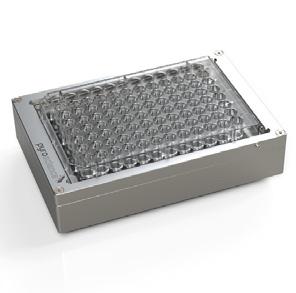







SESSION A12 - OMICS IN COMPARATIVE ANIMAL PHYSIOLOGY
CHAIR Sjannie Lefevre
09:0009:30
09:3009:45
Dr Richard Taylor
University of Edinburgh
Advancing cellular and genome biology in nonmodel fish using single cell omics
A12.10
09:4510:00
Dr Brent L. Lockwood University of Vermont
Single nuclei multiome ATAC and RNA sequencing reveals the molecular basis of thermal acclimation in Drosophila melanogaster embryos
A12.11
Dr Christian Bock
Alfred Wegener Institute
Helmholtz Centre for Polar and Marine Research
Metabolic profiling of muscle performance changes in the Atlantic king scallop, Pecten maximus, to ocean warming and acidification
A12.12
10:0010:15
10:1510:30
Dr Lauric Feugere
MEEP lab Dpt. de Biologie
Chimie et Géographie
Université du Québec à Rimouski
Molecular Responses of the Northern shrimp facing combined Ocean Warming and Acidification across the Northwest Atlantic Reveal Intraspecific Plasticity
A12.13
Dr Michael Collins
University of Plymouth
Defining thermal limits: application of a novel, phenomic approach
A12.14
10:3011:00
A18 - PHENOTYPIC PLASTICITY AND ACCLIMATION MECHANISMS IN A CHANGING WORLD A21 - BIOMECHANICS
Jeremy De Bonville and Zara-Louise Cowan
Dr Madison Earhart
University of British Columbia, Zoology department
From the epigenome to performance: heatwave resilience through impressive thermal plasticity in white sturgeon
A18.38
Miss Marine Escura Laboratoire
Microorganismes : Génome et Environnement (UMR CNRS 6023)
Metabolic acclimation: compensation or thermal stress?
A18.39
Prof Timothy Clark Deakin University
Potential for gill-oxygen limitation in acute but not chronic thermal tolerance
A18.40
Dr Frederik Püffel
Imperial College London
Behavioural biomechanics: Leaf-cutter ants avoid mechanical difficulties during cut initiation by adjusting cutting strategy
A21.49
Mr Dilanka Deegala
Imperial College London Wear resistance of insect mandibles
A21.50
Jensine Coggin Coastal Carolina University
Pressure field surrounding bluegill sunfish (Lepomis macrochirus) during suction-feeding
A21.51
Viktoriia Kamska City University of Hong Kong
The helmeted hornbill’s’ hammer: Complex anatomy and impact-resistant structural design of the casque
A21.52
Heather Bauer Reid
Trent University
Effects of heatwave exposure on the metabolism and swimming performance of a nearshore marine fish, Cymatogaster aggregata
A18.41
Caitlin McAndry
University of Plymouth
Thermal acclimation drives shift in thermal performance curves at different levels of organisation.
A18.42
NANOMATERIALBASED BIOSENSING IN PLANT AND ENVIRONMENT
P7 - TRANSLATIONAL PLANT BIODIVERSITY
Dr Firat Güder
Imperial College London TBC
P4.4
Prof Nils Stein
Leibniz Institute of Plant Genetics and Crop Plant Research (IPK) Barley pangenome unlocks global diversity for crop biology and improvement P7.1
Stanislav Kopriva University of Cologne Introduction to TransCend - Center for Translational PlantBiodiversity Research P7.2
Dr Lukáš Spíchal Czech Advanced Technology and Research Institute (CATRIN) Palacký University Olomouc
Optical sensor-based high-throughput plant phenotyping with AI-driven picture segmentation and parameter extraction P4.5
Miss Alexandra Milliken
University of Essex Improving Yield Potential by Exploiting the Natural Variation in Pea (P. sativum) P7.3
Mrs Maja Mielke
University of Antwerp
Biting fast or biting hard? Comparative XROMM analysis reveals functional trade-offs in beak movements of feeding songbirds.
A21.53
Dr Pauline Provini
Muséum national d'Histoire naturelle
Upper vocal tract of birds deformed by passive motions: implications for sound production
A21.54
Jan Zdražil
VSB - Technical University of Ostrava
The Digital Greenhouse: Harnessing AI for Advanced Plant Growth Monitoring and Prediction
P4.6
Dr Alessandra Renella University of Molise Metabolomic Characterization of Autochthonous Lentil Ecotypes
P7.4
Miss Katie Jeynes-Cupper University of Birmingham mobileRNA: A new tool for efficient analysis of RNA expression in multiple genomes
P7.5
A13 - POWERING THROUGH: MITOCHONDRIAL PLASTICITY AND HOMEOSTASIS UNDER PHYSIOLOGICAL CHALLENGES
Jules Devaux, Lucie Gerber and Amanda Wiesenthal
Prof Wendy Hood
Auburn University
Remodelling the powerhouse: Mitochondria morphology and dynamics in ecological and evolutionary processes
A13.2
C3 - THE CYTOSKELETON ACROSS KINGDOMS
Marcus Braun
Prof Michael Sixt IST
Global coordination of protrusive forces in migrating immune cells C3.16
OED7 - CREATING A DIVERSE AND INCLUSIVE BIOSCIENCES CURRICULA
Nicola Veitch
Miss Alice Harford
University of Auckland
Is the acute thermal tolerance limit of Banded and parrot wrasse (Notolabrus fucicola and Chlororus sordidus) cardiac mitochondria determined by changes in mitochondrial ultrastructure
A13.3
Mélanie Aminot
Université de Moncton
Testing traditions: Validating mitochondrial density markers in ectothermic species A13.4
Fatima Cvrčková
Charles University
Plant Class I formins: from actin organizers to active cargoes of membrane trafficking C3.17
Dr Eva Malone
Edinburgh Napier University Developing Inclusive Curricula in the Biological Sciences: Getting Started OED7.1
A17 EXPLORING THE MECHANISMS, PROCESSES, AND EVOLUTIONARY IMPACTS OF TRANSGENERATIONAL PLASTICITY
Diana Madeira, Piero Calosi and Carolina Madeira
Dr Melissa Pespeni
The University of Vermont, USA
Epigenetic and genetic mechanisms uniquely contribute to evolutionary rescue from global change A17.3
A2 - FROM THE LAB TO THE FIELD: INCORPORATING ENVIRONMENTAL RELEVANCE INTO EXPERIMENTAL BIOLOGY
Dr. Sandra Binning and Dr. Tamzin Blewett
Dr Amelia Munson
Swedish University of Agricultural Sciences
Taking our understanding of thermal influences on social behaviour from the lab to the field A2.19
Miss Adèle Léger
Université de Moncton
Seasonal effect on metabolism and mitochondrial supercomplex assembly in honey bees (Apis mellifera)
A13.5
Mr Rajdeep Ghosh
Charles University
Characterizing the role of plant class I formins in symplastic transport C3.18
Dr Victoria Paterson
University of Glasgow Student-Staff Partnerships the way forward for an inclusive curriculum-Some insights before jumping in OED7.2
Dr Moises Bernal
Auburn University, Alabama
Transgenerational responses of marine fishes to ocean warming and habitat degradation A17.4
Dr Georgina Rivera Ingraham
Griffith University
Life at the extremes: adaptations enabling an intertidal reef crab to survive in air and hyperoxia.
A13.6
Camila Goldy
Laboratoire Reproduction et Développement des Plantes
Université de Lyon
Role of actin cytoskeleton in plant cell division
C3.19
Mr Liam Connell
University College Dublin
Transgenerational response of the marine ragworm Hediste diversicolor to current and future experimental ocean conditions
A17.5
Steven Cooke
Carleton University
Elevating the Environmental Relevance and Impact of Experimental Field Biology Through Knowledge CoProduction A2.20
Ms Sidney Martin
University of Alberta
They’re Sisters Not Twins: Understanding the differences in lab-reared & wild caught Daphnia pulex responses to ultraviolet filter exposure. A2.21
Prof Ben Speers-Roesch University of New Brunswick Rapid Thermal Acclimation of Cardiac and Whole Animal Heat Tolerance in Lab and Field Populations of a Eurythermal Fish
A2.22
Dr Gloria Massamba N'Siala
Old Dominion University
Changes in plasticity patterns across multigenerational exposure to combined global change drivers in the marine annelid Ophryotrocha labronica
A17.6
REFRESHMENT BREAK / EXHIBITION
Dr Marco Fusi
Newcastle University
Accounting for ecologically relevant oxygen fluctuation explains thermal tolerance plasticity in marine species
A2.23
SESSION A12 - OMICS IN COMPARATIVE ANIMAL PHYSIOLOGY
CHAIR
11:0011:30
Christian Damsgaard
Dr Daniel Warren
Saint Louis University
How 'omics' does and does not help us understand the mechanisms of anoxia tolerance in turtles
A12.15
11:3011:45
Magdalena Winklhofer University of Oslo
DNA methylation alterations during anoxia and re-oxygenation in crucian carp brain
A12.16
11:4512:00
Mr André Cuenca MEEP - Dpt. de Biologie
Chimie et GéographieUniversité du Québec à Rimouski
Proteomic insights on benthic invertebrates responses to an in situ chronic deoxygenation gradient
A12.17
12:0012:15
Mr Raphael Koll University of Hamburg Institute of Cell- and Systems Biology of Animals
Wild fish holobiont response to abiotic gradients in the Elbe estuary A12.18
12:1512:30
Ms Eda Dönmez University of Hamburg
Integrative multi-omics approach reveals a possible adaptation of harbour porpoise lung tissue as response to damage A12.19
A18 - PHENOTYPIC PLASTICITY AND ACCLIMATION MECHANISMS IN A CHANGING WORLD A21 - BIOMECHANICS
Jeremy De Bonville and Anna H. Andreassen
Eugénie Dereuder Dufour
University of Rostock
Does fluctuating hypoxia and hypercapnia interact with the response of the bivalve Mytilus edulis to a heat wave scenario?
A18.44
Dr Mylene Mariette Doñana Biological Station - Deakin University
Thermal acclimatisation to heatwaves is rapid but sex-specific in wild zebra finches
A18.43
Mr WEN-YUAN ZHANG
National Taiwan Ocean University Institute of Marine Biology Keelung Taiwan
Metabolic traits, chemotaxis, and environmental interactions of hydrothermal vent crab Xenograpsus testudinatus
A18.45
Dr Carolina Madeira
University Lisbon Iberian goby populations from colder sites display low phenotypic variation despite high molecular plasticity in response to heat
A18.46
Sarah Kempf
Alfred Wegener Institute for Polar and Marine Research
Transcriptomic response of Polar cod, Boreogadus saida, to ocean acidification and warming A18.47
Dr Natasha Kruger Faculty of Science and
Engineering University of Wolverhampton
Evidence for rapid adaptation of thermal performance of invasive Xenopus laevis tadpoles A18.48
P7 - TRANSLATIONAL PLANT BIODIVERSITY
Pauline Provini Nuria De Diego Sanchez Franziska Fichtner
Dr Martin Horstmann
Ruhr-University Bochum Effects of inducible defences and environmental factors in Daphnia predator-prey interaction
A21.56
Dr Elizabeth Gregorio Laboratoire Physique et mécanique des milieux Hétérogènes (PMMH)
Identifying Ecological Differences in the Wakes of Swimming Snakes
A21.55
Ms DONGYUE WANG
Chiba university Can compliant skin vibration provide a novel drag reduction strategy in dolphin swimming?
A21.57
Dr Sagar Arya Khalifa University Facile Nano-Alchemy to Synthesize Bacterial Cell Membrane-Derived Nanovesicles and Confluent Membrane Layers on Planer Surfaces and Nanoparticles for Versatile Applications
P4.7
Laura Rossini
University of Milan
Exploring barley mutant and germplasm collections for plant architecture genes and alleles
P7.6
Miss Chelsea Millward
James Cook University Escape response timing and kinematics in a deepwater chondrichthyan, the spotted ratfish, Hydrolagus colliei
A21.58
Dr Robert Cieri
University of British Columbia
Airway anatomy and airflow patterns in whale lungs
A21.60
Mr Christian Lorenz
Università degli Studi di Napoli Federico II
Testing the potentiality of Technosol-isolated PGPB to enhance plant growth under saline conditions
P4.8
Prof Nicolaus Von Wirén IPK Gatersleben
Nitrogen deficiency shapes root system architecture through hormone signaling pathways P7.7
Dr Jian You Wang Jian You Wang Distinguishing the specific functions of canonical strigolactones as rhizospheric signals P7.8
Dr Sebastian Kruppert University of Freiburg
The fast coagulating latex in Campanula P4.9
Prof Hiroshi Wada Ehime University
‘Roly-poly Toy’ Motion during Pollen Exudation May Be Essential for Rapid Pollen Adhesion in Rice P7.9
12:3013:30
LUNCH/EXHIBITION / MEET THE SPECIAL INTEREST GROUPS
13:3014:30 BIDDER LECTURE (MERIDIAN)
A13 - POWERING THROUGH: MITOCHONDRIAL PLASTICITY AND HOMEOSTASIS UNDER PHYSIOLOGICAL CHALLENGES
Jules Devaux, Lucie Gerber and Amanda Wiesenthal
Dr Derek Somo
McMaster University
Integrative aspects of respiratory and metabolic performance in fish under dynamic temperature and oxygen conditions: insights from intertidal fishes
A13.7
A22 - OPEN ANIMAL OED7 - CREATING A DIVERSE AND INCLUSIVE BIOSCIENCES CURRICULA
Jenelle McCuaig and Connor Stewart
Prof Fredrik Jutfelt
University of Gothenburg
Mechanisms of climate warming impacts on fish
A22.39
Mrs Nicole Vogt
AWI Helmholtz Centre for Polar and Marine Research
Physiological response to acute warming of reproducing male and female polar cod (Boreogadus saida) using MRI
A22.40
Dr Emily Beck
University of Oregon
Extreme intraspecific mitochondrial genomic divergence in threespine stickleback provides a unique system for understanding mito-nuclear dynamics
A13.8
Emma Rhodes Auburn University
Measuring mitochondrial respiratory performance in closely related migrant and non-migrant avian species
A13.9
Mateusz Augustyniak Nicolaus Copernicus University in Toruń
Interactive effects of density and elevated temperature on foraging efficiency of aquatic predator A22.41
Prof Johannes Overgaard Aarhus University Keep on pumping: Cold tolerant Drosophila resist hypothermic depolarization of muscle membrane potential A22.42
Nicola Veitch
Dr Katharine Hubbard
University of Hull
Ethnic Diversity and Disability in UK Bioscience: Structural Biases and Recommendations for Action
OED7.3
A17 EXPLORING THE MECHANISMS, PROCESSES, AND EVOLUTIONARY IMPACTS OF TRANSGENERATIONAL PLASTICITY
Carolina Madeira and Lauric Feugere
Dr Diana Madeira
University of Aveiro
The extensive remodelling of the proteome across generations underpins lifehistory traits robustness under ocean warming in a marine annelid
A17.7
A2 - FROM THE LAB TO THE FIELD: INCORPORATING ENVIRONMENTAL RELEVANCE INTO EXPERIMENTAL BIOLOGY
Dr. Sandra Binning and Dr. Tamzin Blewett
Dr Kerri Lynn Ackerly
The University of Texas at Austin
Assessing multi-stressor impacts of toxicants and climate change on model and non-model species
A2.24
Dr Stewart White University of Glasgow
Decolonising the curriculum – a case study from Tropical Ecology
OED7.4
Mrs Fanny Vermandele MEEP laboratory Dpt.
Biologie Chimie et Géographie Université du Québec à Rimouski
Does rapid adaptation to ocean warming and acidification leave behind a cellular metabolomic and lipidomic signature in a marine copepod?
A17.8
Mr Ludovic Toisoul University of Turku Gasping for oxygen: The cross-generational plasticity of metabolism in Gasterosteus aculeatus exposed to fluctuating hypoxia A17.9
Prof Martin Reichard Czech Academy of Sciences
Reproductive behaviour of bitterling fish in experimental and natural conditions
A2.25
Dr Agata Rudolf
AGH University of Science and Technology
Mitochondrial stress under exposure to ionising X-radiation
A13.10
Erwan Piot
CNRS UMR7179
Does cerebral blood vessel phenotype represent and adaptative response to repeated hypoxia in the southern elephant seal?
A22.43
Ms Helena Norman University of Glasgow
The interplay between fish sleep and ecophysiology, behaviour and responses to environmental change
A22.44
Dr Emily May Armstrong University of Glasgow
Integrating Intersectionality: A New Lens on Leadership in Experimental Biology
OED7.5
Dr Amélie Crespel University of Turku Fish cross-generational response to hypoxia: can plasticity pave the way to evolution?
A17.10
Valentine Loiseau Université du Québec à Rimouski
From field insights to lab experiments: unveiling estuarine community tolerance through multistressor studies A2.26
KayLene Yamada
Auburn University
Comparison of mitochondrial performance of white-footed mice in laboratory, seminatural, and wild populations
A2.27
Dr Andrea Rummel Rice University
Quantifying regional heterothermy in flying bats in the field and laboratory A2.28
SESSION A8 - LINKS BETWEEN PHYSIOLOGY AND BEHAVIOUR IN A CHANGING WORLD
CHAIR Suzie Currie and Kath Sloman
14:3015:00
15:0015:15
Dr Natalie Pilakouta
University of St Andrews
Linking thermal responses in physiology and behaviour in the lab and in the field
A8.25
Prof Anne Peters Monash University
Thermoregulatory physiology and behaviour of tropical and temperate songbird nestlings reveal limited capacity for cooling and high risk of dehydration
A8.46
Prof Gary Burness
Trent University
Body temperature as a flexible trait during parental care in free-ranging tree swallows
A8.26
A18 - PHENOTYPIC PLASTICITY AND ACCLIMATION MECHANISMS IN A CHANGING WORLD
Anna H. Andreassen and Zara-Louise Cowan
Dr Alex Little
McMaster University Regulatory pathways for plasticity and hidden costs of change
A18.49
15:1515:30
15:3015:45
Dr Lumír Gvoždík
Institute of Vertebrate Biology AS CR
Beyond thermotolerance: Unveiling overlooked mechanisms shaping vulnerability of ectotherms to extreme temperature events
A8.27
Dr Rasmus Ern Norwegian University of Science and Technology
Linking metabolic traits and behavioural responses to aquatic hypoxia in zebrafish (Danio rerio) acclimated to different temperatures.
A8.33
Mr Jeremy De Bonville Groupe de Recherche
Interuniversitaire en Limnologie University of Montreal
Capacity for rapid thermal acclimation differs between life stage and species in fish
A18.50
Ms Moa Metz
Norwegian University of Science and Technology
Physiological mechanisms of slow and fast thermal acclimation in a fish A18.51
C4 - CHROMOSOME INSTABILITY AND DNA REPAIR
A9 - MECHANICS OF MECHANORECEPTION ACROSS SCALES AND KINGDOMS
P7 - TRANSLATIONAL PLANT BIODIVERSITY
Dr. Tatiana García-Muse Brian Saltin Nils Stein
Dr. Yi-Tzu Kuo
Leibniz Institute of Plant Genetics and Crop Plant Research (IPK) Gatersleben Centromere diversity –Does DNA repair drive the evolution of repeat-based holocentromeres?
C4.3
Dr Amy SAIK
Universiti Tunku Abdul Rahman (UTAR)
Integration of reprogramming transgenes into AML-M5-iPSC caused differentiated monocytic cells to be resistant to Doxorubicin
C4.4
Sanjana Venkatesh
McMaster University
Exploring mechanisms of acclimation responses to thermal and saline stress in the cnidarian, Nematostella vectensis
A18.52
Dr Nuria Ferrandiz Institute of Molecular and Cellular Biology of CancerCancer Research Center The Impact of Endomembrane Dynamics on Genetic Stability
C4.5 (15:30-16:00)
Dr Erin Brand University of Chicago Tree cricket tympanal mechanics in noisy environments
A9.1
Prof Katherine Denby University of York Understanding and exploiting Amaranth diversity for climateresilient smallholder agriculture
P7.10
Dr Jean-Marie Frachisse
CNRS I2BC Department of Cell Biology
Mechanotransduction through force-gated ion channels in plants
A9.2
Tom Winkler
CEPLAS Cluster of Excellence on Plant Sciences Institute for Plant Sciences University of Cologne
Adaptation through seed color changes during repeated amaranth domestication
P7.11
Dr Marios Chatzigeorgiou
Michael Sars Centre
University of Bergen
The mechanical basis of rheotaxis and multianimal behaviors in a protochordate zooplanktonic larva.
A9.3
Herlander Azevedo
Biology Dep. and BIOPOLIS-CIBIO
University of Porto
Genomic evidence of of adaptive hybridization in Western European grapevine
P7.12
A13 - POWERING THROUGH: MITOCHONDRIAL PLASTICITY AND HOMEOSTASIS UNDER PHYSIOLOGICAL CHALLENGES
Jules Devaux, Lucie Gerber and Amanda Wiesenthal
Dr Alyssa Bowden
The University of Queensland
Enhancing mitochondrial efficiency: small dietary changes improve fish growth under chronic thermal stress
A13.11
Mr Léopold Ghinter Université de Bretagne
Occidentale - IFREMER
The heart’s energy secrets: lipids to grease mitochondrial performance in sardines, Sardina pilchardus
A13.12
Dr Ensiyeh GhanizadehKazerouni
University of British Columbia
Mitochondrial energetics of gill tissue regeneration in Atlantic salmon (Salmo salar)
A13.13
Mr Vincent Mélançon
Université de Montréal
Looking at a smaller scale: exploring the link between endoparasite infections and cellular metabolism
A13.14
A21 - BIOMECHANICS OED5 - ESTABLISHING, EVIDENCING AND EXCELLING IN YOUR TEACHING CAREER
Nicolai Konow
Dr Daniele Liprandi
Universität Greifswald
Extreme elongations of Kukulcania hibernalis threads thanks to looped metastructures A21.61
Dr Jonas Wolff
University of Greifswald
Targeted capture of weaver ants with a unique poweramplified silk trap in a tropical cobweb spider A21.62
Miss Lauren Eggleton
University of Sheffield Trail Watch: Investigating Gastropod Mucus Trails using Optical Profilometry
A21.63
Katharine Hubbard
A17 EXPLORING THE MECHANISMS, PROCESSES, AND EVOLUTIONARY IMPACTS OF TRANSGENERATIONAL PLASTICITY
Lisandrina Mari and Katharina Ruthsatz
Dr Carlos Guerrero-Bosagna
Carlos Environmental Epigenetics: Implications from Health and Disease to Evolution A17.11
WORKSHOP
WORKSHOP
Dr Viktoriia Kamska
City University of Hong Kong
Structural blues in stingrays and sharks: contrasting mechanisms for nature's rarest color
A21.64
Tomer Urca
University of Rostock
An analysis of the optomotor response and spatial resolution of the miniature western flower thrips, Frankliniella occidentalis
A21.65
WORKSHOP
Dr Alexandra Weyrich Leibniz Institute for Zoo and Wildlife Research Epigenetic signatures of social status in wild female spotted hyenas (Crocuta crocuta)
A17.12
P5: NOVEL MECHANISMS OF RECEPTOR KINASE ACTIVATION IN PLANTS
Elwira Smakowska
Prof Martin Stegmann Ulm University Regulation of plant immunity by CEP peptides P5.1
WORKSHOP
Prof Xuelei Lai
Huazhong Agricultural University
The OsSRO1c-OsDREB2B complex senses low temperature to confer cold tolerance via direct regulation of COLD1 in rice
P5.2
Prof Julia Santiago University of Lausanne
A new connection to the matrix: structural role of peptides to sustain pollen tube expansion
P5.3
Dr Pat Monaghan
University of Glasgow
Sensitive periods in the transmission of intergenerational and transgenerational effects; parent and offspring perspectives
A17.13 (15:30-16:00)
more afternoon sessions overleaf >
SESSION A8 - LINKS BETWEEN PHYSIOLOGY AND BEHAVIOUR IN A CHANGING WORLD
CHAIR Suzie Currie and Kath Sloman
15:4516:00
Dr Heidi MacLean
Aarhus University
What physiological capacity and behavioural choice can tell us about thermal adaptation
A8.29
16:0016:30
A18 - PHENOTYPIC PLASTICITY AND ACCLIMATION MECHANISMS IN A CHANGING WORLD
Anna H. Andreassen and Zara-Louise Cowan
Madalena Missionário
University of Aveiro
Physiological resilience of a shallow water shrimp to extreme weather events
A18.33
C4 - CHROMOSOME INSTABILITY AND DNA REPAIR
Dr. Tatiana García-Muse
Dr Nuria Ferrandiz
Institute of Molecular and Cellular Biology of CancerCancer Research Center
The Impact of Endomembrane Dynamics on Genetic Stability
C4.5 (15:30-16:00)
A9 - MECHANICS OF MECHANORECEPTION ACROSS SCALES AND KINGDOMS
Brian Saltin
Brian Saltin
University of Bonn On the sensitivity of mechanosensilla in Drosophila legs
A9.4
P7 - TRANSLATIONAL PLANT BIODIVERSITY
Nils Stein
PECHA KUCHA
Miss Anastasia Kolesnikova
University of Southampton
Domesticate this, not that: the implications of mutation rate and selection on present-day agriculture
P7.14
Mr Hikari Ueda
Ehime university
On-site Extraction and Rapid Determination of Cellular Metabolites
Associated with Pollen Foot Formation inArabidopsis thaliana P7.13
Catherine Walsh
Lancaster University
PlantAct: Using plantsoil solutions for climate challenges
P7.16
Ms Susan Abernathy University of Nottingham Unravelling the mysteries within: A closer look at the biodiversity of aerial adventitious roots in aroids and their translational implications in indoor greenspaces
P7.15
REFRESHMENT BREAK / EXHIBITION
A13 - POWERING THROUGH: MITOCHONDRIAL PLASTICITY AND HOMEOSTASIS UNDER PHYSIOLOGICAL CHALLENGES
Jules Devaux, Lucie Gerber and Amanda Wiesenthal
Dr Jules Devaux
University of Auckland TMAO regulates mitochondrial metabolism in brain and heart of the anoxia-tolerant epaulette shark Hemiscyllium ocellatum
A13.15
A21 - BIOMECHANICS OED5 - ESTABLISHING, EVIDENCING AND EXCELLING IN YOUR TEACHING CAREER
Nicolai Konow
Mr Sam Maguire
University of sheffield Exploring the Structural Complexity of Mammalian Spines and Quills via Nanofocused X-ray Scattering
A21.66
Katharine Hubbard
A17 EXPLORING THE MECHANISMS, PROCESSES, AND EVOLUTIONARY IMPACTS OF TRANSGENERATIONAL PLASTICITY
Lisandrina Mari and Katharina Ruthsatz
Dr Pat Monaghan
University of Glasgow Sensitive periods in the transmission of intergenerational and transgenerational effects; parent and offspring perspectives
A17.13 (15:30-16:00)
P5: NOVEL MECHANISMS OF RECEPTOR KINASE ACTIVATION IN PLANTS
Elwira Smakowska
Dr Rafael León Morcillo
Institute for Mediterranean and Subtropical Horticulture La Mayora
RAPID ALKALINIZATION
FACTOR 22 is a key modulator of the root hair growth responses to fungal ethylene emissions in Arabidopsis
P5.5
more afternoon sessions overleaf >
SESSION A8 - LINKS BETWEEN PHYSIOLOGY AND BEHAVIOUR IN A CHANGING WORLD
CHAIR Suzie Currie and Kath Sloman
16:3017:00
Dr Alex Gunderson Tulane University
Behavioral thermoregulation and the evolution of thermal acclimation
A8.30
Dr Daphne Cortese MARBEC University of Montpellier CNRS
IFREMER IRD
Physiological and behavioural responses to increased temperature in the Atlantic bluefin tuna A8.47
17:0017:15
SAB2 - PLANT EPIGENETICS: FROM MODELS TO CROPS
C4 - CHROMOSOME INSTABILITY AND DNA REPAIR
Hans-Wilhelm Nuetzmann
Dr Hana Šimková
Institute of Experimental Botany
Organization and function of the 3D barley genome
SAB2.7
17:1517:30
Ms Chanel Rampartab University of the Witwatersrand
The relationships between ambient heat load, behaviour and body temperature in small diurnal mammals in a dryland environment
A8.31
Mr Alex Berry
Deakin University
Behaviour and physiology in two Mytilus species, and their hybrids, inhabiting one of the fastest warming regions of the ocean globally.
A8.32
17:3017:45
17:4518:00
Dr Anna Andreassen
Norwegian University of Science and Technology
Selection on warming tolerance alters physiology and life history traits in zebrafish
A8.28
Dr Aude Noiret
Institut Pluridisciplinaire
Hubert Curien
Hot kings: behavioral and physiological responses of king penguins demonstrate they suffer from heat stress when breeding on land
A8.34
19:00
A16 - TIPPING THE SCALES: BALANCING ENERGY ACQUISITION EXPENDITURE AND ALLOCATION IN AN EVER-CHANGING WORLD
P7 - TRANSLATIONAL PLANT BIODIVERSITY
Dr. Tatiana García-Muse Amanda Pettersen and Neal Dawson Catherine Walsh
Dr Eva Dvorak Tomastikova
Institute of Experimental Botany Czech Academy of Sciences
Out of the haze of DNAprotein crosslink repair in plants
C4.6
Dr Claudia Martinho
Max Planck Institute for Biology
Defying Mendel’s laws: sulfurea paramutation unveils new principles of epigenetic inheritance in tomato.
SAB2.8
Dr Nadia FernándezJiménez
Complutense University of Madrid
The connection between structural nucleoporins and meiosis: when the chromatin collapses.
C4.7
Prof David Reznick University of California Riverside Guppy Life History
Evolution – Insights on Costs and Tradeoffs Derived from 40 years of Research
A16.11
Dr Johannes Kromdijk University of Cambridge
What can we learn from the evolutionary history of Photosystem II subunit S to explain its regulatory role in terrestrial photoprotection?
P7.17
Mr Nathan Frizot University Clermont Auvergne Ectotherm size-at-age in a warmer, more variable and resource-poor world
A16.12
Sebastian Triesch
Heinrich Heine University
Düsseldorf
Unraveling the mechanisms of C3-C4 intermediate photosynthesis in the Brassicaceae family P7.18
Milad Shokri University of Salento Foraging decisions and space use behavior are linked to metabolic rate across temperatures A16.13
Dr Robyn Emmerson
University of Birmingham DNA methylation contributes to plant acclimation to naturally fluctuating light
SAB2.10
Amanda McGrosky
Duke University
Primate total energy expenditure: understanding how total energy bugets and energy allocation vary (or don't!)
A16.14
AWARDS DINNER
END OF DAY 3
A13 - POWERING THROUGH: MITOCHONDRIAL PLASTICITY AND HOMEOSTASIS UNDER PHYSIOLOGICAL CHALLENGES
Jules Devaux, Lucie Gerber and Amanda Wiesenthal
Prof Steven Hand
Louisiana State University
Metabolic transitions in an invertebrate extremophile: Mitochondrial challenges presented by diapause and anoxia.
A13.16
A21 - BIOMECHANICS OED5 - ESTABLISHING, EVIDENCING AND EXCELLING IN YOUR TEACHING CAREER
Nicolai Konow
Dr Kayleigh Rose
Swansea University
Measuring the metabolic cost of unrestrained flight using wake-capture respirometry
A21.68
Dr Jiaxin Rong
Chiba University
Trailing-edge fringes enable robust aeroacoustic performance in owl flight: a computational study
A21.67
Dr Antoine Stier
Institut Pluridisciplinaire
Hubert Curien UMR7178 Université de Strasbourg CNRS
Complex interplays between stress sensitivity, stress exposure, and glucocorticoid signalling are shaping mitochondrial physiology
A13.17
Dr Roi Gurka
Coastal Carolina University
Fluid-wing interaction over inspired owl wing with leading edge serrations
A21.69
Katharine Hubbard
A17 EXPLORING THE MECHANISMS, PROCESSES, AND EVOLUTIONARY IMPACTS OF TRANSGENERATIONAL PLASTICITY
Diana Madeira, Katharina Ruthsatz and Lisandrina Mari
Dr Hayley Cameron University of Melbourne
Re-evaluating the evidence for transgenerational phenotypic plasticity
A17.14
WORKSHOP
P5: NOVEL MECHANISMS OF RECEPTOR KINASE ACTIVATION IN PLANTS
Verónica G. Doblas
Thorsten Hamann
Norwegian University of Science and Technology
The opposing roles of THESEUS1 in modulating Jasmonic and Abscisic acid production
P5.6
Dr Jasmin Wong
University of Bristol
Decoding aeroelastic response in flight feathers for flow sensing
A21.74
Dr Felix Mark
Alfred Wegener Institute for Polar and Marine Research
Advances and potential pitfalls in mitochondrial respirometry in fish
A13.19
Mr George Yi
University of Bristol Flight morphology differences between two windhovering kestrels in a wind tunnel
A21.71
Prof Lewis Halsey
Lewis George Halsey
Fat homing pigeons don’t use more energy: an excellent animal model for investigating flight physiology in the wild
A21.72
WORKSHOP
Dr Simone Baldanzi
Universidad de Valparaiso
Jack of none, master of all changes: the maternal investment of the kelp crab T. dentatus increase under unpredictable daily environmental fluctuations.
A17.15
Dr Zuzana Starostová
Charles University
WORKSHOP
Catch-up growth and overweight adults in the offspring of young gecko mothers
A17.16
Denise Arico
Laboratoire Reproduction et Développement des Plantes
ENS de Lyon
Identification of Plasma Membrane – Cell Wall linkers potentially involved in mechanosensing.
P5.7
Dr Jenny Russinova
VIB-UGent
Scaffold-mediated regulation of brassinosteroid signaling
P5.8
WORKSHOP
30-minute Discussion
WORKSHOP AWARDS DINNER
END OF DAY 3
SESSION A8 - LINKS BETWEEN PHYSIOLOGY AND BEHAVIOUR IN A CHANGING WORLD
CHAIR Suzie Currie and Kath Sloman
09:3010:00
SAB2 - PLANT EPIGENETICS: FROM MODELS TO CROPS
10:0010:15
Rachael Morgan
University of Bergen
Behavioural and physiological responses of coral reef fish to progressive hypoxia
A8.35
Dr Garett Allen
Marine Research Station
Institute of Cellular and Organismal Biology
Academia Sinica
Impacts of ocean acidification on cephalopod vision: Do squid have a hard time seeing into the future?
A8.48
Ms Alycia Valvandrin
University of Turku
The missing link: Unravelling the phenotypic and genetic correlation of fish physiology and behaviour under fluctuating hypoxia
A8.36
10:1510:30 Rosemary Minns University of Winnipeg
Elevated carbon dioxide does not change behaviour of Japanese Medaka
A8.37
10:3010:45
Dr Luca Pettinau
Wageningen University and Research
"Buried Alive": the effects of developmental exposure to fine sediment on brown trout’s survival, growth, metabolic rate and escape response
A8.38
10:4511:00
A4 - INNOVATIVE METHODS AND TECHNIQUES IN BIOMECHANICS
Tamara Lechon Gomez Daniele Liprandi and Fabian Plum
Iva Mozgova
Biology Centre CAS Coordination of metabolic and developmental transitions during seedling establishment - emerging roles of PRC2
SAB2.11
Mrs Noraly Van Meer
Wageningen University
Fluorescence-based automatic quantification of 3D muscle-fibre arrangement in larval fish
A4.7
A16 - TIPPING THE SCALES: BALANCING ENERGY ACQUISITION EXPENDITURE AND ALLOCATION IN AN EVER-CHANGING WORLD
Neal Dawson and Edward Ivimey-Cook
Dr Elisa Thoral
Lund University
Similar challenges but different consequences: how climate change shapes metabolic strategies in endotherms and ectotherms
A16.15
Dr Zdravko Lorković
Gregor Mendel Institute of Molecular Plant Biology Histone variants and their impact on chromatin architecture and function
SAB2.12
Dr Lydia France
University of Oxford Shapes and Dynamics of Bird Morphing Flight
A4.8
Ms Sarah Young-Veenstra
Saint Mary's University
Does early life freshwater tolerance or adult tolerance of combined stressors limit freshwater colonization in stickleback fishes?
A16.16
Prof David Taylor
David Taylor
Trees Avoid Fatigue Failure by Annual Growth
A4.9
Dr Ashley Baldwin Cardiff University
A role for histone methylation in both aroma production and colour development in strawberry fruit post-harvest?
SAB2.13
Dr M. Danielle McDonald University of Miami Rosenstiel School of Marine Atmospheric and Earth Science
How the physiology and behavior of Gulf toadfish, Opsanus beta, give them the ability to tolerate environmental extremes
A8.39
11:0011:30
P7 - TRANSLATIONAL PLANT BIODIVERSITY
Stanislav Kopriva
Prof Guido Van den Ackerveken Utrecht University
Insights into the biology of plant resilience and architecture from multiomics analyses of the LettuceKnow diversity set of 500 Lactuca lines
P7.20
Dr Robert Sharwood
Western Sydney University
Altering the primary carboxylase of C4 photosynthesis to improve crop resilience to future climates
P7.21
Dr Thomas Ruiz
WasserCluster Lunz
The energetic cost of food quality: trade-off between growth and maintenance under deteriorated nutritional context.
A16.17
Mr Takuto Kishimoto Keio University
High time-resolution measurement of a sea turtle's relative waterflow velocity using a pitot-type waterflow sensor
A4.10
Christos Tersenidis† Department of Botany School of Biology Faculty of Science Aristotle University of Thessaloniki GCN5 and ADA2b regulate pollen development and function in Arabidopsis thaliana.
SAB2.14
Alexander Koehnsen Experimental Zoology Wageningen University and Research
A Sepia cinema - using simulated prey to investigate the prey capture mechanics in cuttlefish
A4.11
Florencia Camus University College London Genomic constraints of resource allocation
A16.18
REFRESHMENT BREAK / EXHIBITION
Lorenzo Stagnati Università Cattolica del Sacro Cuore
Mapping Fusarium Ear Rot resistance using recombinant hybrids developed from the MAGIC maize population
P7.22
Dr Amanda Rasmussen University of Nottingham Inside out or outside in?
Using aroid indoor plants and field grown maize to gain translational insights about nitrogen uptake patterns.
P7.23
A22- OPEN ANIMAL A21 - BIOMECHANICS
Sarah Kempf Nicolai Konow
Emma Moyse
University of Plymouth
Now you see me, now you don't: artificial light at night alters predation on colourpolymorphic camouflaged prey
A22.45
Mr Connor Stewart University of Alberta
Understanding the North: The physiologic repercussions of chronic nickel exposure to the Arctic Char (Salvelinus alpinus)
A22.46
Ms Colette Martin Technische Universität
Braunschweig
The effects of polyethylene microplastic exposure on amphibian larval development and health physiology
A22.47
Mr Kyle Morrison
Kyle Morrison
A systematic evidence map and bibliometric analysis of the behavioural impacts of pesticide exposure on zebrafish
A22.48
Dr Marko Freese
Thünen-Institute of Fisheries Ecology
Consequences of chemical pollution on eel reproduction after a 6000+KM spawning migration
A22.49
Dr Julie Lucas MNHN
Impact of electromagnetic fields from offshore windfarm submarine electric cables on the development, biology and behavior ofScyliorhinus canicula
A22.50
Prof Simon Watkins RMIT University
Adjusted flapping techniques in bumblebees help mitigate disruptions in flight trajectories caused by directed gusts.
A21.73
Matthew Penn RMIT University
Kestrel kinematics during discrete gust encounters while windhovering in a wind tunnel
A21.70
Prof Yoshinobu Inada Tokai University
Wing design consideration of feathered dinosaur Anchiornis huxley using GA and aerodynamic performance analysis tool XFLR5 A21.75
Prof Simon Watkins RMIT University
Kestrel Aerodynamics: Evaluation Using a HighFidelity Robotic Bird A 21.76
Dr Yujing Xue Chiba University Hawkmoth forward flight with flexible wing hinge: aerodynamics and flight stability A21.77
Dr Simon Wilshin
The Royal Veterinary College Using neural networks to track mosquito pose A21.78
OED3 - FROM CLASSROOM TO COMMUNITY: APPLIED FRAMEWORKS IN ACTION
Jordon Millward and Luke McCrone
Dr Luke McCrone
Imperial College London
Bridging the gap: an ecological approach to integrating research and practice
OED3.1
P6 - PEPG: INTEGRATING GENOMICS AND PHENOMICS FOR CROP IMPROVEMENT
C4 - CHROMOSOME INSTABILITY AND DNA REPAIR
Liana Acevedo Siaca, John Ferguson Dr. Sara Jover-Gil
Dr Marc Heuermann
IPK Gatersleben
Natural plant growth in the IPK
PhenoSphere through dynamic environment simulation and FAIR handling of phenomic data
P6.28
Dr Isabelle Colas
James Hutton Institute
The control of Meiosis in large genome crop C4.8
Mr Jordon Millward Jordon Millward
Equitable Access to Higher Education: Understanding Student Interactions and Supporting Transitions in Biology Disciplines
OED3.2
Dr Lamis Abdelhakim
PSI (Photon Systems Instruments)
Image-based phenotyping protocol revealed the dynamic responses under combined abiotic stresses in potato plants
P6.29
Ms DALAL ALONAZY University of Aberdeen Genome-Wide Association Mapping and transcriptome analysis for heat tolerance in Bengal and Assam Aus Panel in the flowering stage P6.30
Dr Sachin Kumar Chaudhary Charan Singh University Genetic Information and Resources for Molecular Breeding of Wheat Pre-harvest Sprouting Tolerance and Grain Quality
P6.31
Miss Giorgia Del Cioppo University of Molise Enhancing plant stress phenotyping with machine learning: a novel approach for salt stress detection in Phaseolus vulgaris
P6.32
REFRESHMENT BREAK / EXHIBITION
Jovanka Vladejic
Institute of Experimental Botany AS CR v. v. i. New Kid on the Block: Discovery of Plant RAD60 and its Role in DNA-Protein Crosslink Repair C4.9
Dr Martina Dvorackova Masaryk University
Deficiency in H3 histone chaperones in Arabidopsis causes genome instability and triggers adaptive epigenetic changes in histone variants C4.10
Dr Tatiana Garcia-Muse
CABIMER-Universidad de Sevilla
Avoiding meiosis catastrophe by BRC-1/BRD-1 phosphorylation after DNA damage C4.11
more morning sessions overleaf >
SESSION A8 - LINKS BETWEEN PHYSIOLOGY AND BEHAVIOUR IN A CHANGING WORLD
CHAIR Chair: Suzie Currie and Kath Sloman
11:3012:00
12:0012:15
Daiani Kochhann
Acaraú Valley State University
Dealing with changes in an extreme world: how is living in tropical waters?
A8.40
Dr Louise Cominassi
University of Davis
California
Navigating Toxic Waters: Sub-lethal exposures to bifenthrin impact the anxiety and behavior of juvenile Chinook Salmon A8.49
Shamil Debaere
University of Antwerp
Searching for signs of stress in baby blacktip reef sharks: metabolic rate and behaviour
A8.41
12:1512:30
Mr Erwan Piot CNRS
One month for southern elephant seal pups to acquire aquatic skills before their first ocean trip: Stay longer or leave earlier?
A8.42
12:3012:45
SAB2 - PLANT EPIGENETICS: FROM MODELS TO CROPS
Chair: Tamara Lechon Gomez
Jurriaan Ton Jurriaan Ton
Primed plants do not forget: epigenetic drivers of immune memory
SAB2.15
Dr Miguel De Lucas
Durham University
Chromatin Orchestration in Plant Development: Insights from Brassinosteroid
Signaling and Flowering
Time Control
SAB2.16
A4 - INNOVATIVE METHODS AND TECHNIQUES IN BIOMECHANICS
Chair: Fabian Plum and Hendrik Beck
Mr Hendrik Beck
Imperial College London
A planar omnidirectional treadmill to study insect locomotion
A4.13
Mr Fabian Plum
Imperial College London
Artificial Intelligence meets Artificial Insects - a pipeline to produce synthetic data for machine learning applications in animal research
A4.14
Dr Felix Mark
Alfred Wegener Institute
Helmholtz Center for Polar and Marine Research
A novel AI supported pipeline for tail beat frequency analysis in swim tunnel respirometry
A4.15
Dr Daniele Liprandi
Universität Greifswald
EvoNEST: Transparent Data Management for Biological and Bio-mechanical Research
A4.16
Dr Rita Monarca CESAM - Centre for Environmental and Marine Studies
Prof Kranthi Mandadi Texas AM AgriLife Research
Noisy places, noisy animals? - Shrew responses to sound pollution
A8.43
12:4513:00
Prof Suzie Currie Acadia University
Some like it hot: Losing a dyadic contest decreases thermal sensitivity in an isogenic amphibious fish
A8.44
A16 - TIPPING THE SCALES: BALANCING ENERGY ACQUISITION EXPENDITURE AND ALLOCATION IN AN EVER-CHANGING WORLD
Chair: Edward IvimeyCook and Amanda Pettersen
Neil Metcalfe
University of Glasgow
How can we best measure the energetic trade-offs faced by animals?
A16.19
Dr Meike Stumpp
Christian-AlbrechtsUniversity Kiel
Metabolic costs of calcification – is skeletogenesis really an energetic challenge for marine larvae?
A16.20
Mr Alexander Rosén
Danish Technical University
Early-life temperature variability has life-stagespecific effects on later-life ontogenetic scaling of fish metabolic and growth rates
A16.21
Prof Lewis Halsey Lewis G Halsey
P7 - TRANSLATIONAL PLANT BIODIVERSITY
Chair: Sebastian Triesch
Dr Franziska Fichtner
Franziska Fichtner
The sugar-signal trehalose 6-phosphate modifies plant metabolism and development
P7.24
Ms Hannah Drieberg
University of Queensland Sugars and ABA: key regulators of axillary bud growth in the classical apical dominance model garden pea
P7.25
Prof Menachem Moshelion
The Hebrew University of Jerusalem Guidelines for designing and interpreting drought experiments in controlled conditions
P7.26
Novel strategies to screen and evaluate genetic- and chemical-based solutions for crop improvement
SAB2.17
Prof Hilary Rogers Cardiff University Pre-harvest exposure of rocket salad leaves to heat stress results in postharvest stress memory during chilled storage
SAB2.18
ROUND TABLE DISCUSSION
The enviable ability of zebra finches to get slim, even when eating a tasty high-fat diet
A16.22
Dr Hsin-Ju Chuang Institute of Cellular and Organismic Biology Academia Sinica Freshwater acidification induces fish inter-organ energy mobilization to enhance fitness
A16.23
13:0014:30 DIVERSITY LUNCH / EXHIBITION - MERIDIAN END OF CONFERENCE
MERIDIAN ROOM VIRGO ROOM
A22- OPEN ANIMAL A21 - BIOMECHANICS
Daria Bedulina Nicolai Konow
Ms Mihieka Bose
Ethophilia Research Foundation
Immune Boosting Against SARS CoV-2 Infection: An Approach to Traditional Medicine
A22.51
Katherine Ullrich
McMaster University
Modelling SETBP1
Haploinsufficiency Disorder (SETBP1-HD) in Zebrafish (Danio rerio)
A22.52
Christine Blurton
Comparative Immunobiology
Zoological Institute Kiel University
Saposin-like proteins in Caenorhabditis elegans: Unveiling substantial functions of a multidomain protein beyond antimicrobial activity.
A22.53
Dr Jane Behrens
DTU Aqua
Can reduced growth in cod having high infection loads with the liver worm Contracaecum osculatum be alleviated by ample food?
A22.54
Miss Smilla Tetzlaff
University of Bremen
Sea urchin larval digestion – the role of laminarin for larval fitness
A22.55
A21 - ANNUAL MEETING FOR THE BIOMECHANICS INTEREST GROUP
DIVERSITY LUNCH / EXHIBITION - MERIDIAN END OF CONFERENCE
SOCIETY

SEBIOLOGY.ORG #SEBCONFERENCE
- DAY 4 : FRTIDAY 5TH















Highlight the lack of diversity in the profile of past award winners


Increase both nominations and nominators from historically marginalised groups for SEB awards
Expand the action of the task force to include other Societies and bioscience awards
Everyone (members and non-members) can get involved. No previous experience is needed.
1. Join the SEB Awards Nomination Task Force
2. Suggest the name of someone deserving of a bioscience award for the SEB Task Force
3. Nominate someone in your own right

A2
FROM THE LAB TO THE FIELD: INCORPORATING ENVIRONMENTAL RELEVANCE INTO EXPERIMENTAL BIOLOGY
Dr Sergio Martinez-Bellver
University of Valencia
Towards a more naturalistic perspective: Enriched open field as an ethologicallyrelevant exploratory paradigm
A2.1
Dr Claudio Stasolla
University of Manitoba
Mapping of Quantitative Trait Loci (QTL) in Brassica napusL. for Tolerance to Water Stress
A2.2
Ms Ishika Pal
Ethophilia Research Foundation
Effect of extended darkness in a freshwater prawn species: a study on grooming behaviour plasticity
A2.3
Miss Gauri S Gharpure
National Centre for Biological Sciences
Surviving in the mountains: Assessing physiological parameters of Eristalis tenax (Diptera: Syrphidae) across an elevational gradient in the Himalayas
A2.4
Mr André L. R. Cuenca
MEEP - Dpt. de Biologie Chimie et Géographie - Université du Québec à Rimouski
Lipidomic profiling across the St. Lawrence River hypoxia gradient: a tale of the worm Neoleanira tetragona
A2.5
Miss Noémie Coulon
Muséum National d'Histoire Naturelle
Shark critical life stage vulnerability to monthly temperature variations under climate change
A2.6
Dr Daniel F Gomez Isaza
Harry Butler Institute Murdoch University
Are all fish the same? Importance of considering how intraspecific factors shape thermal limits
A2.7
Mar Pineda
University of Glasgow
Beneath the surface: exploring the behaviour of Amazonian fishes around fishing gears using underwater video observations
A2.8
Mr Hung Nguyen
Macquarie University
Optimization of rearing Transeius montdorensis in laboratory conditions
A2.9
Miss Demi Rotthier
University of Antwerp
Tracing the contamination's footprint: does cadmium and PFAS accumulate in Venus Fly trap when fed with contaminated Black Soldier Flies?
A2.10
Valentine Loiseau
Université du Québec à Rimouski
Surviving the deluge: Examining the vulnerability of an estuarine mollusk assemblage to water changes associated to flooding conditions
A2.11
Dr Yung-Che TSENG
Academia Sinica
Physiological responses to sulfide exposure of brachyuran crabs across diverse shallow-water hydrothermal vent systems
A2.12
Mr YU-CHUN WANG
National Taiwan University
DNA Mini-Barcoding Uncovers
Misrepresentation in Taiwan's Canned C at Food
A2.13
Mr Adrien Levillain
University of Strasbourg
Physiological markers of avian dehydration and perspectives in ecophysiology: assessing the hyperthermia-dehydration tradeoff
A2.14
Ms Francesca Leggieri
Francesca leggieri
Smaller pike eggs outperform bigger eggs in a global warming scenario
A2.15
Dr Ana Born-Torrijos
Department of Coastal Systems
NIOZ Royal Netherlands Institute for Sea Research
Importance of accounting for the infection status of an organism in isotope ecology studies: Using feeding experiments as an example
A2.16
Sara D Irish
University of East Anglia
Reduced expression of a single gene in C. elegans improves reproduction and population growth in semi-natural conditions
A2.17
Ms Sarena B Nagoor Pitchai
University of Hull
Effects of simulated heatwaves on the social amoeba Dictyostelium discoideum at single-cell and multicellular stages
A2.18
INNOVATIVE METHODS AND TECHNIQUES IN BIOMECHANICS
Dr Antoine Cribellier
Experimental Zoology Group
Wageningen University Wageningen
The Netherlands
A Python package to track the 3D flight kinematic of insects with DeepLabCut
A4.1
Haaris Asghar
Imperial College London
A selective plane illumination microscope to study form-function relationships in biological needles
A4.2
Mr George A Caldarescu
Experimental Plant Biology Charles University
Trichome tales: Exploring cell wall composition by Raman microscopy
A4.3
Dr Brett Klaassen van Oorschot
Wageningen University Research
Cuttlefish suction cups trade adhesive strength forenhancedversatilityon variablesubstrates
A4.4
Aleksandra Ratkiewicz
Aleksandra Ratkiewicz
Multi-method analysis of threedimensional techniques for the reconstruction of muscle architecture
A4.5
Melody W Young
Duke University
Visualization of tiny, springy deformations of an ultrafast trap-jaw ant's propulsive head
A4.6
A6
INVISIBLE FRIENDS: MICROBIOME IN ECOEVOLUTIONARY RESEARCH
Mr Ling Chiu
Institute of Cellular and Organismic Biology Academia Sinica
Comparing bacterial composition and function in Xenograpsus testudinatus inhabiting two different shallow-water hydrothermal vent systems through fulllength 16s rRNA gene sequencing
A6.4
Mr Christopher John Irving University of Jyväskylä
The gut microbiome as a driver of foraging behaviour in predator-prey interactions.
A6.15
A8
LINKS BETWEEN PHYSIOLOGY AND BEHAVIOUR IN A CHANGING WORLD
Dr Takaaki Abe
Atmosphere and Ocean Research Institute the University of Tokyo
Highly maintained heat production capacity contributes to the initial step of endothermal development in Pacific bluefin tuna
A8.1
Mrs Tasnim Farha Bhuiyan Hawkesbury Institute for the Environment Western Sydney University Temperature Responses of Sorghum Lines with Contrasting Heat Stress Tolerance
A8.2
Dr Jose Vicente Torres Perez University of Valencia
Mecp2-null male mice are mechanically hyposensitive before and after an inflammatory pain model
A8.3
Mrs Tasnim Farha Bhuiyan
Hawkesbury Institute for the Environment Western Sydney University Temperature Responses of Sorghum Lines with Contrasting Heat Stress Tolerance
A8.4
Ms Sofia Vámos
University College Dublin
Exploring Zebrafish Embryo Behavioral stress Responses in social contexts
A8.5
Ms Sabiha Akter
University of Antwerp
Food quality and quantity exert major effects on life history traits of Daphnia magna in a eutrophied heatwave scenario
A8.6
Ms TzuYen Liu
Institute of Oceanography National Taiwan University
Transgenerational assessment of behavioral patterns and neuromolecular reactions in marine medaka exposed to CO2-rich environment
A8.7
Dr María Abellán-Álvaro
University of Valencia
Mecp2-mutant CD1 mice recapitulate anxiety- and nociceptive-alterations associated with Rett Syndrome
A8.8
Dr Cecília Pardo-Bellver
University of Valencia
Amygdalo-hippocampal circuits mediating the integration of vomeronasal information during approach behaviours
A8.9
Mr Jules Schligler
CRIOBE
Ecophysiological and evolutionary impact of artificial light at night on coral reef fish
A8.10
Miss Tithi Paul
Ethophilia Research Foundation
Assessing fin strokes as a biomechanical marker of zebrafish (Danio rerio) locomotion: an approach towards arsenic contamination
A8.11
Mr Farhan Jamil
Ethophilia Research Foundation
Artificial Light at Night (ALAN): a recent concern for organismal biologists
A8.12
Ms Srinwanti Bandyopadhyay
Ethophilia Research Foundation
Erratic behaviour of human mate selection; a manipulative nature of young mindset creating confusion
A8.13
Mr Jules Schligler
CRIOBE
The light pollution paradox: more fish in less sustainable habitat
A8.14
Mr Michael Butler Margalef
GRECO Institute of Aquatic Ecology
University of Girona
Energetic Tango: Metabolic and Behavioural Interplay in the Competition Dynamics of Native and Invasive Freshwater Fish Amid Changing Salinities
A8.15
Miss Xinyu Lin
Scripps Institution of Oceanography UC San Diego
Eco-physiological Impacts of Ocean Acidification and Warming on Postmolt Red Rock Shrimp, Lysmata californica
A8.16
Miss Annabelle Lamoureux
Laboratory of Marine Ecological and Evolutionary Physiology (MEEP) Université du Québec à Rimouski
Characterization of the effect of hypoosmotic stress caused by coastal floodings on the physiology and behaviour of the Green Sea Urchin
A8.17
Mr Daniel Divin
Faculty of Science Charles University
Effects of peripheral inflammation on neural regulation in birds
A8.20
Shamil F Debaere
University of Antwerp
Scaling organismal physiology: a case for the integration of behaviour as a physiological process
A8.21
Mrs Hadar Ella
The Hebrew University of Jerusalem
Capture of zooplankton by site-attached fish: striking dynamics under different flow speeds and angles of approach
A8.22
Alexandra E Rowan
University of the West of Scotland
The effects of environmental calcium on development and behavioural choices in the ornamental snail, Planorbella duryi
A8.23
Dr Nedim Tüzün
IGB Berlin
Effects of light pollution on multiple traits in a freshwater zooplankton
A8.24
MEMBRANE AND EPITHELIAL TRANSPORT PHYSIOLOGY ACROSS TAXA
Mr YU-CHUN WANG
Fisheries Research Institute
Adult hard clams Meretrix taiwanica regulate their ions and amino acids dynamically under high salt conditions
A10.16
Mr Bo-Jun Liao
Institute of Cellular and Organismic Biology Academia Sinica
Transgenerational effects of ocean acidification on ammonia excretion in marine medaka (Oryzias melastigma) A10.17
Angel Rey
Universitat Autònoma de Barcelona (UAB)
Trehalose transporter gene diversity in the anhydrobiotic brine shrimp Artemia franciscana
A10.18
A11
NOT ALL STRESS IS BAD: UNDERSTANDING PROTECTIVE STRESSOR INTERACTIONS IN CHANGING ENVIRONMENTS
Rita Monarca
Faculty of Veterinary MedicineLusófona University
Non-invasive assessment of stress hormone cortisol in two wild packs of Iberian Wolf (Canis lupus signatus) in northern Portugal
A11.11
A12
OMICS IN COMPARATIVE ANIMAL PHYSIOLOGY
Miss Kateřina Fialová
Laboratoire Interdisciplinaire des Environnements Continentaux (LIEC Université de Lorraine CNRS)
How Does the Gut Microbiota of Zebra Mussels (Dreissena polymorpha) Serve as a Key Indicator of Organism and Aquatic Health?
A12.1
Ms Sarah Beyer
University Hamburg
Molecular adaptations of the brain of diving mammals to hypoxia
A12.2
Juliane Schulte
University of Hamburg Institute of Cell and Systems Biology of Animals
Optimizing Microbiome Profiling: Methodological Advances in HostMicrobiome DNA Separation of Fish Samples for Whole Metagenomic Sequencing
A12.3
Dr Christian Bock
Alfred Wegener Institute Helmholtz Centre for Polar and Marine Research Does wind turbine blades erosion affect the metabolome of the blue mussel, Mytilus edulis?
A12.4
Dr Carolina Madeira
University of Lisbon
Marine molecular networks underpinning stress tolerance to warming and acidification in the spotted rose snapperLutjanus guttatusfrom the Eastern Tropical Pacific
A12.5
Mr Andreas H. Konradsen
Aarhus University
Metabolic and vascular remodeling in a mammalian hibernator
A12.6
Miss Mikyla T Nash
Marine Research Station Institute of Cellular and Organismic Biology
Academia Sinic Investigating the transgenerational molecular responses to ocean acidification in marine medaka
A12.7
Ms Jiao Li
University College Dublin
Phosphocholine and 3-mercaptolactate as potential stress metabolites in zebrafish (Danio rerio)
A12.8
Mr Alessandro Citzia
Université du Québec à Rimouski-UQAR
Consequences of local adaptation/in situ acclimatisation of an Arctic copepod on its metabolomics response to an ocean acidification gradient
A12.9
POWERING THROUGH: MITOCHONDRIAL PLASTICITY AND HOMEOSTASIS UNDER PHYSIOLOGICAL CHALLENGES
Dr Amanda A Wiesenthal
University of Rostock
Salinity dependent mitochondrial respiration in mussels of the Mytilus edulis species complex
A13.1
TIPPING THE SCALES: BALANCING ENERGY ACQUISITION, EXPENDITURE, AND ALLOCATION IN AN EVER-CHANGING WORLD
Dr Min-Chen Wang
Christian-Albrechts-University Kiel
The sea urchins larvas desire: Energy preference of sea urchin larvae in response to ocean acidification
A16.1
Miss Anne-Pia M. Marty
University of Cambridge
Microscopes and Antarctic fish: How developing high-resolution microscopy for 0°C imaging sheds a new light on cold-adapted systems.
A16.2
Miss Tiffany R Ernst
Wageningen University Research
The impacts of pregnancy on cognition and neurogenic cell proliferation in a livebearing fish (Poeciliopsis gracilis)
A16.3
Mr Tomas Diaz
University of California Berkeley
Beclin-mediated autophagy drives flight muscle histolysis in Gryllus lineaticeps
A16.4
Miss Pierina Mendoza Yengle
CESAM and Centre for Ecology Evolution and Environmental Changes (cE3c)
University of Lisbon
Does the temperature increment affect the post-prandial energy metabolic rate in small wild mammals?
A16.5
Mr Leon L Tran
University of Hawaiʻi at MānoaHawaiʻi Institute of Marine Biology
Body size variation, ontogeny, and sensitivity to marine heatwaves in the day octopus (Octopus cyanea; he e mauli)
A16.6
Mr Ewan T Camplisson
University of Manchester
Metabolic enzyme activity in the red muscle of Greenland shark (Somniosus microcephalus) varies with temperature but not age.
A16.7
Giuseppe Garlaschè
University of Quebec at Rimouski
Variations in the energetic balance among populations of a marine gastropod living along a large latitudinal gradient.
A16.8
Jasmine R Reighard
Hawaiʻi Institute of Marine Biology
Metabolic responses to suspended sediment in a Hawaiian herbivorous reef fish
A16.9
Dr Pankaj Rohilla
Georgia Institute of Technology
Vortical interactions in nature
A16.10
EXPLORING THE MECHANISMS, PROCESSES, AND EVOLUTIONARY IMPACTS OF TRANSGENERATIONAL PLASTICITY
Dr Simone Baldanzi
Universidad de Valparaíso
Long term environmental variability modulates the epigenetics of maternal traits of kelp crabs in the coast of Chile
A17.1
Caitlin McAndry
University of Plymouth
How can we distinguish transgenerational plasticity from selection?
A17.2
PHENOTYPIC PLASTICITY AND ACCLIMATION MECHANISMS IN A CHANGING WORLD
Miss Emma S Porter
Emma Porter
Atrioventricular Delay and Cardiac
Electrical Conduction Play Important Roles in Determining the Maximum Heart Rate of Fishes
A18.17
Dr Eve Udino
Max Planck for Biological Intelligence
A prenatal acoustic signal of heat reduces a biomarker of chronic stress at adulthood across seasons in an arid-adapted bird
A18.18
Dr Susana Braz-Mota
Brazilian National Institute for Research of the Amazon
Dissolved organic carbon on gill functioning in Colossoma macropomum under climate change scenarios
A18.19
Dr Jaime Muriel
University of Turku
Effects of elevated yolk testosterone levels on malaria susceptibility, aging, growth, and survival in a wild passerine
A18.20
Prof Łukasz Jermacz
Nicolaus Copernicus University
“Too hot to fear?” Metabolic response of ectothermic prey to predation risk is modulated by global warming.
A18.21
Dr Mads K Andersen
Department of Biology Carleton University
The freeze-avoiding mountain pine beetle (Dendroctonus ponderosae) survives prolonged exposure to stressful cold by mitigating ionoregulatory collapse
A18.22
Andréa Serres
Université de Montréal
Relationships among parasites and acclimation time on the upper thermal tolerance of three sunfish populations
A18.23
Dr Yaamini R Venkataraman
Woods Hole Oceanographic Institution
Investigating genomic and plastic contributions to thermal tolerance in a non-indigenous crab
A18.24
Dr Daria Bedulina
Alfred Wegener Institute Helmholtz Centre for Polar and Marine Research
Adaptations to low temperatures in winter-reproducing Baikal endemic amphipod Eulimnogammarus verrucosus - insights from the field sampling and laboratory experiment
A18.25
Dr Robine H.J. Leeuwis
Norwegian University of Science and Technology
Experimental evolution of thermal performance in zebrafish
A18.26
Dr Zara-Louise Cowan
Natural Resources Institute Finland (Luke)
Climate change vulnerability across life stages in fish
A18.27
Megan L Power
University College Dublin
Repairing the breaking point? UV radiation and temperature impacts on early life telomeres and DNA repair in zebrafish
A18.28
Dr Diana Madeira
University of Aveiro
Regional Differences in Amphipods' Physiology: Insights from Contrasting Thermal Environments
A18.29
Miss Lorena Silva Garay
Norwegian University of Science and Technology
Embryonic development and performance in zebrafish larval exposed to fifty combinations of temperature and dissolved oxygen
A18.30
Ms Ashlynn White
Ashlynn White
The effects of temperature on metabolism, feeding, and growth in in the destructive corallivorous gastropod Drupella cornus
A18.31
Prof Fredrik Jutfelt
University of Gothenburg
Mechanisms of thermal tolerance in fish
A18.32
Prof Catarina Vinagre
University of Algarve Portugal
Thermal vulnerability of tropicalversustemperate marine gastropods: warming safety margins and acclimation capacity in shallow waters
A18.34
Dr Ludovico Lezzi
Ludovico Lezzi
Individual's pace of life along a resource availability gradient: a laboratory experiment on intrapopulation variability on an aquatic macroinvertebrate species
A18.35
Miss Ella X Whitaker
University of Plymouth
The metabolic response of the freshwater crab Geosesarma sp. to a simulated heatwave.
A18.36
Mr Abhishek Meena
University of Zuric
Unravelling the impact of frequent heatwaves on insect reproduction
A18.37
VERTEBRATE CARDIORESPIRATORY PHYSIOLOGY
Ms Vaishnavi Rathi
Defence Institute of Physiology and Allied Sciences DRDO
Quercetin modulates renin-angiotensinaldosterone axis under high altitude stress A19.19
Sara L. Jensen
Aarhus University
Does temperature affect the branchial oxygen loss in Pangasionodon hypophthalmus in hypoxic water?
A19.20
Igor N Guagnoni
São Paulo State University (UNESP)
Effects of acute fipronil contamination on cardiovascular response and their mechanisms of autonomic control during aerobic exercise in rainbow trout (Oncorhynchus mykiss)
A19.21
Miss Emma S Porter
Emma Porter
What Role Does Central Venous Pressure Play in Supporting Cardiac Function in Nile Tilapia (Oreochromis niloticus) Exposed to Environmental Challenges?
A19.22
Mr Alexandr Samorodov
Bashkir State Medical Univercity
Preclinical evaluation of the effectiveness of antithrombotic drugs
A19.23
Miss Victoria Becker
Institute for Experimental Medical Research
Linking cardiac morphology and function in Atlantic salmon (salmo salar L.)
A19.24
Ms Ciska Bakkeren
Aarhus University
Multilevel Physiological Analysis of Myoglobin Knockout Zebrafish
A19.25
Harold Gridley
University of Alaska Anchorage
Assessment of T-type Ca2+ channels in the anoxia-tolerant turtle (Trachemys scripta) heart
A19.26
Dr Charlie Woodrow
Uppsala University
Auditory tuning to conspecific acoustic signals in an Eocene katydid
A21.24
Oliver E. Demuth
Liverpool John Moores University
Theoretical framework for the simulation of sub-surface locomotion
A21.25
Miss Siripanyo Promnil
Evolutionary Biomechanics Zoological Institute and Museum University of Greifswald
Exploring The Diversity of Mechanical Properties of Spider Silk Across Gland Types and Species
A21.26
Miss Alexandra Ines Hopkins
Imperial College London
Abrasive silica phytoliths significantly increase mandible wear in leaf-cutter ants
A21.27
Tim Andries
University of Antwerp
Individual variation in beak shape affects feeding performance, but not kinematics, in a granivorous songbird
A21.28
Mr Frederick J Turner
Bristol Robotics Laboratory (University of Bristol and University of the West of England)
Bird-Inspired Energy Gain Manoeuvre Discovery in Structured Urban Airflows
A21.29
Miss Shannon L Harrison
University of Lincoln
Jumping up a level: Target distance and angle estimation facilitates successful landing in a jumping glass katydid
A21.30
Mr Pasha A Van Bijlert
Utrecht University Naturalis Biodiversity Center
A simulator-agnostic workflow to build and visualise musculoskeletal models in Blender
A21.31
Josefine Kreuz
University of Greifswald
Comparative anatomy of the spinneret musculature in cribellate and ecribellate spiders (Aranea)
A21.32
Dr Graham Askew
University of Leeds
The mechanical function of the biceps brachii and scapulotriceps muscles during flight in pigeons
A21.33
Mr Mitsuhiro Mori
Graduate School of Tokai University
Relationship between Head Shape and Impact Mitigation in Plunge Diving Behavior of Boobies
A21.34
Mr Sam A Maguire
University of Sheffield
Exploring the Structural Complexity of Mammalian Spines and Quills via Nanofocused X-ray Scattering
A21.35
Dr Erik A Sathe
Lund University
Morphological variation of the radius and ulna among raptor (Accipitriformes) species in relation to ecology and unsteady flight behaviours
A21.36
Oliver Berg
Humboldt-Universität zu Berlin
Trabecular bone adaptation in response to lifestyle-dependent loading patterns and body size in the femoral heads of Muroidea A21.37
Ms Nozomi Ono
Keio University
Long-term weight change measurement of fruit flies using a high-precision force plate A21.38
Taro Yoshimura
The University Museum The University of Tokyo
Unraveling Adaptive Significance: Inner Nacreous Layer in Molluscan Shells A21.39
Paula Heinz
Zoological Institute and Museum University of Greifswald
Comparative Analysis of the Mechanical Properties of Silk Products in Pholcidae
A21.40
Miss Natasha L Prescott
Liverpool John Moores University
Dinosaur speeds from fossil trackways: testing accuracy against extant birds. A21.41
Dr Crystal M. Reynaga
Dickinson College
Tendon ultra-structure variation across frog species and locomotor mode
A21.42
Mr Benjamin P Campbell
Imperial College London
Kinematic evidence for adaptive feedforward control of flight speed in Drosophila Melanogaster
A21.43
Mr Baowen Zhang
Wageningen University Research
Does the variable stiffness within cuttlefish suction cups enhance attachment performance?
A21.44
Jana A Ciecierska-Holmes
Jana Ciecierska-Holmes
To make a fish fly: linking pectoral morphology and gliding ability in flying fish and relatives
A21.45
Jana De Ridder
Ghent University
Need for speed: are beak speed and frequency similar during singing versus feeding in a strong-biting songbird?
A21.46
Dr Delyle T Polet
Royal Veterinary College
Musculoskeletal gearing for maximum speed: analytic optimization across mechanical environment and size.
A21.47
Mr Levi Dethlefs
Nyakatura Lab for Comparative Zoology - HU Berlin
Trabecular structure of the distal humerus in carnivorous mammals
A21.48
Prof Chi Shiun Wu
Chinese Culture University
Does water content experienced during embryonic development affect survival and metamorphosis of terrestrial breeding frog in Taiwan?
A22.13
Alexa S Quintero
San Francisco State University
The impact of exercise and high ambient temperature on heat dissipating areas in Anna's hummingbirds (Calypte anna)
A22.14
Tina Nguyen
University of Southern California
Transcriptional and Morphological Response of Red Sea Urchin Larvae (Mesocentrotus franciscanus) to Combined Ocean acidification and Hypoxia
A22.15
Dr Jack Thomson
University of Liverpool
Establishing methodologies for testing the sensitivity of marine invertebrates to substrate-borne vibrations
A22.16
Mr Chih-Yuan Yang
Department of Laboratory Medicine
Mackay Memorial Hospital
Predicting Membranous glomerulonephritis in Mammals Using Machine Learning
A22.17
Dr Amanda A Wiesenthal
University of Rostock
Metabolite profiling reveals energetic and osmoregulatory differences in populations from three zones of the Mytilus edulis species complex distribution area
A22.18
Mr Thomas Austin
University of Leicester
Tracking the rate of recovery of the locust's auditory system after noise-exposure.
A22.19
Dr Dercia Santos
University of Trás-os-Montes and Alto Douro
The effect of polyethylene and polystyrene microplastics combined with copper in behavior and biochemical biomarkers of zebrafish (Danio rerio) brain A22.20
Mr Tommi Vuori
University of Jyväskylä Photobehaviour of tardigrades
A22.21
Dr Thomas Ruiz
WasserCluster Lunz
Controversial viewpoints of consumers C:P needs in a warming world: One U-shape to rule them all, and over large thermal range, bind them.
A22.22
Prof Daniela Amelio
University of Calabria
Effects of acute heat stress on the pectoral skeletal muscle of Antarctic teleost species
A22.23
Dr Pauline Provini
Muséum national d'Histoire naturelle e-COL+ project: 3D digitization of French natural history collections
A22.24
Dr Rasmus Ern
Norwegian University of Science and Technology
The OptoReg system: A simple and inexpensive solution for regulating water oxygen.
A22.25
Mr Henning H. Kristiansen
Department of Biology Norwegian University of Science and Technology
Simple to use machine learning pipeline for automated length and landmark measurements
A22.26
Miss Chelsea B. Millward
James Cook University
Escape response timing and kinematics in a deep-water chondrichthyan, the spotted ratfish, Hydrolagus colliei
A22.27
Dr Lucie Gerber
University of Oslo
The key to living without oxygen?
Succinate transport in the anoxia tolerant crucian carp
A22.28
Taro Yoshimura
The University Museum The University of Tokyo
Diversity in Shell Microstructures
Generated by the Space Between the Shell and Mantle
A22.29
Prof Eran Gefen
University of Haifa- Oranim
Respiratory adaptation to high altitude in migratory locusts
A22.30
Dr Mariacristina Filice
University of Calabria
Effects of the exposure of Mytilus galloprovincialis to the antihypertensive Enalapril: a morpho-functional approach
A22.31
Mr Federico Banfi
University of Antwerp
Thermal properties of horns in vipersA preliminary but innovative study using 3D-printed models
A22.32
Prof Sandra Imbrogno
University of Calabria
Expression analysis of unique mRNA splicing variants from the immune/ inflammation related SLC15A4/PHT1 gene in the zebrafish teleost model A22.33
Mr Po Jui Hsu
Department of Laboratory Medicine
Mackay Memorial Hospital
Enhancing Tropical Fish Resilience to Heat Stress: Exploring the Protective Role of Resveratrol as a Dietary Supplement A22.34
Mr James H Hach
DePaul University
Impact of microplastics exposure on the physiology of zebrafish and killifish A22.35
Mr Chun Cheng Hsu
Department of Laboratory Medicine and Biotechnology Tzu Chi university
Phage-Based Eradication of Aeromonas: A Novel Approach against Aquatic and Clinical Pathogens
A22.36
Dr Ensiyeh Ghanizadeh-Kazerouni
Ensiyeh Ghanizadeh-Kazerouni
The effect of harmful algal toxin on the Atlantic salmon gill epithelial cell line (ASG-10)
A22.37
Dr Jonathan AW Stecyk
University of Alaska Anchorage
Acute toxicity of 6PPD-quinone to Alaskan coho, sockeye, and chinook salmon fry A22.38
THE CYTOSKELETON ACROSS KINGDOMS
Ms Yingrui Ma IPK
Regulating the Organelle Band through Actin Dynamics in Male Meiosis of Arabidopsis C3.15
Mrs Veronica Giourieva
Aristotle University of Thessaloniki
Impairment of sterol biosynthesis affects cell division and cell division plane orientation C3.20
CHROMOSOME INSTABILITY AND DNA REPAIR
Dr Sara Jover-Gil
Instituto de Bioingeniería Universidad
Miguel Hernández de Elche
Exploring the potential role of YTH genes of Arabidopsis thaliana in meiosis
C4.1
Dr Amy YH SAIK
Universiti Tunku Abdul Rahman (UTAR)
Integration of reprogramming transgenes into AML-M5-iPSC caused differentiated monocytic cells to be resistant to Doxorubicin
C4.2
POSTERS: OUTREACH, EDUCATION, AND DIVERSITY IN EXPERIMENTAL BIOLOGY
Dr Kelly E Ross
University of Liverpool
Adaptation of a 2nd year undergraduate evolutionary biology practical session for primary school children
OED8.1
Alysha Johnson
Brock University
STEM Outreach: A hands-on inquiry-based approach.
OED8.2
Dr Daniela Dietrich University of Bristol
My partner made me do it: challenges and benefits of student group work
OED8.3
Dr Josefin Sundin
Swedish University of Agricultural Sciences Scientific misconductadvice on being a whistle-blower
OED8.4
Dr Katharine Hubbard
University of Hull
The Inclusive Higher Education Framework: From individual practice t o systemic change
OED8.5
ADVANCING PLANT NUTRITION IN THE AGE OF SYSTEMS AND SYNTHETIC GENETICS
Catherine A. Walsh
Lancaster University
Understanding nutritional response to eCO2 under a range of temperatures in wild rocket (Diplotaxis tenuifolia)
P1.13
FROM SENSING TO REMEMBERING: PLANTS' RESPONSES TO TEMPERATURE FLUCTUATIONS
Miss Stephanie S. I. Williams
John Innes Centre
Seasonal regulation of the plant circadian clock and its output pathways
P2.13
Mr Ambuj Mishra
Plant Ecology Laboratory School of Environmental Sciences Jawaharlal Nehru University New Delhi Influence of Topography on Variation and Intra-specific adaptations in Leaf Ecophysiology of Quercus Semecarpifolia
Forest of High Altitudinal Central Himalaya
P2.14
Mrs Tasnim Farha Bhuiyan
Tasnim Farha Bhuiyan
Temperature Responses of Sorghum Lines with Contrasting Heat Stress Tolerance
P2.15
Prof Jianhua Zhang
Hong Kong Baptist University
ABA Inhibits Rice Seed Aging by Reducing H2O2 Accumulation in the Radicle of Seeds
P2.16
Ms Vaishali Panwar
University of Nottingham
Title:Rooting Buddies: role of plant hormone crosstalk in cutting propagation.
P2.17
Ms Fatimah H Alhawiti
University of Aberdeen
Genetic mapping of cold tolerance at germination stages in rice (Oryza sativa L)
P2.18
Dr Ankita Sehrawat
Maitreyi College University of Delhi
Exploring the role of Nitric Oxide (NO) priming in stress tolerance and analyzing the biotechnological use of NO in increasing secondary metabolites production
P2.19
Ivan Kashkan
Photon Systems Instruments s.r.o.
Sunlit Insights: Transferring Hyperspectral Imaging from Lab to Field
P2.21
Emilio Villar Alegria
Humboldt Universitat zu Berlin
Characterizing the individual effect of fluctuating light and temperature on source acclimation on 60 winter wheat genotypes
P2.22
GENOMIC AND EPIGENETIC PLASTICITY IN PLANTS
Dr Talles De Oliveira Santos
North of Rio de Janeiro State University
Combined transcriptomics and proteomics profiling reveals mechanisms underlying nitrogen use efficiency in popcorn (Zea mays var. everta)
P3.15
Dr Agnieszka Bagniewska-Zadworna
Adam Mickiewicz University in Poznan Omics make phloem developmental research great (not again, but rather for the first time)
P3.16
Miss Sau Shan Cheng
The Chinese University of Hong Kong
The possible roles of a plant ribosomeassociated protein on translational regulation
P3.17
Duncan Coleman
VIB Center for Plant Systems Biology
Investigating how wound signals trigger regeneration in Arabidopsis
P3.18
Dr Carlos A Avila
Texas AM AgriLife
Lack of locule gel increases post-harvest shelf-life and quality in tomato
P3.19
Dr Carlos E Aucique-Perez
CATRINUPOL
Plant phenotyping approaches to understand the polyamine catabolism role in Arabidopsis plants under water deficit
P4.1
Dr Pavel Mazura
Palacky University Olomouc
Innovating Gene Banks: Unleashing Automation and Advanced Technologies for Global Biodiversity Conservation and Agricultural Innovation
P4.2
Dr Johnatan Vilasboa
University of Nottingham
Propagation of broadleaved UK tree species by cuttings: gauging physiological responses to different auxin formulations
P4.3
NOVEL
Prof Shih-Tong Jeng
National Taiwan University
Reactive oxygen species regulated by miRtag202-IbRLK217 module in sweet potato
P5.4
PEPG: INTEGRATING GENOMICS AND PHENOMICS FOR CROP IMPROVEMENT
Prof Hsi-Mei Lai
National Taiwan University
Regulation of nuclear factor-YA by miR156-OsSPL2 module in rice
P6.16
Ms Sara Bataw
University of Aberdeen
Genome-wide association and validation of candidate genes associated with phosphate accumulation in rice under two irrigation management systems.
P6.19
Farzana Mustafa Era
University of Aberdeen
Genome Wide Association Genetics of Rice for Salinity Tolerance at Maturity Stage under Field Condition
P6.20
Mr Hubert Matkowski
University of Silesia in Katowice
Impact of abscisic acid treatment for better adaptation of spring barley CBC mutants to drought stress
P6.21
Dr Leonardo Caproni
Sant'Anna School of Advanced Studies
The Genetic Basis of Dynamic Nonphotochemical Quenching and Photosystem II Efficiency in Fluctuating Light Reveals Novel Molecular Targets for Maize (Zea mays L.) Improvement
P6.22
Miss Ewa Sybilska
Institute of Biology Biotechnology and Environmental Protection University of Silesia in Katowice
The role of Cap-Binding Complex (CBC) in ABA-dependent seed germination in barley
P6.23
Monique Salardi Jost
Sant'Anna School of Advanced Studies
European Hazelnut (Corylus avellana L.) in the genomic era: deciphering the genetic diversity and providing insights into agronomic traits
P6.24
Dr Piotr Stępień
Wrocław University of Environmental and Life Sciences
The role of plastid terminal oxidase in protection against photooxidative damage under abiotic stress
P6.25
Dr Aiswarya Girija
Institute of Biology Environmental and Rural Sciences (IBERS) Aberystwyth University Wales
Future proofing Oats: Cultivar-Specific Insights into Oat Responses to Drought Stress during Grain Development.
P6.26
Martyna Bodzak
Institute of Plant Genetics Polish Academy of Sciences
Genetic determinants shaping important agronomic traits of spring barley under biotic stresses
P6.27
Fay Biney
Lancaster University
Effect of Heatwave on Cowpea Physiology and Biomass at different growth stages
P6.33
SAB2
PLANT EPIGENETICS: FROM MODELS TO CROPS
Prof Hilary J Rogers
Cardiff University
Growth of forage grass under future climate conditions results in stress memory that affects digestibility in the rumen environment.
SAB2.1
Dr Stylianos Poulios
Aristotle University of Thessaloniki
Transcription factor SPT interacts with CLAVATA signaling and GCN5 acetyltransferase to affect polarity axes in Arabidopsis thaliana gynoecium
SAB2.2
Mr Sajid Ullah
Sajid UllahEnhancing Spike Detection in Greenhouse-Grown Grain Crops Using Attention-Based Deep Learning Models
SAB2.3
REPRODUCTIVE SENESCENCE: HOW, WHAT, WHEN, AND WHY?
Cara Cochrane University of Glasgow
The interacting effects of maternal age and early life environment on growth and survival of offspring to adulthood in zebra finches (Taeniopygia guttata)
SAB3.15
Miss Kumari Riya Pati
University of Edinburgh
The Role of Competitive behaviour on Reproductive senescence in 'Burying beetles'Nicrophorus vespilloides
SAB3.16








ANTWERP, BELGIUM
08 JULY - 11 JULY 2025
SEBIOLOGY.ORG #SEBCONFERENCE


08 JULY - 11 JULY 2025
SEB MEMBERSHIP
70% OF MEMBERS LEARN ABOUT SEB THROUGH WORD OF MOUTH
SEBIOLOGY.ORG #SEBPACK





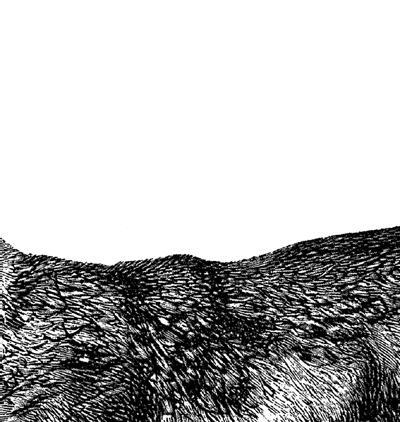






MAKE EXTRAORDINARY CONNECTIONS NETWORK AND BUILD RELATIONSHIPS WITH EXPERIMENTAL BIOLOGISTS FROM AROUND THE WORLD









THINK BIG TAKE PART IN CROSSDISCIPLINARY CONFERENCES AND SHARE INNOVATIVE AND INSPIRING DATA, IDEAS AND RESULTS











DO MORE APPLY FOR GRANTS AND SPONSORSHIP TO INCREASE YOUR OPPORTUNITIES


FAST TRACK YOUR CAREER ACCESS JOURNALS, EDUCATION AND TRAINING SUPPORT